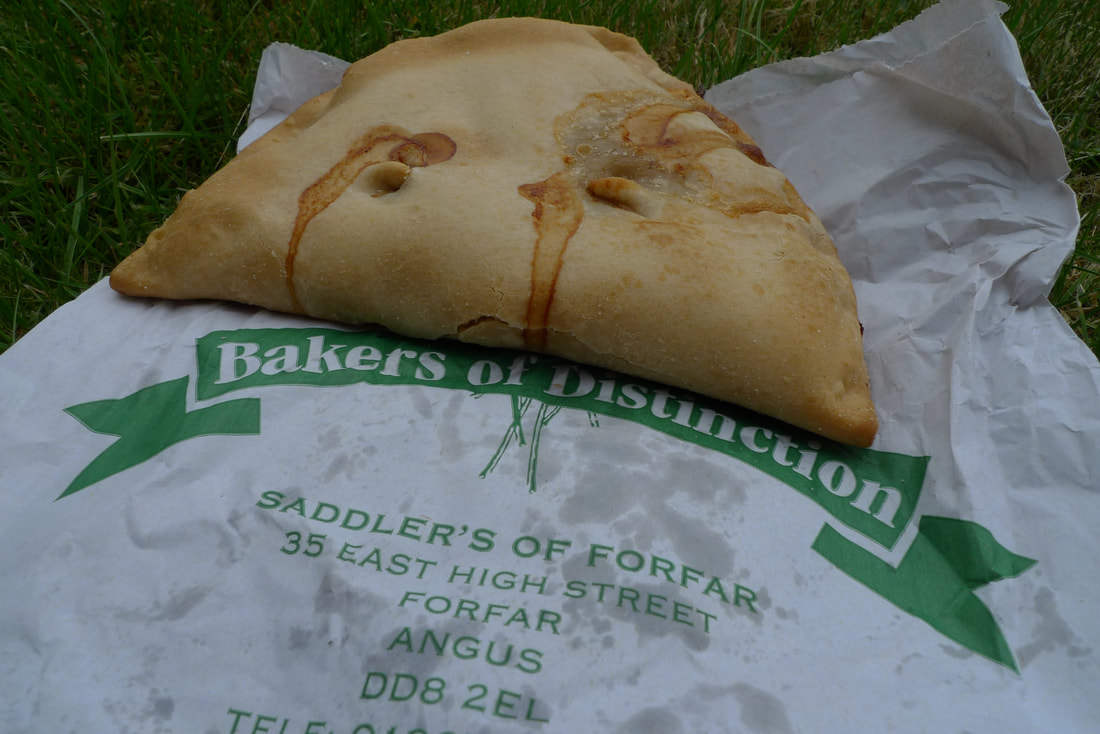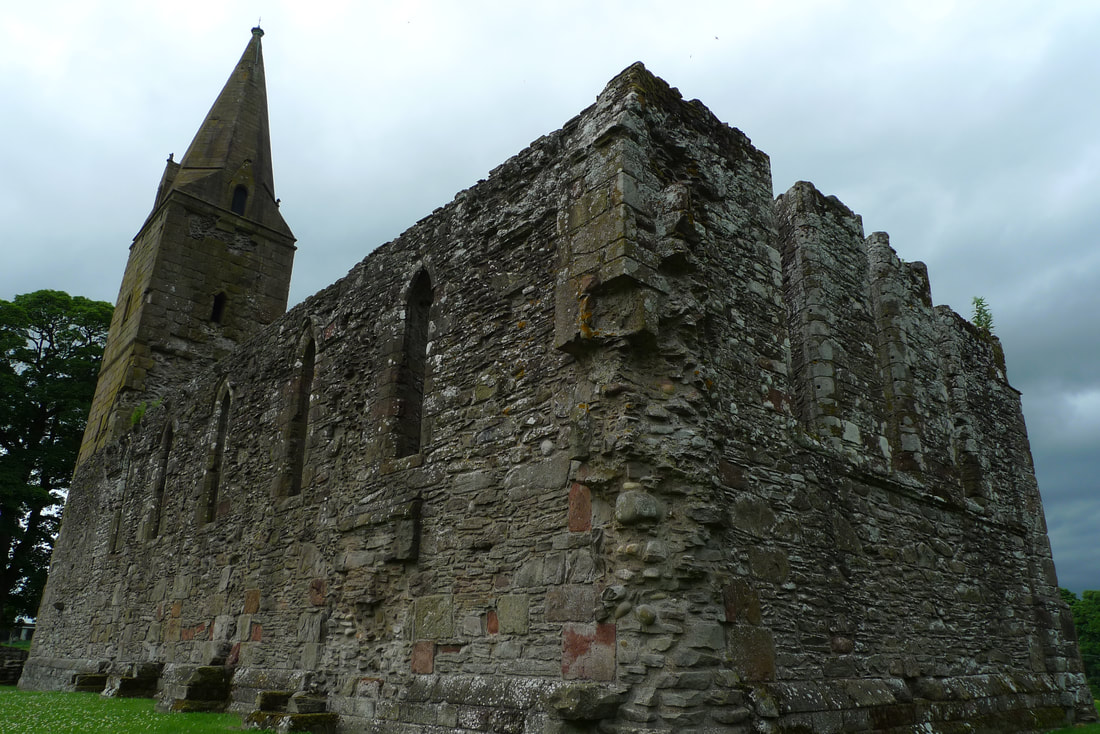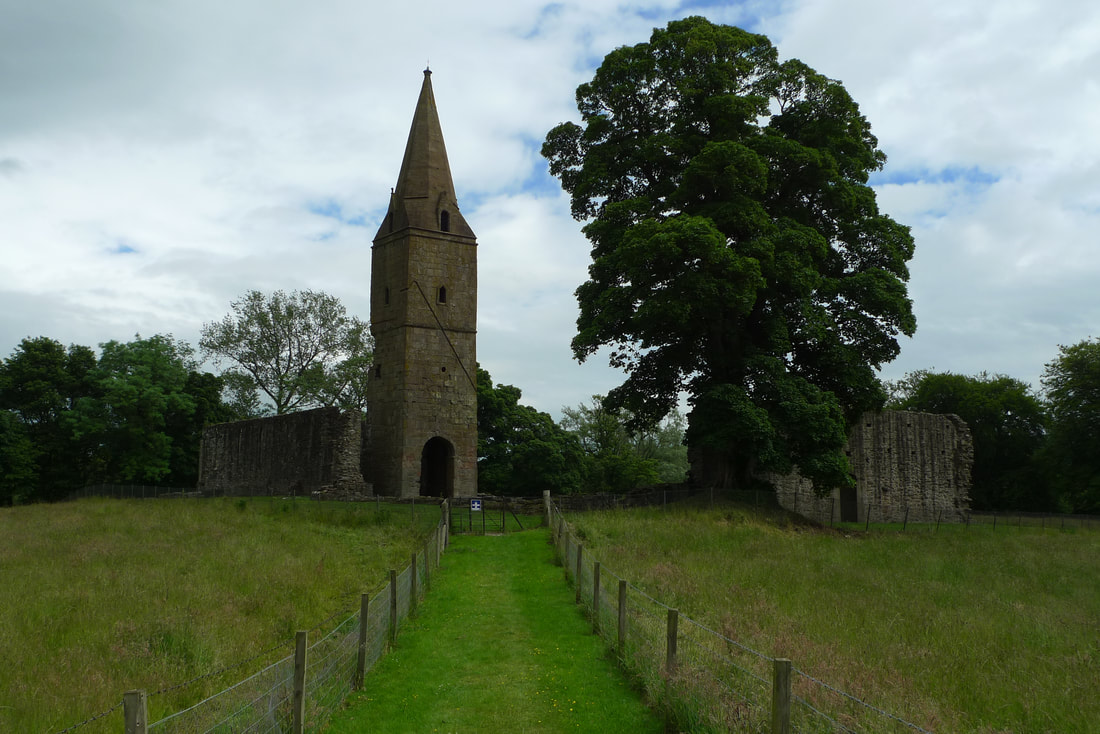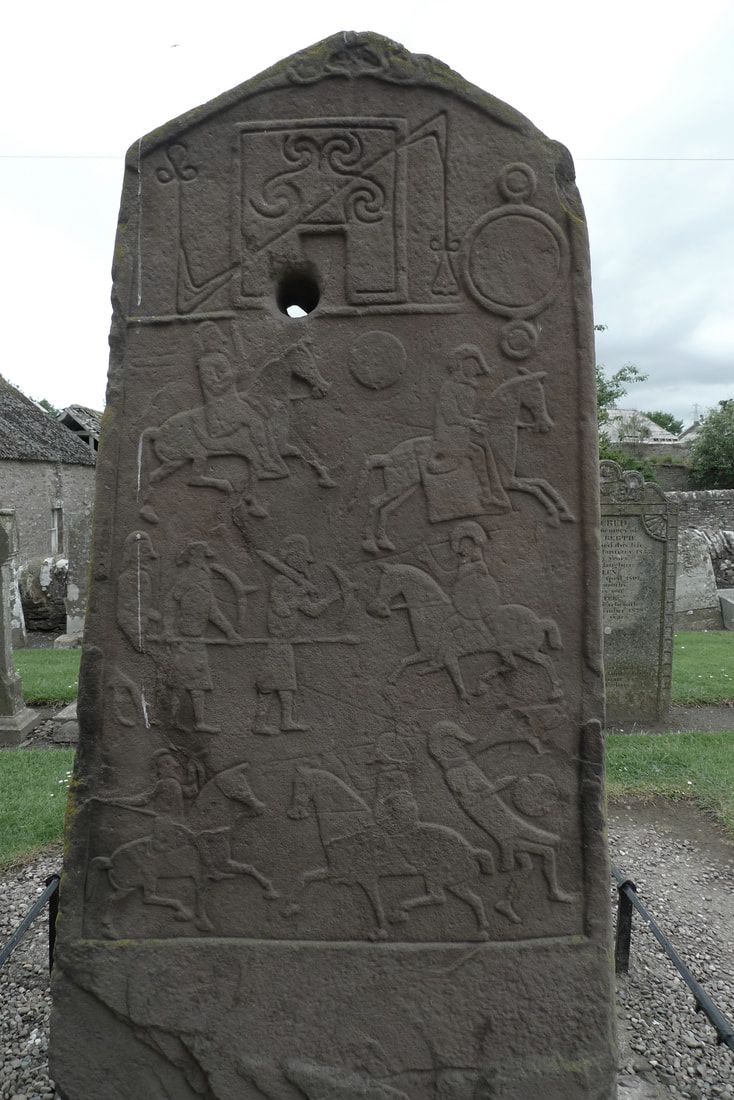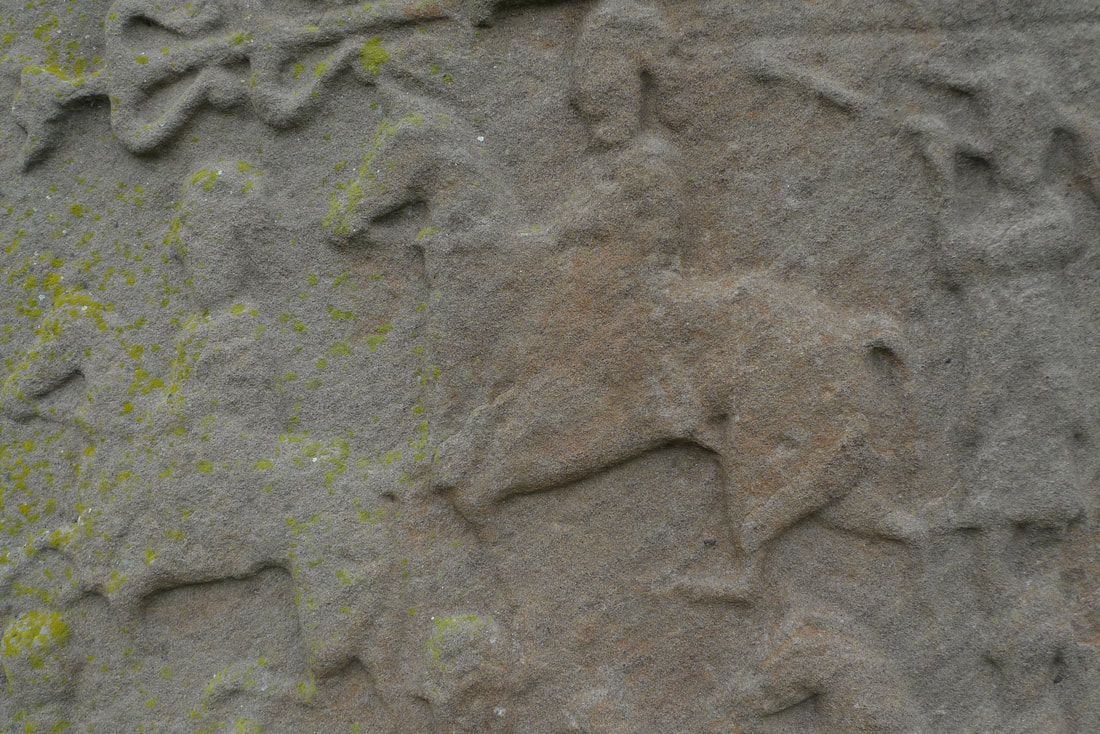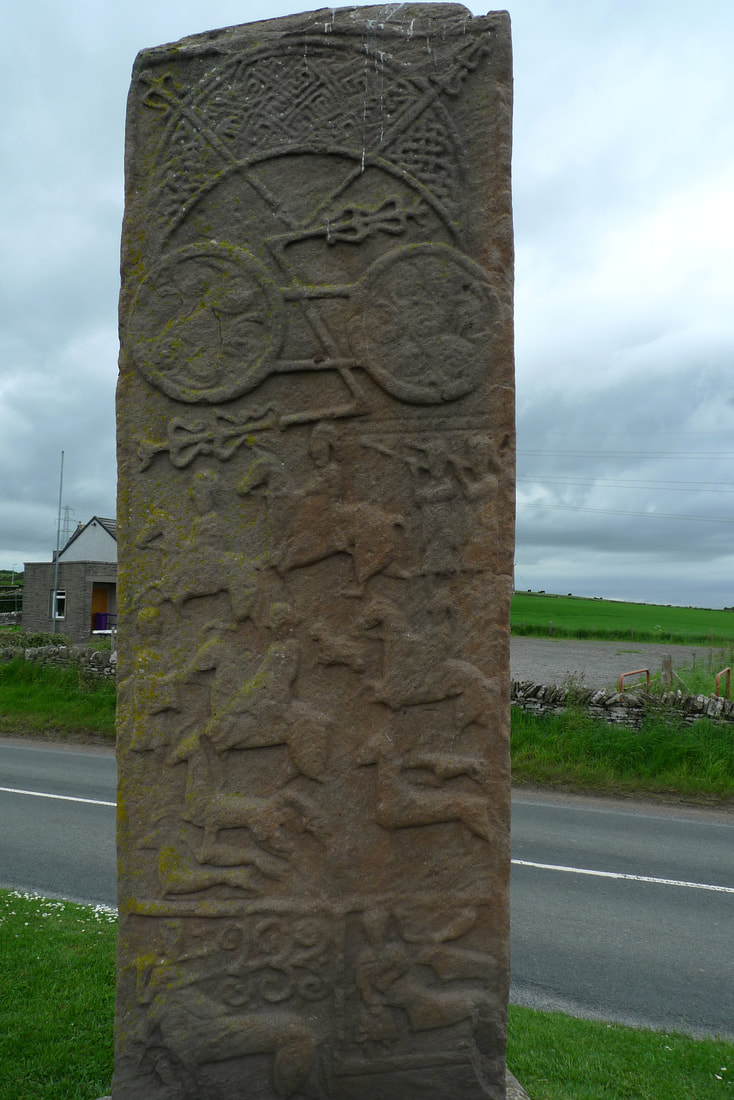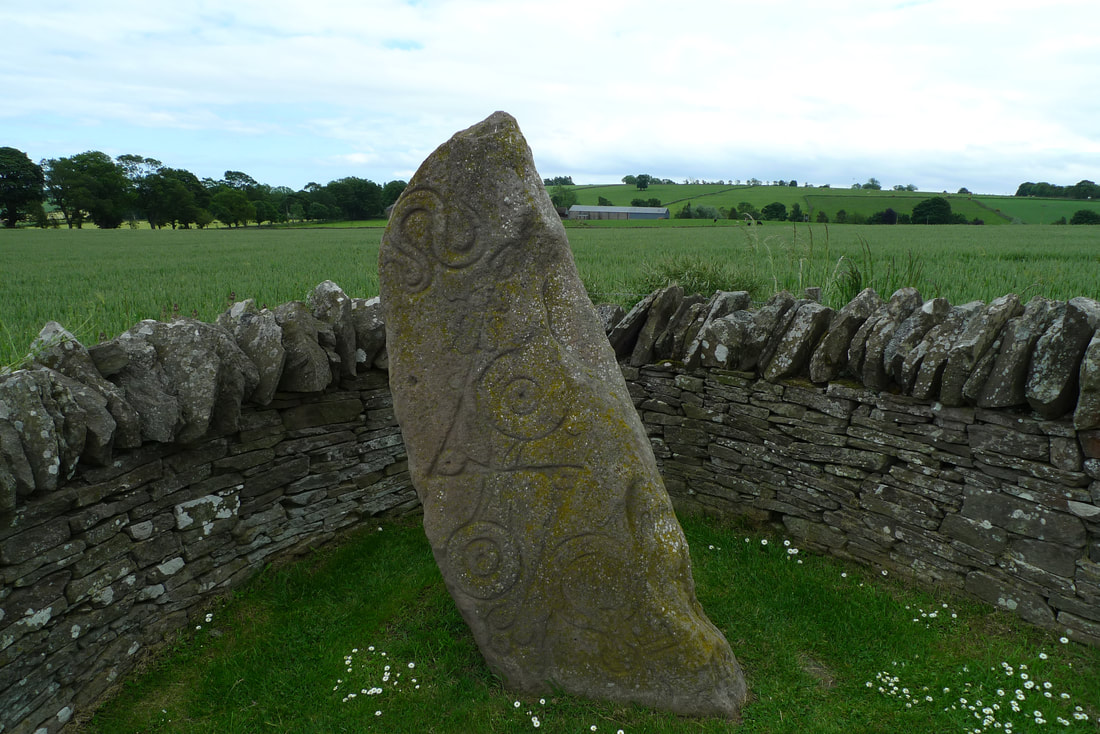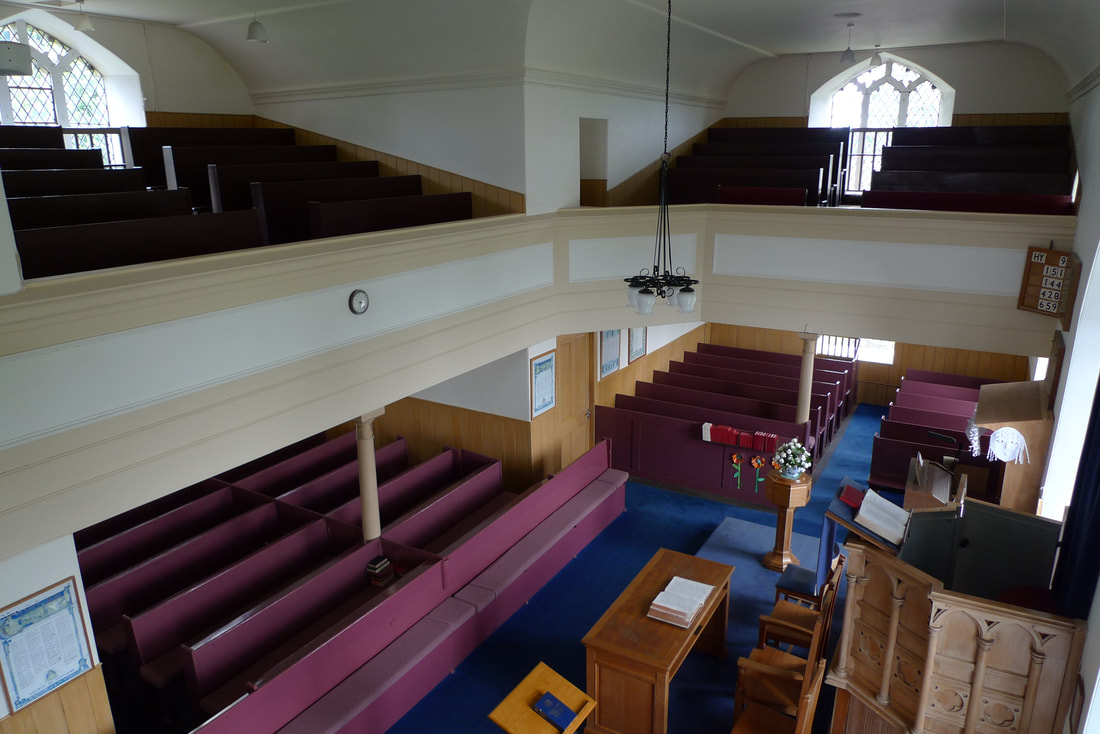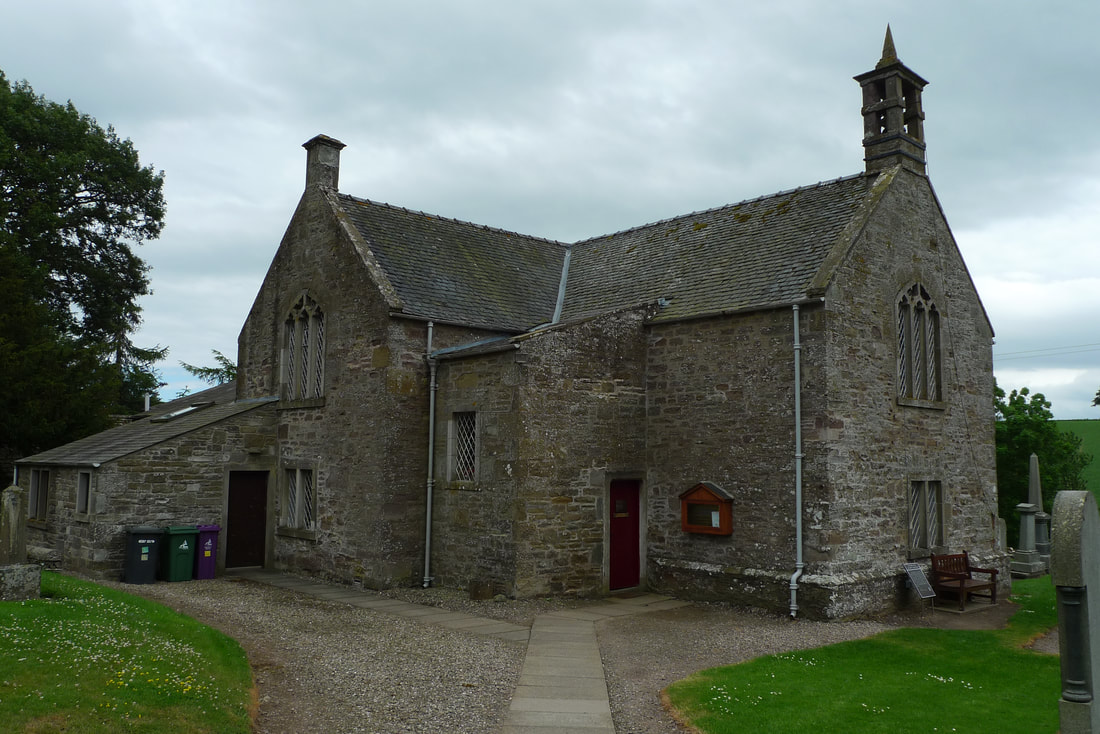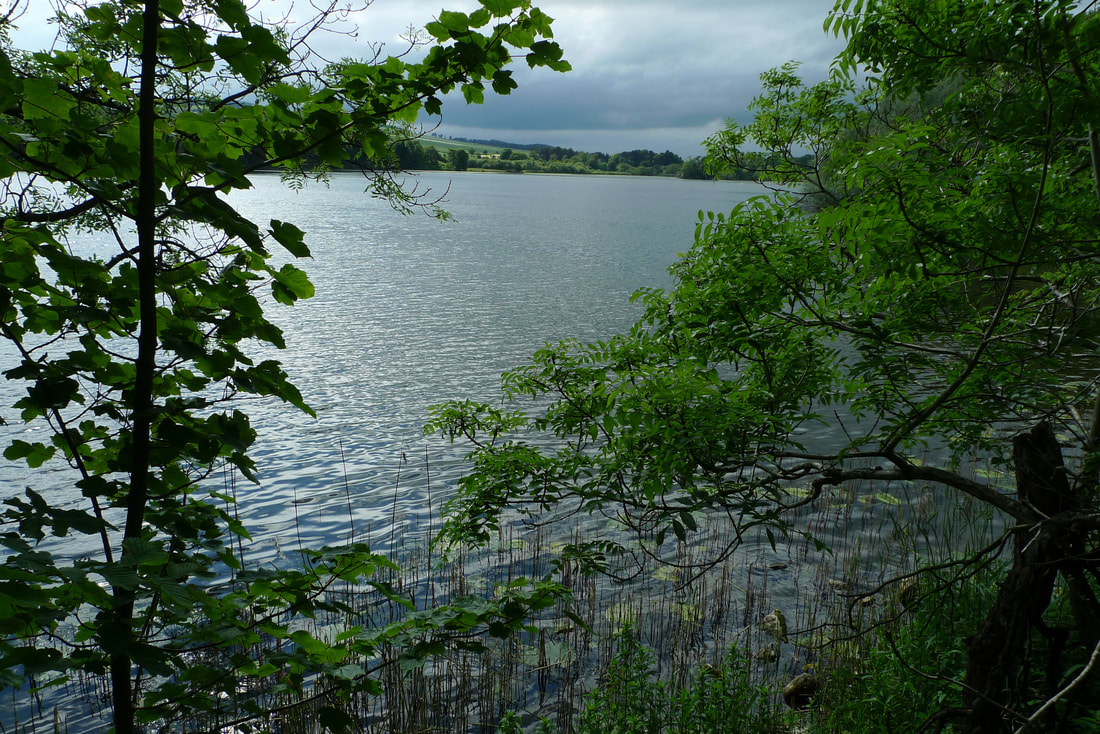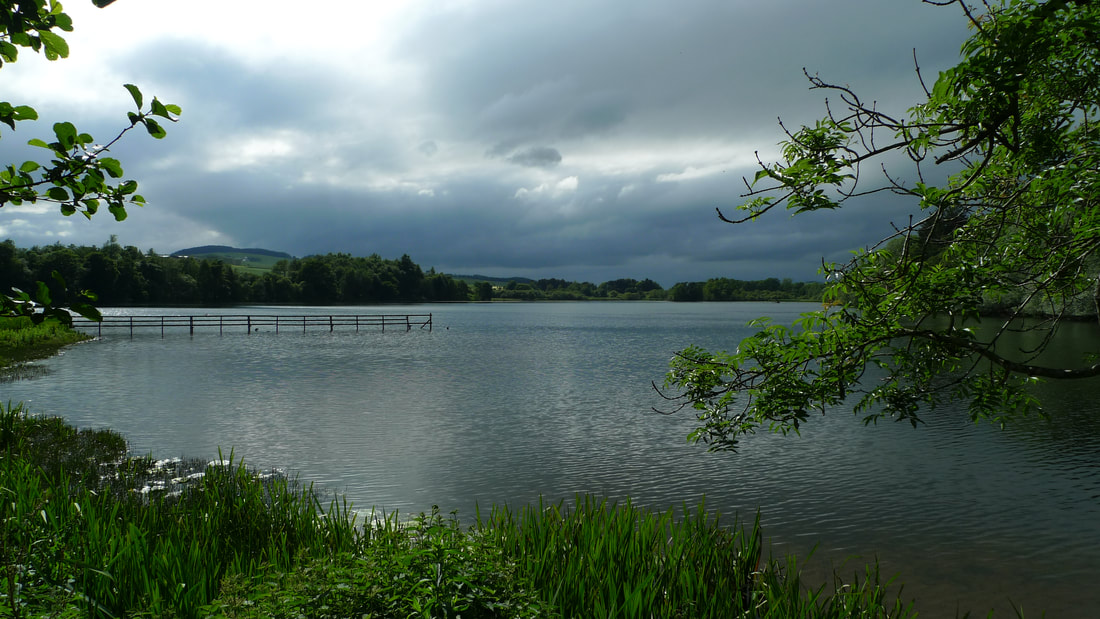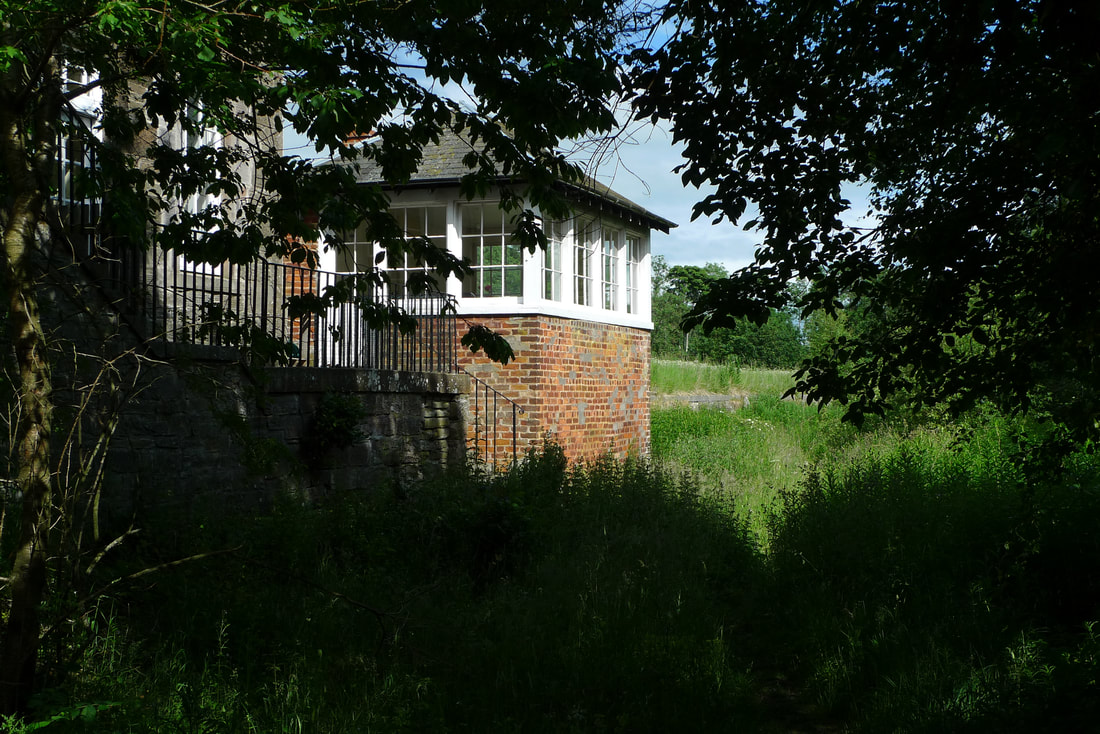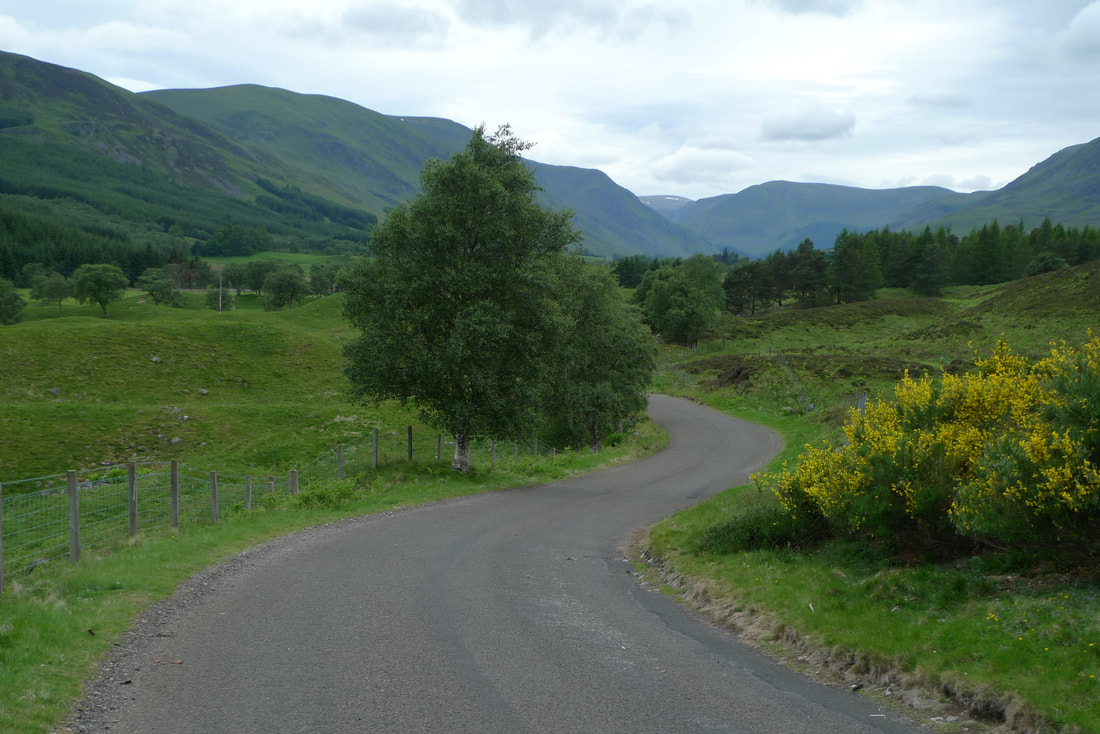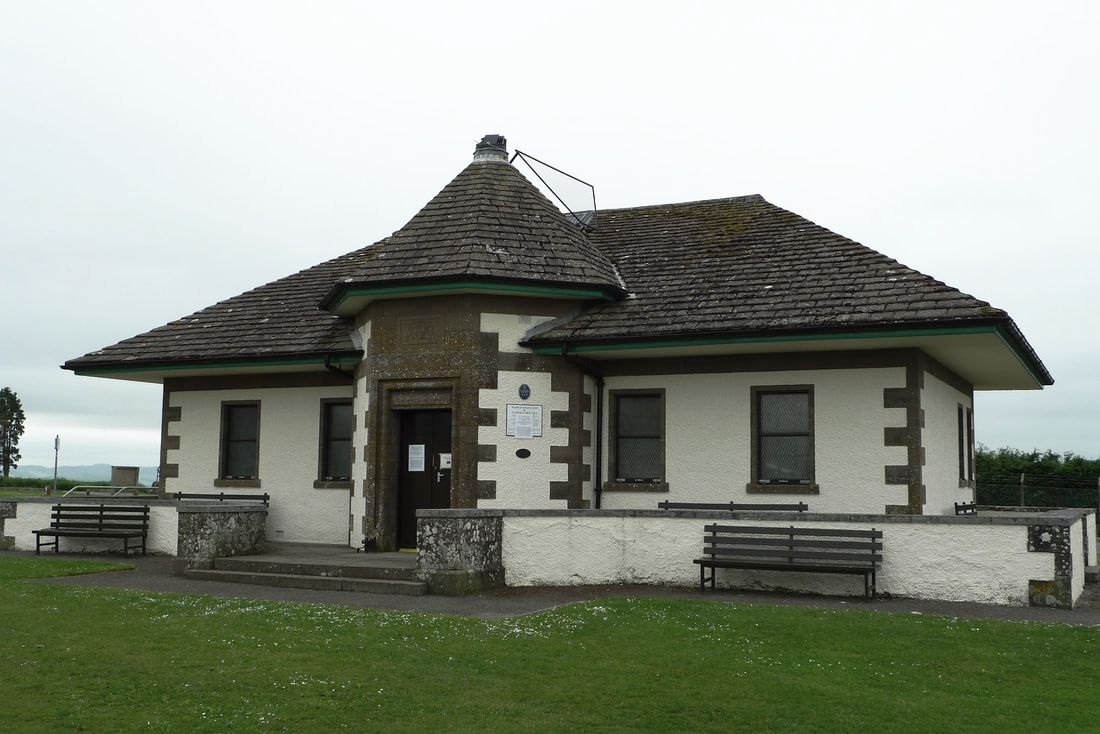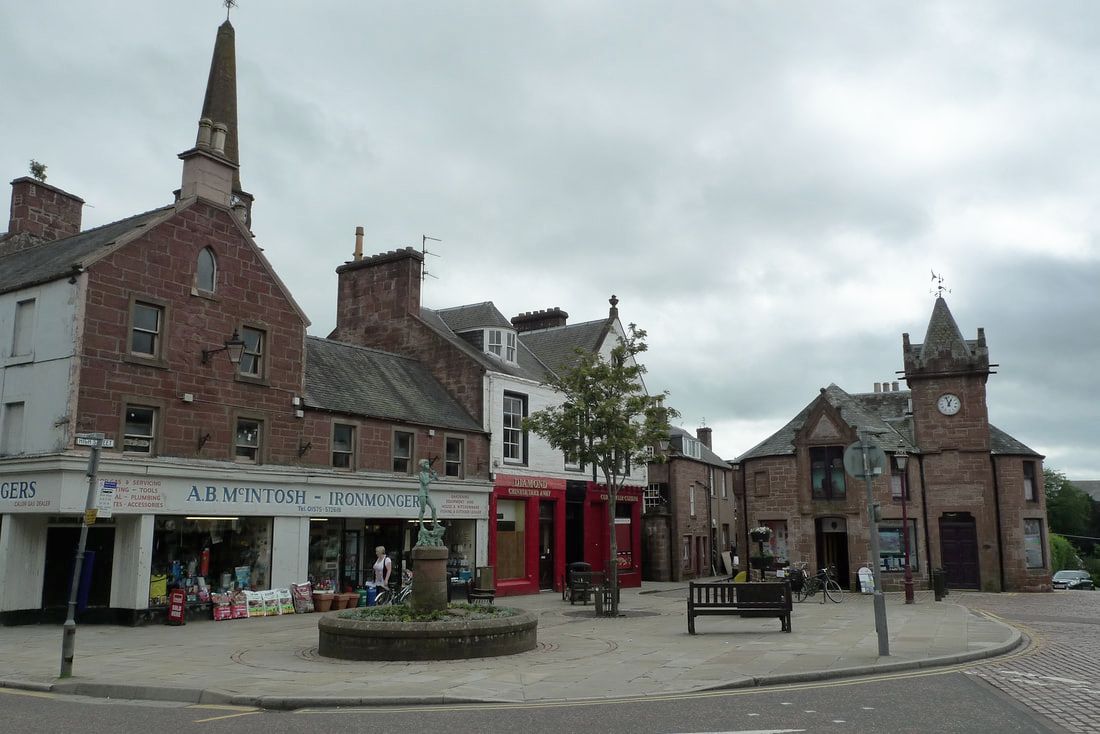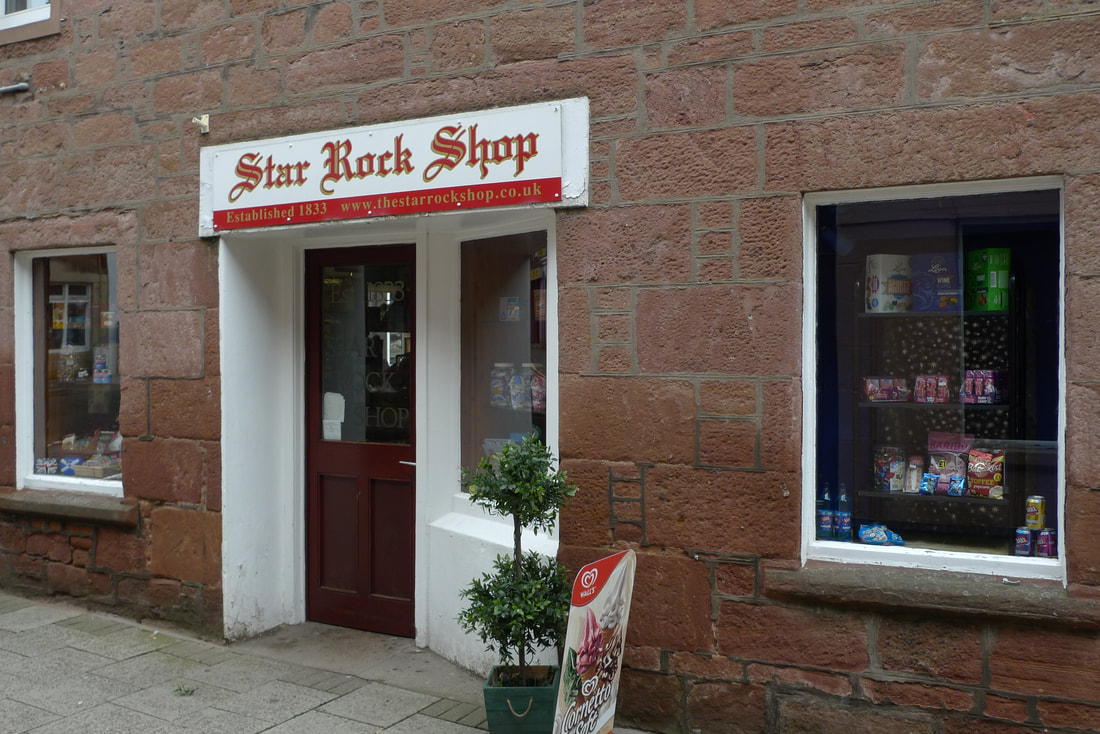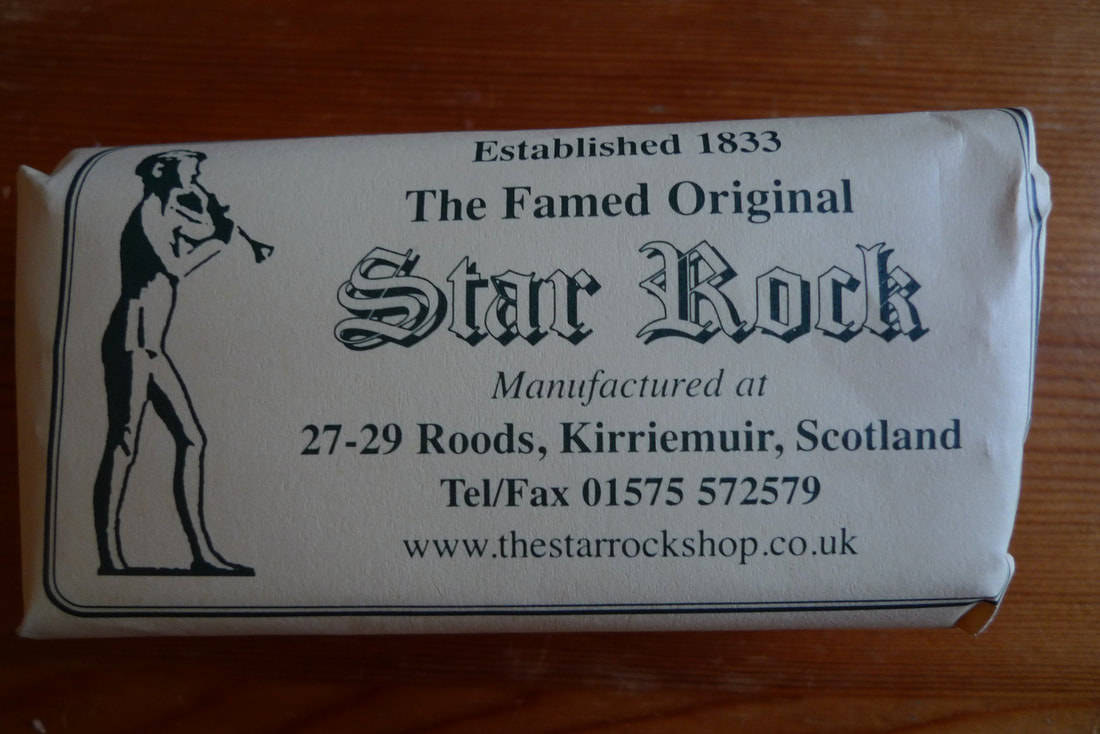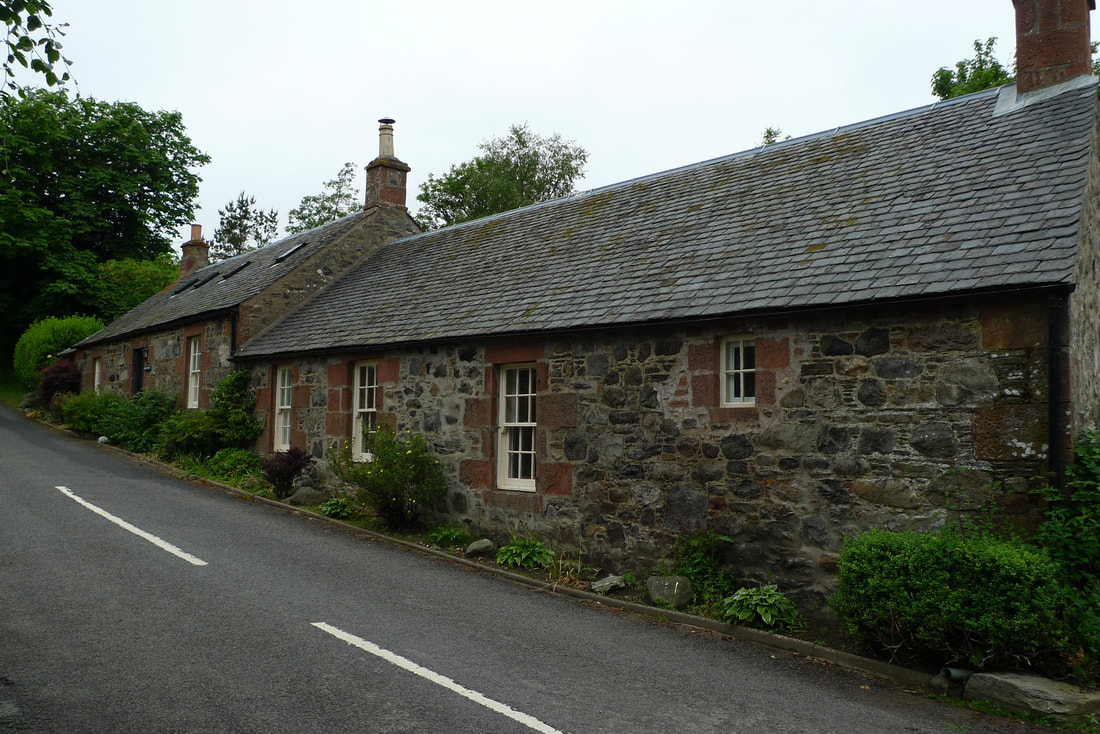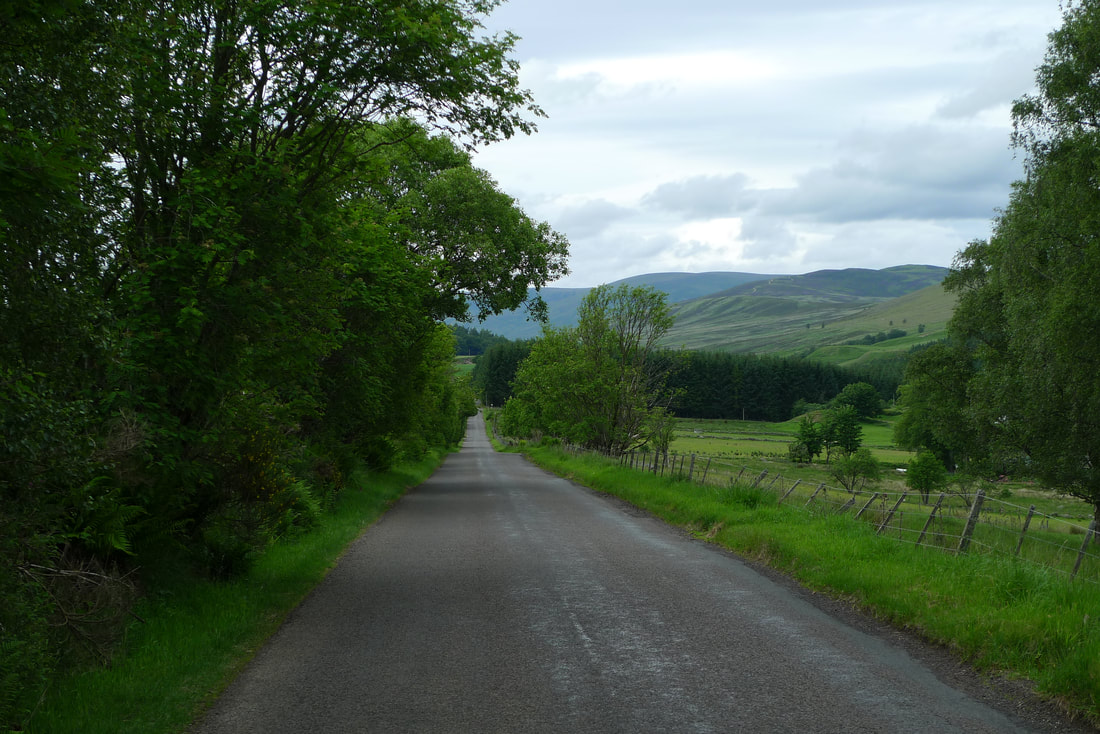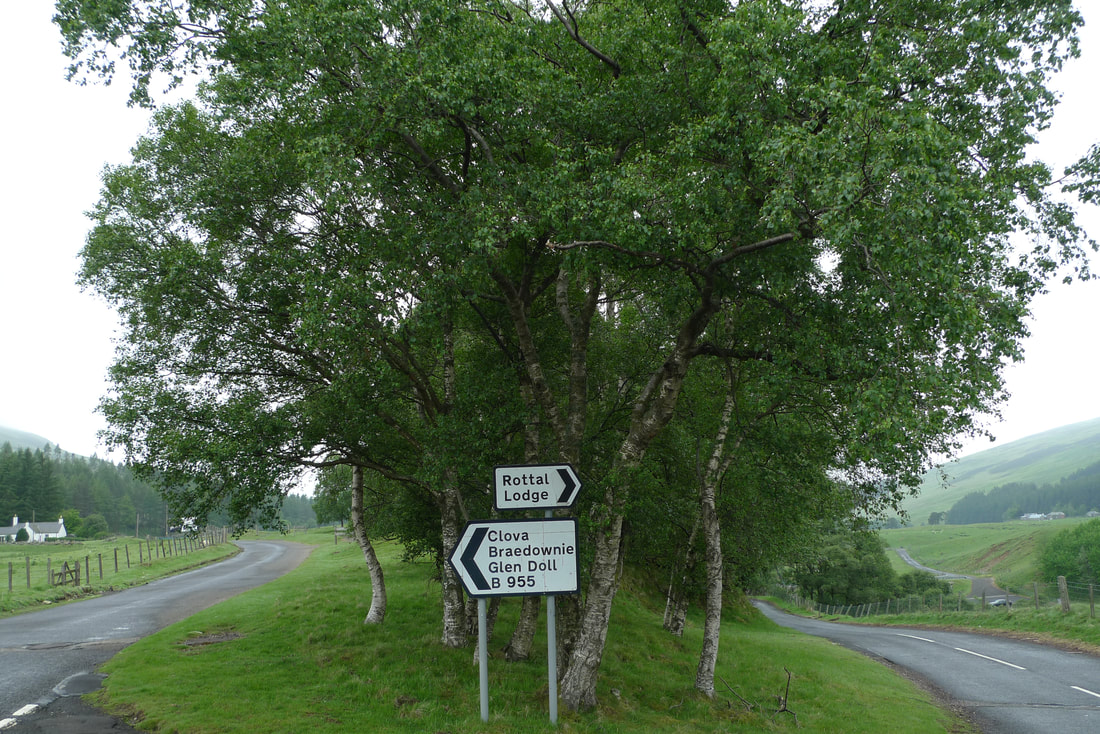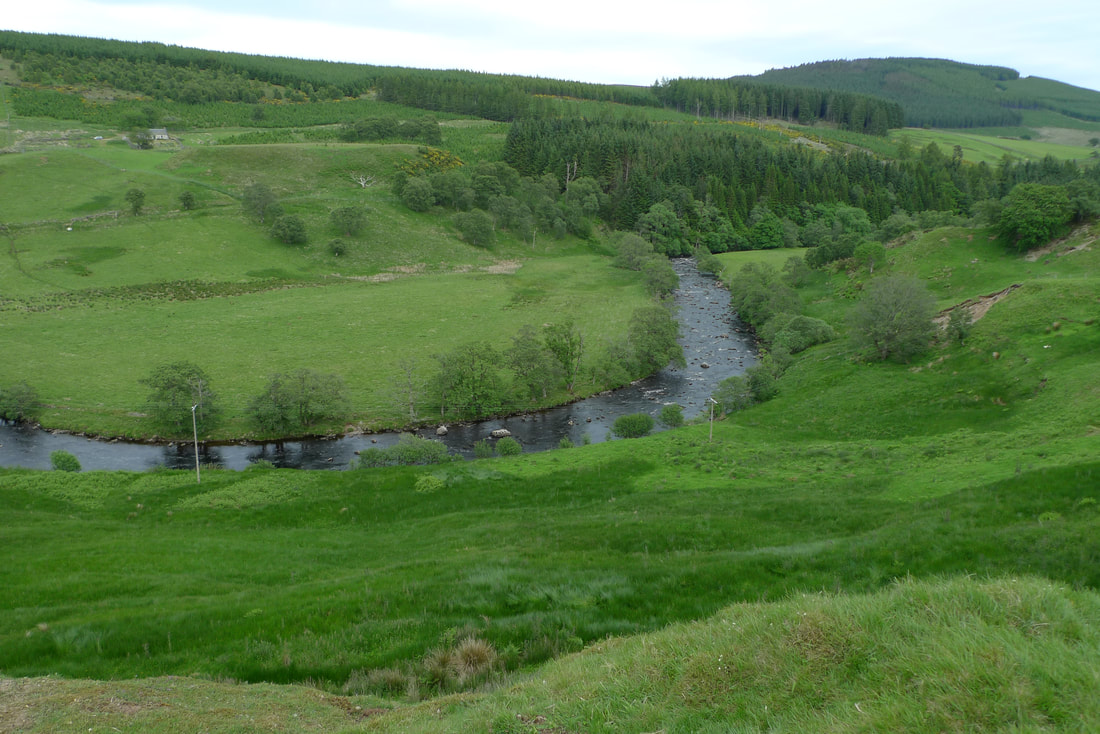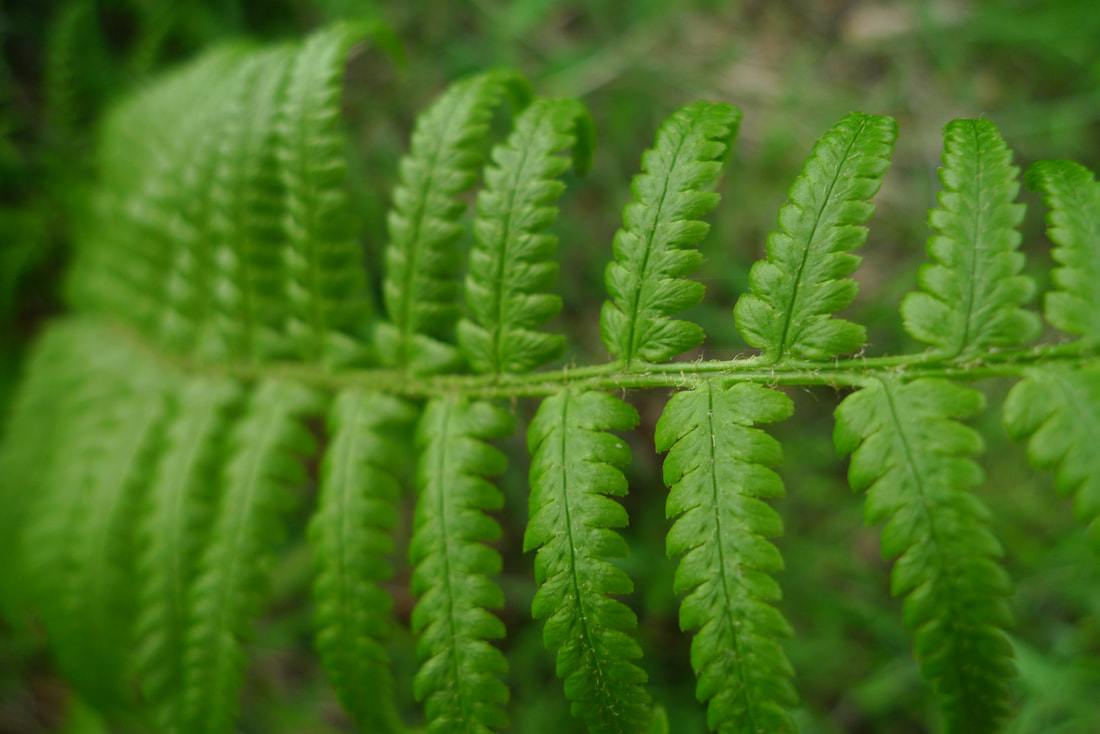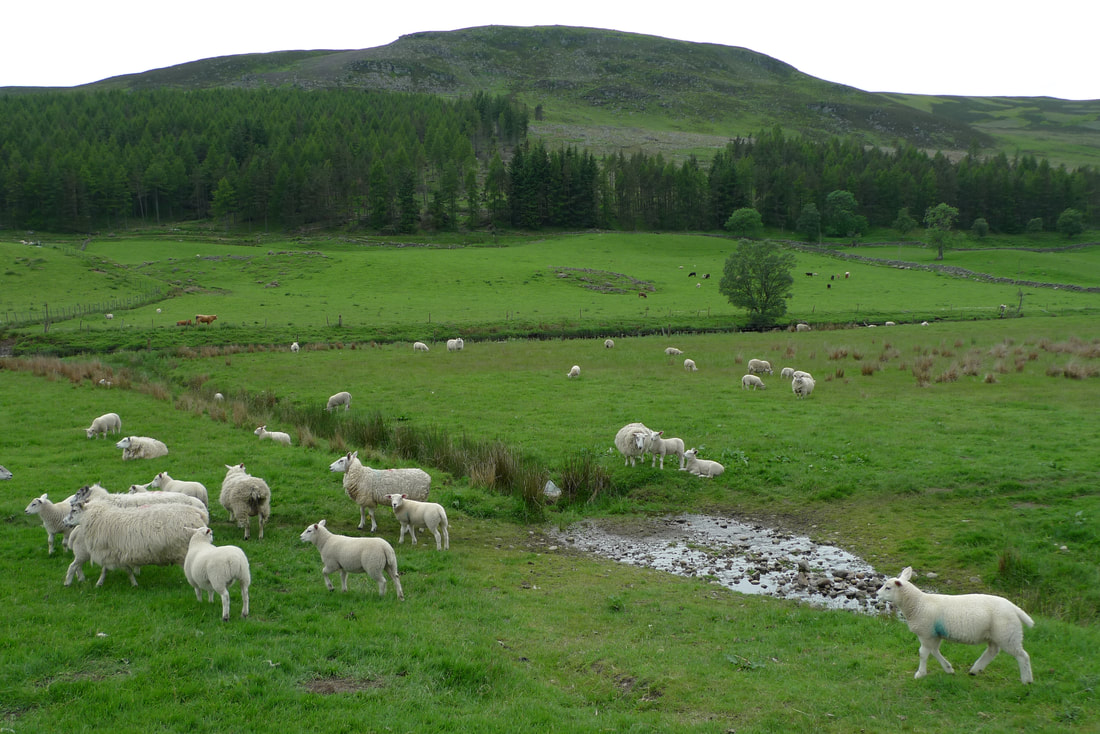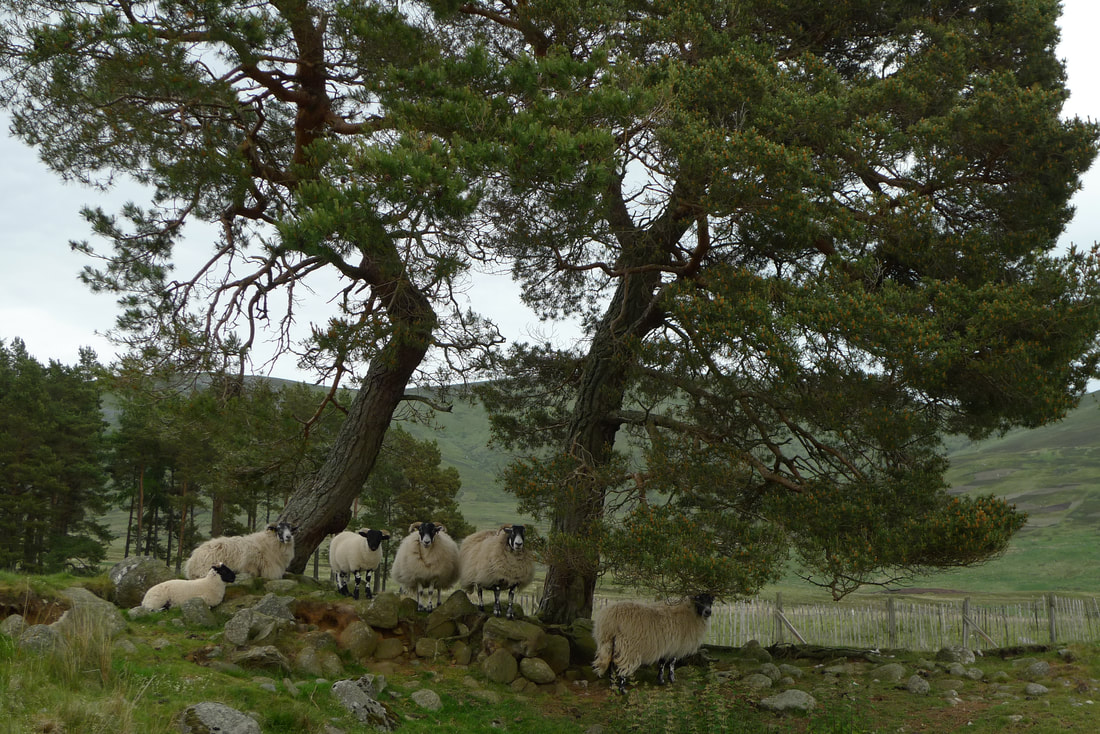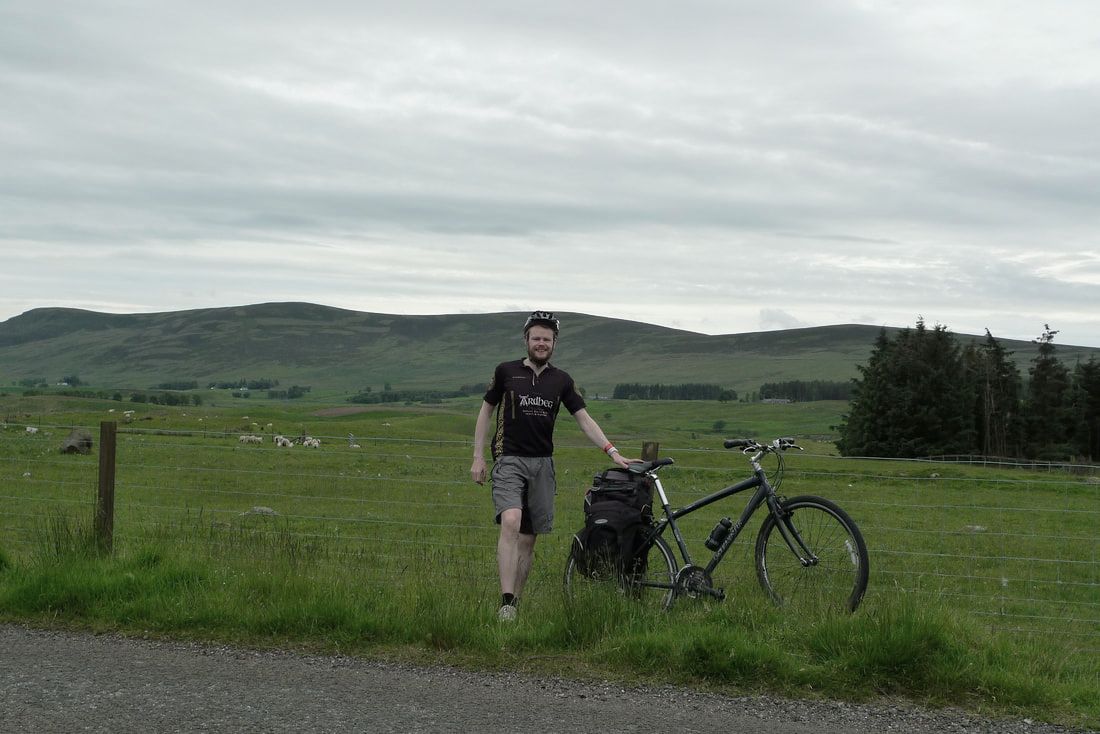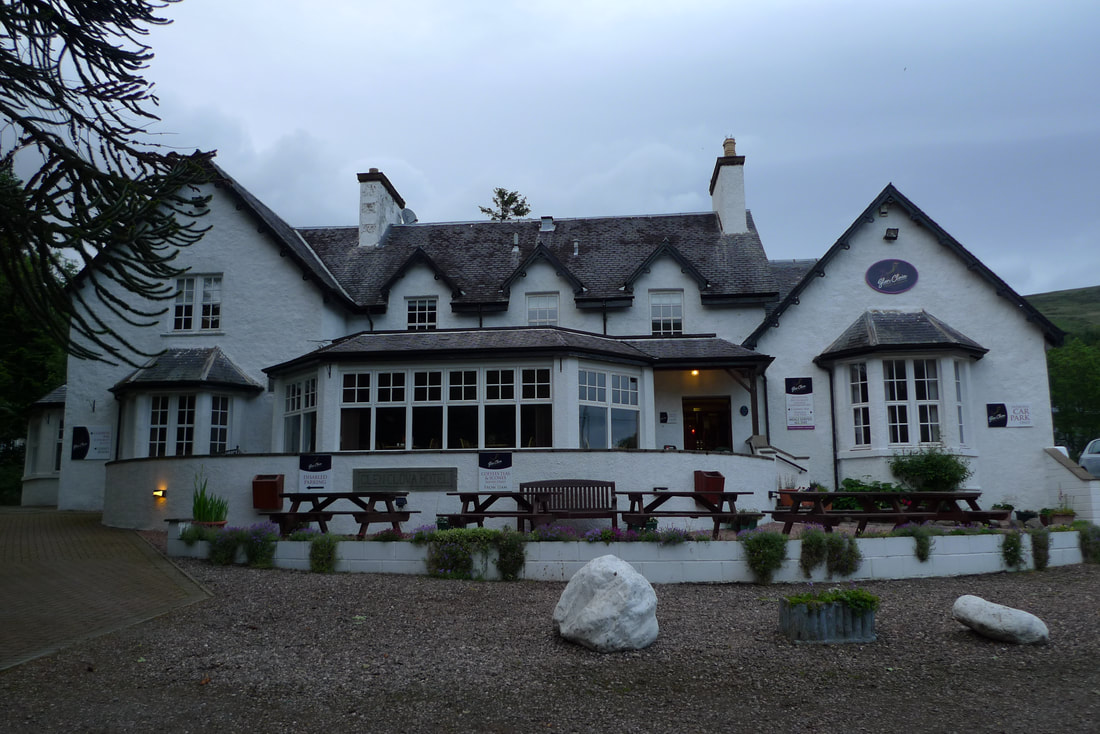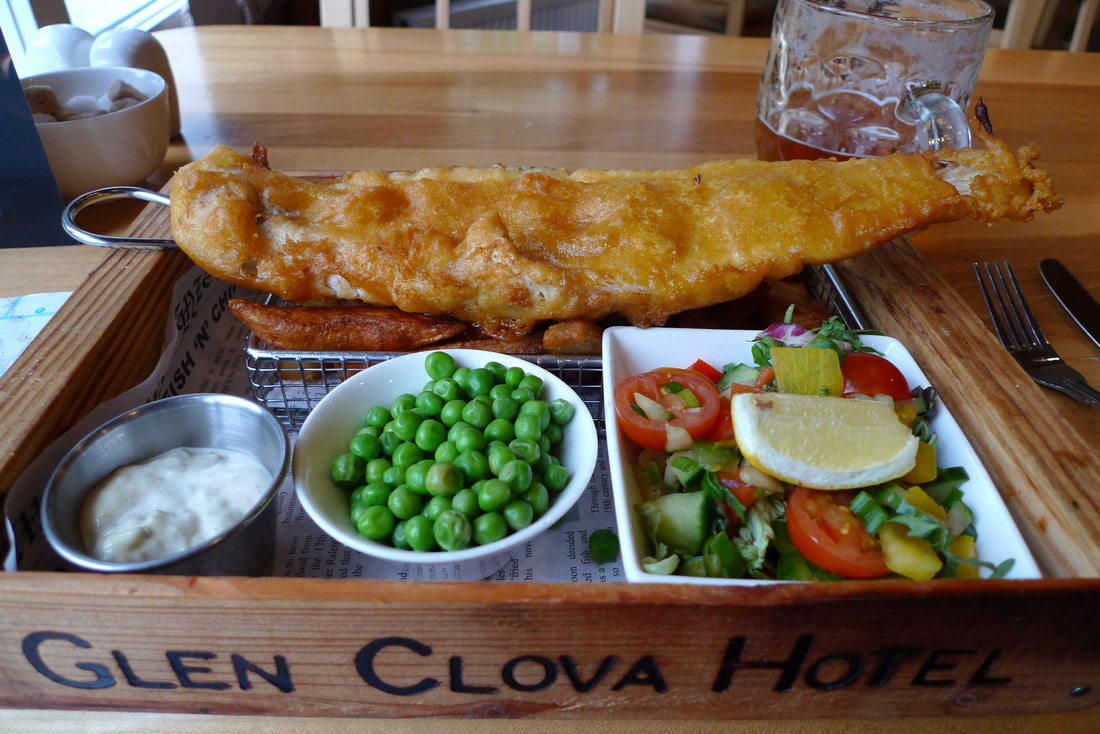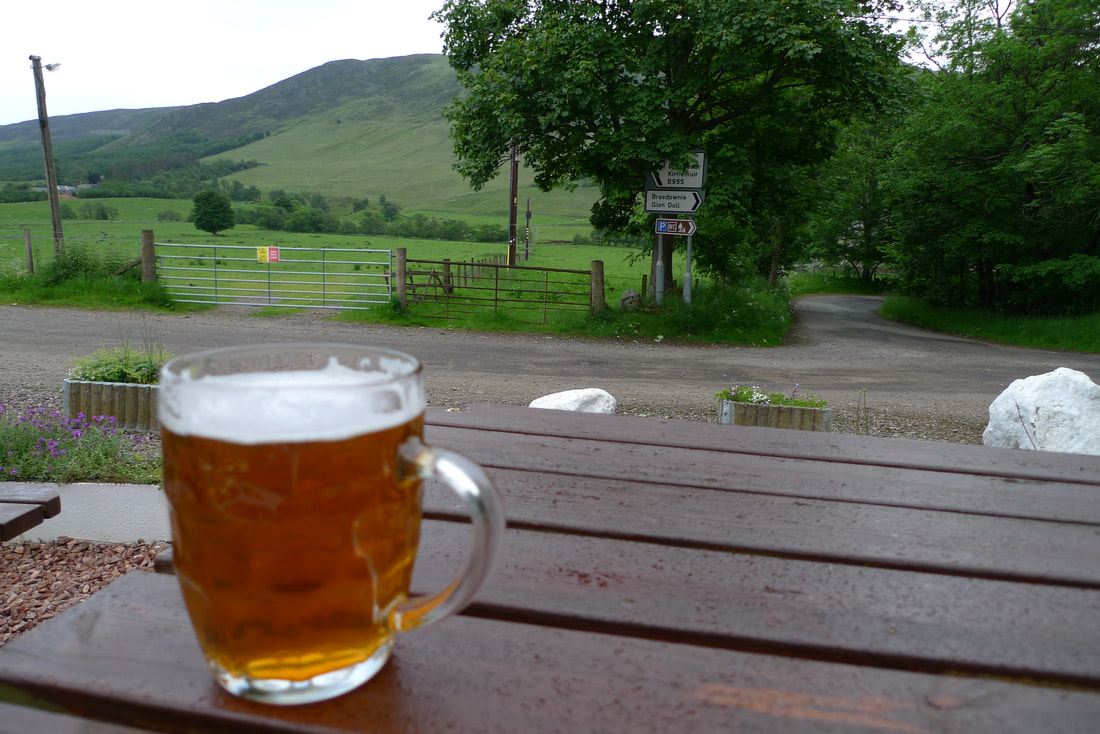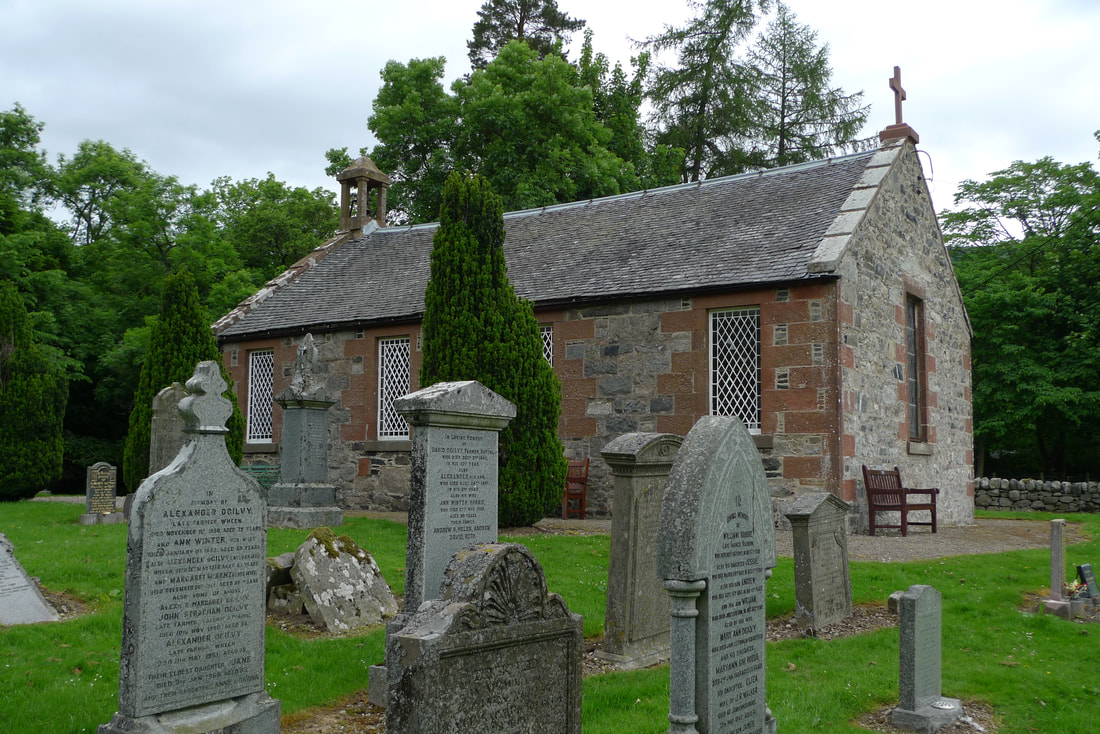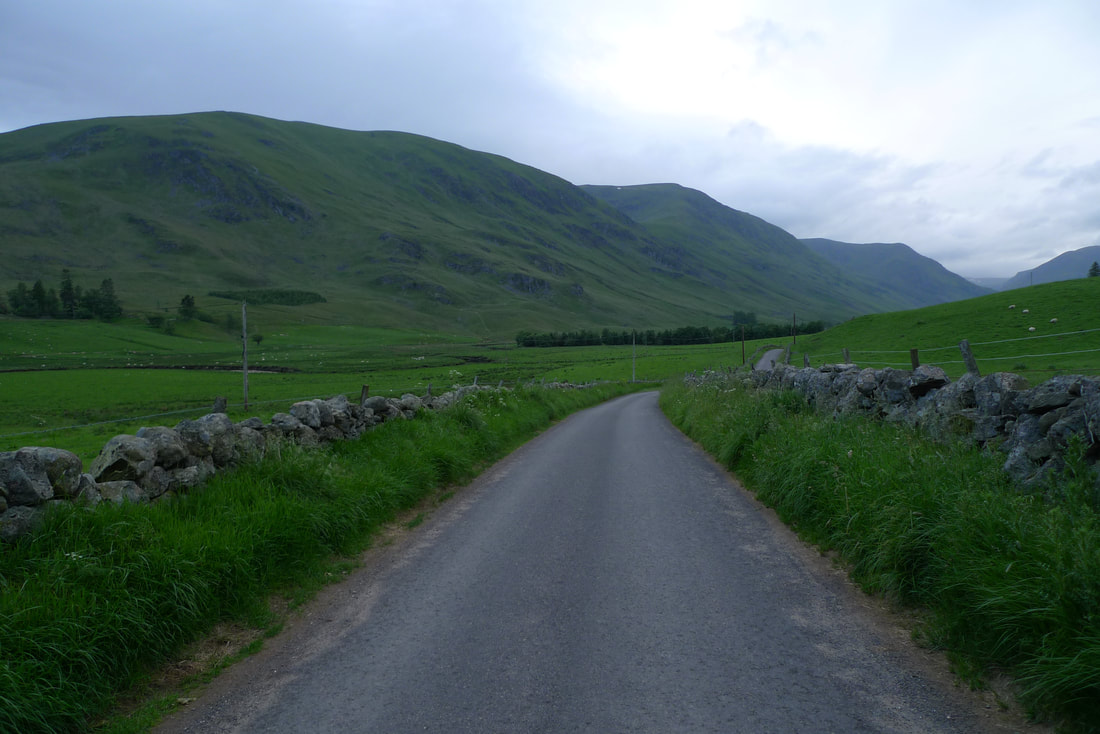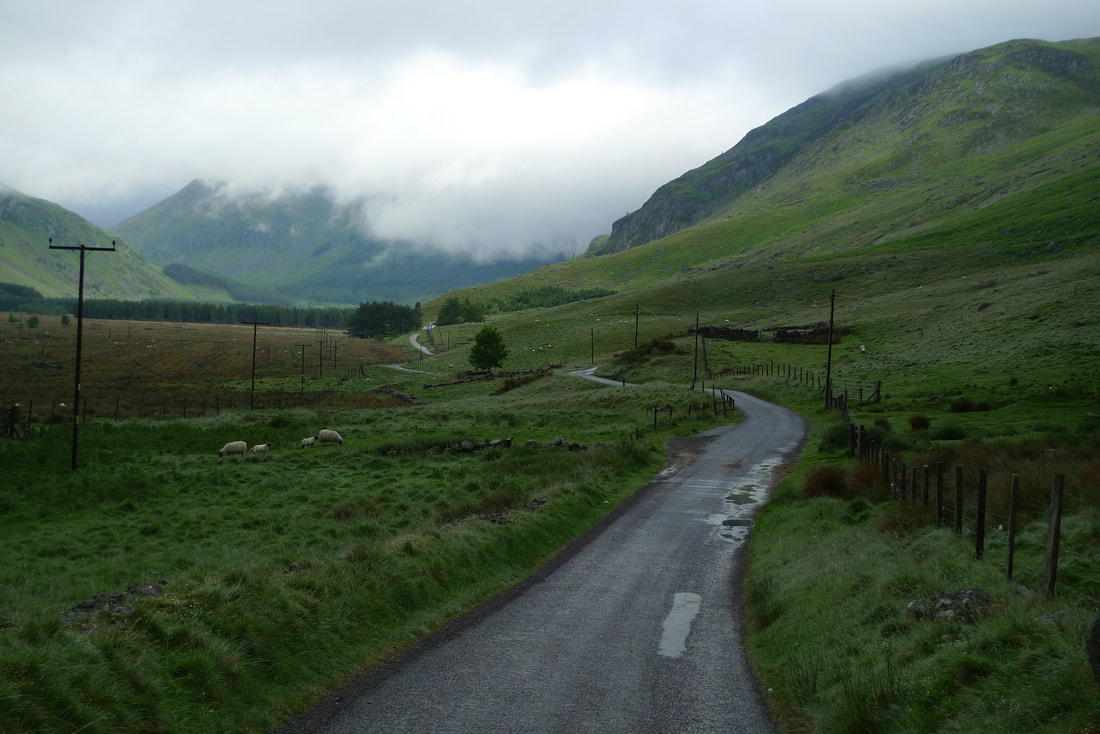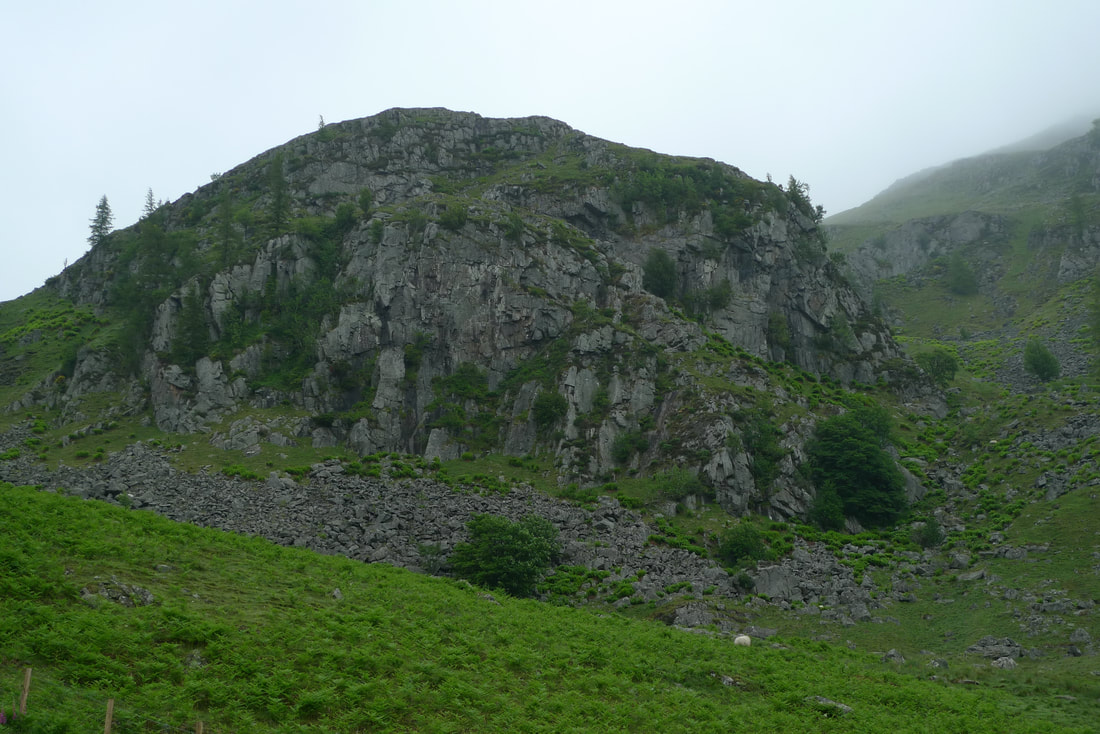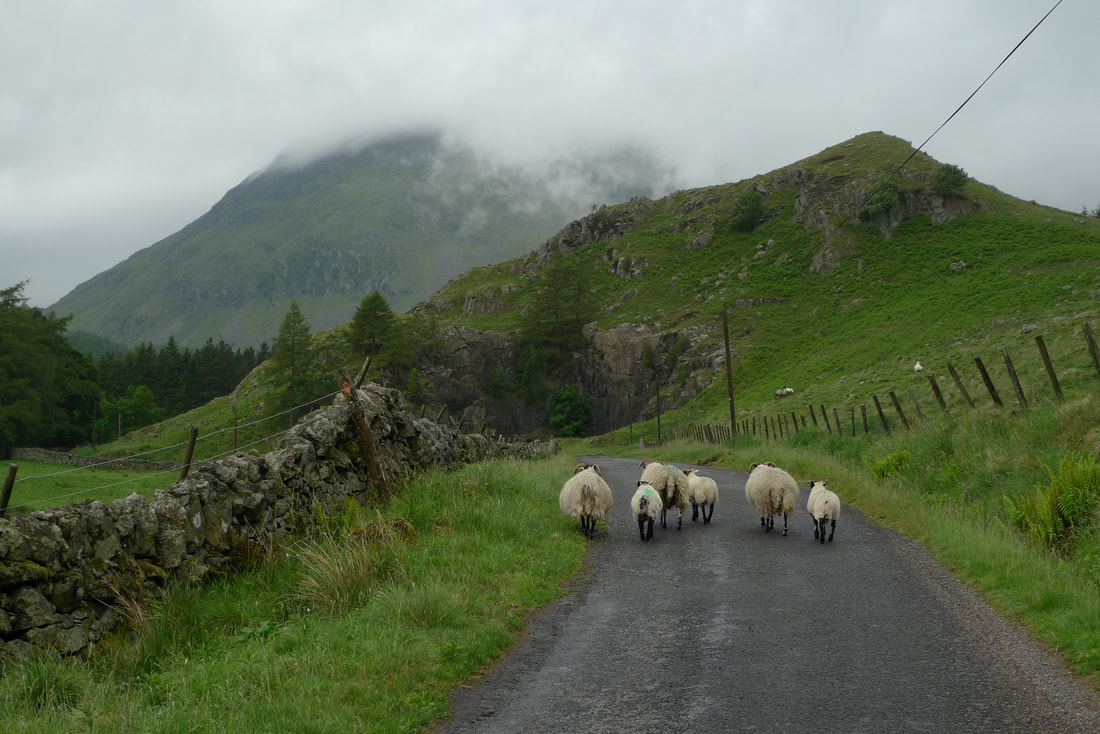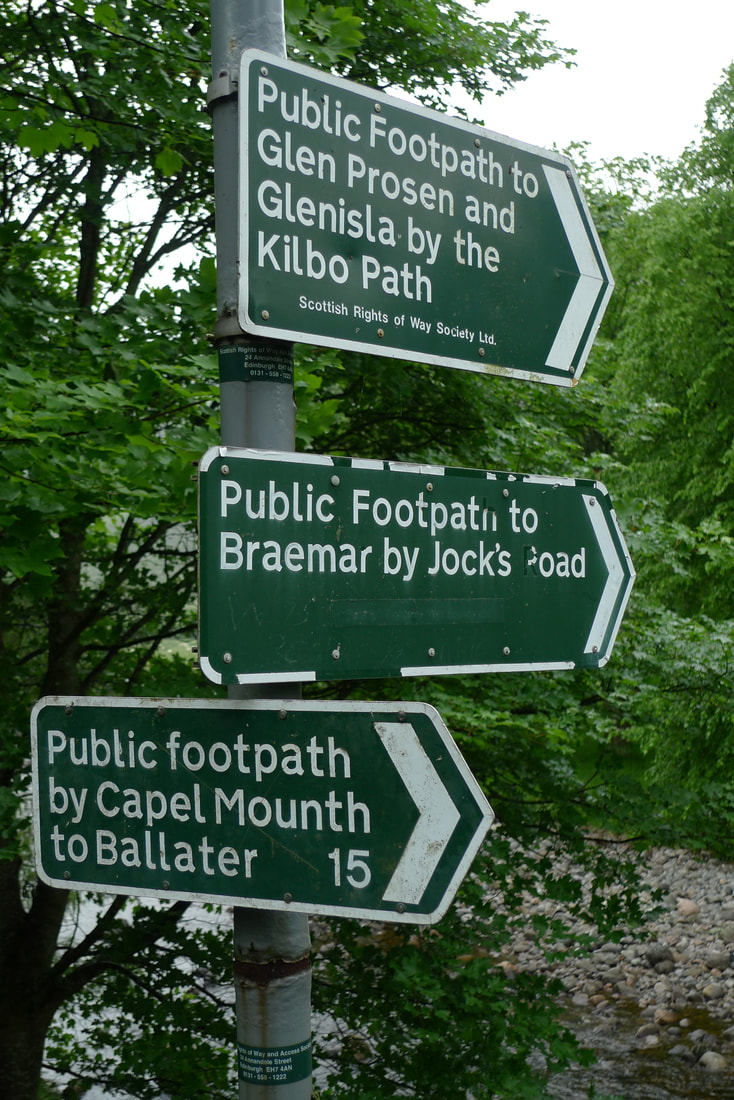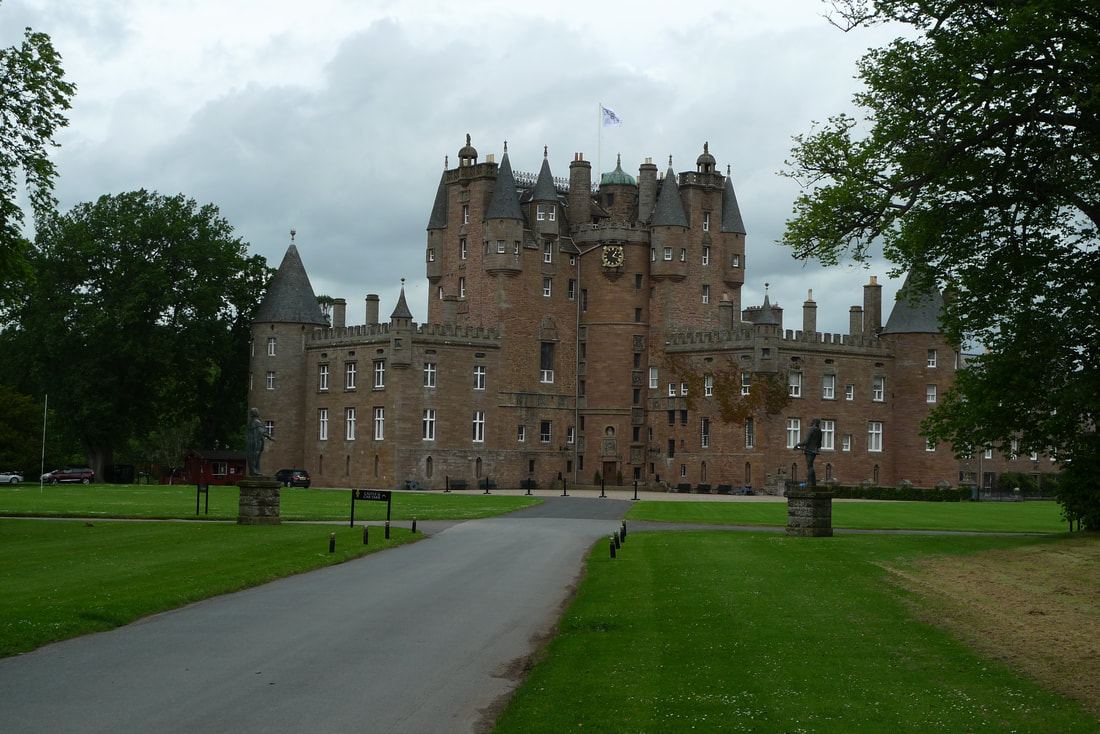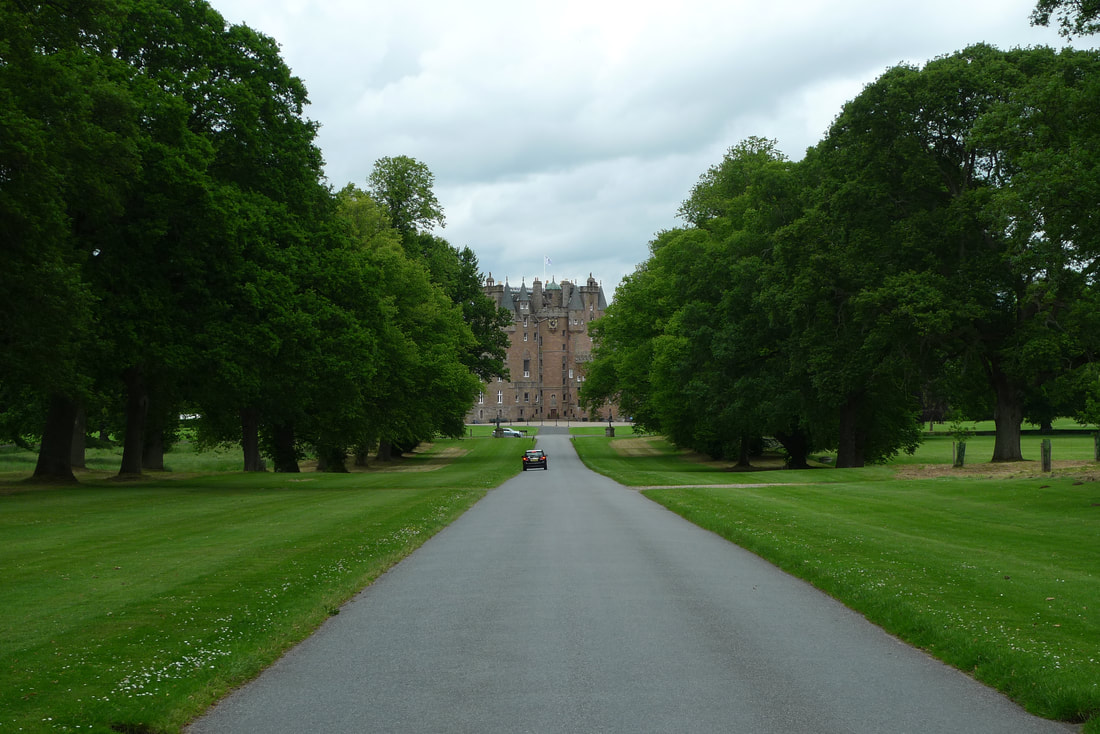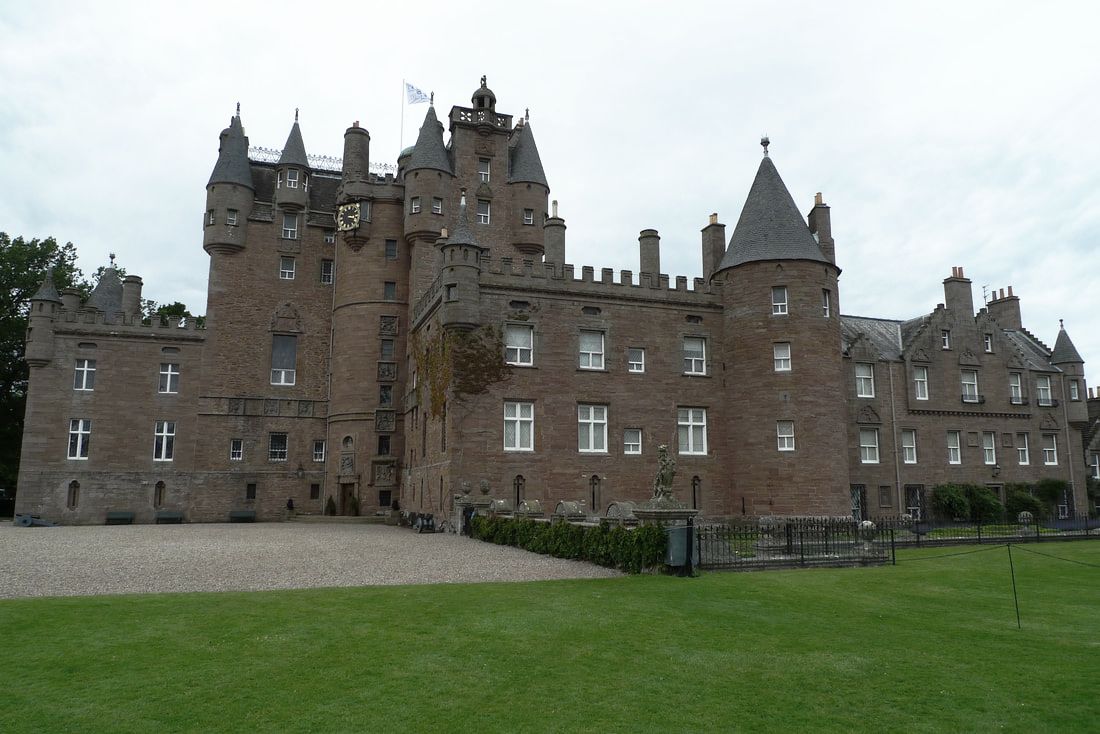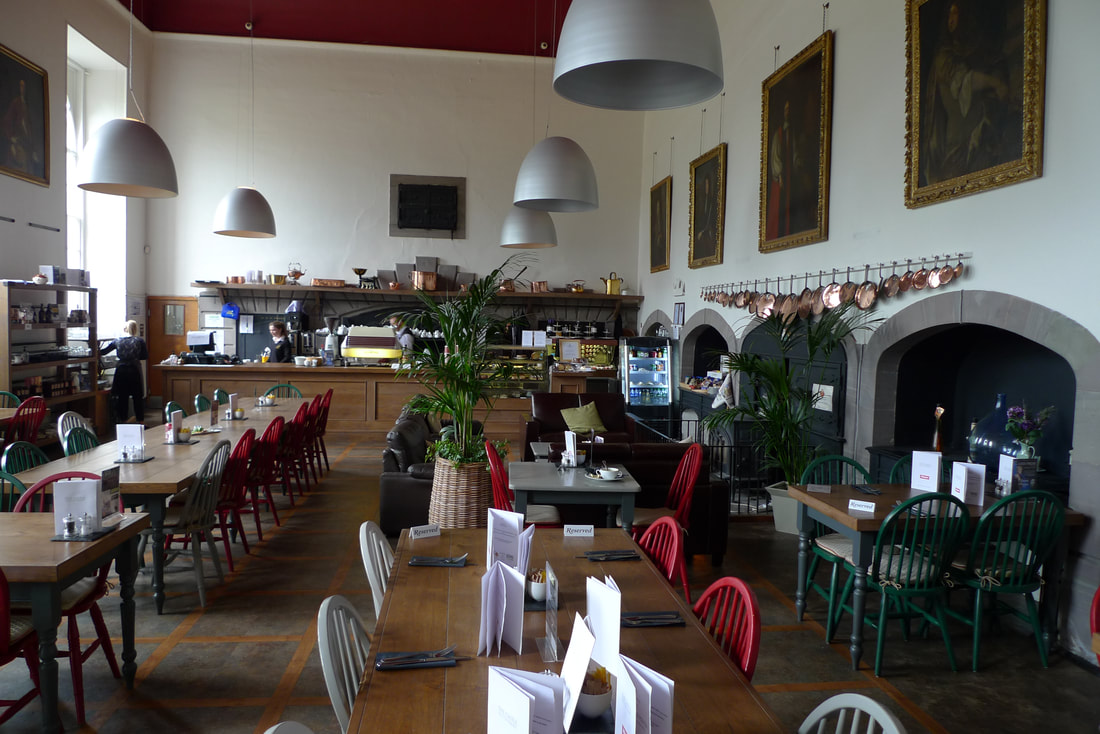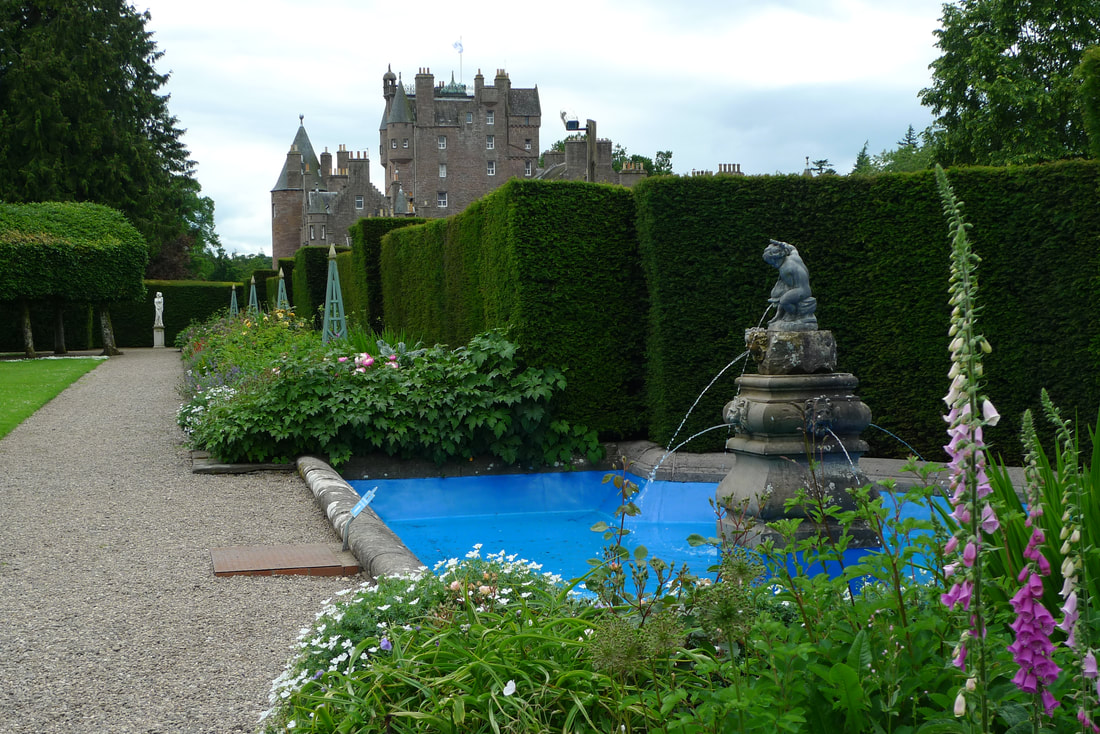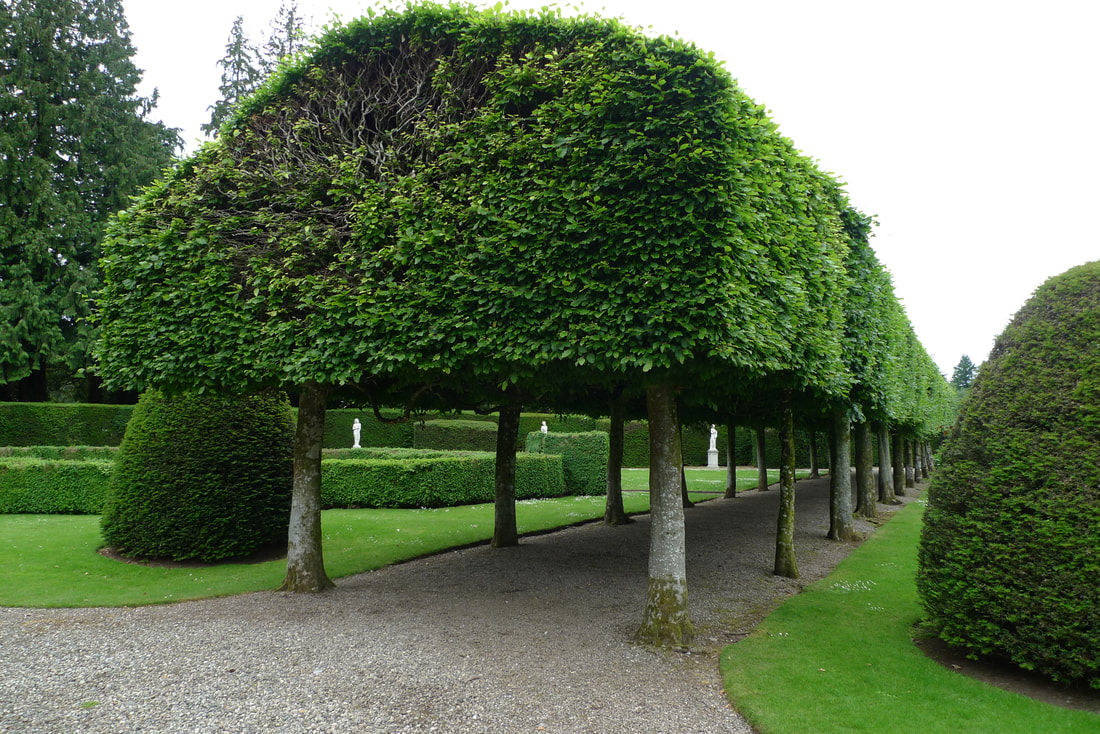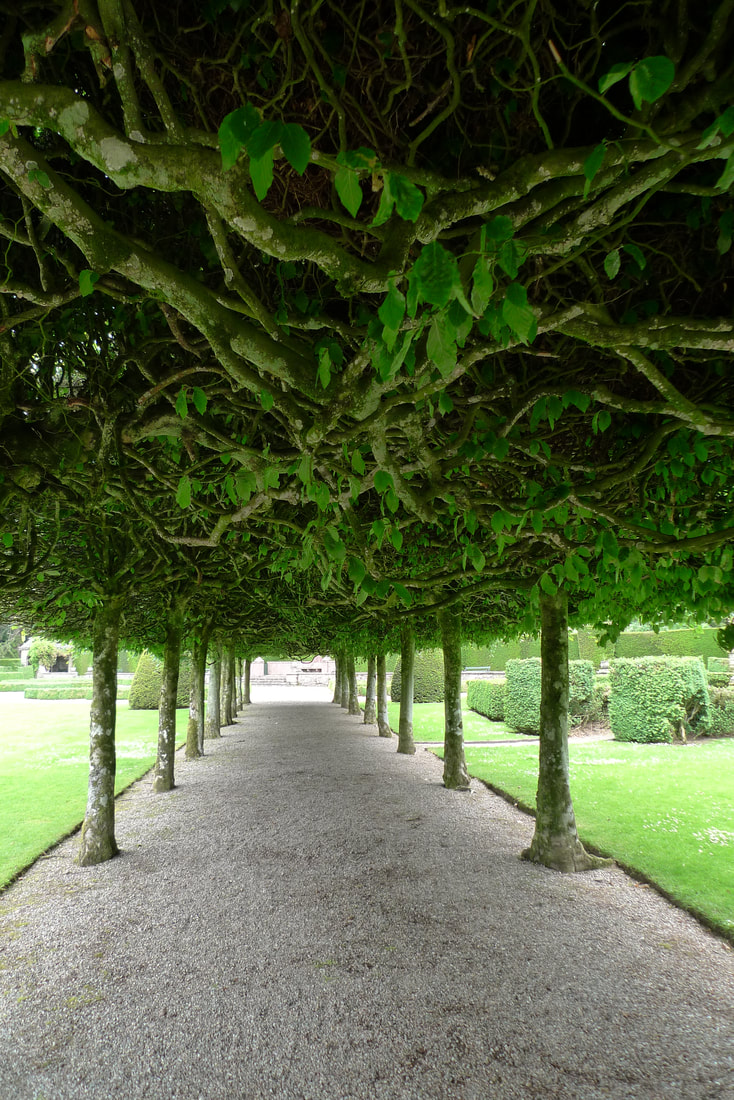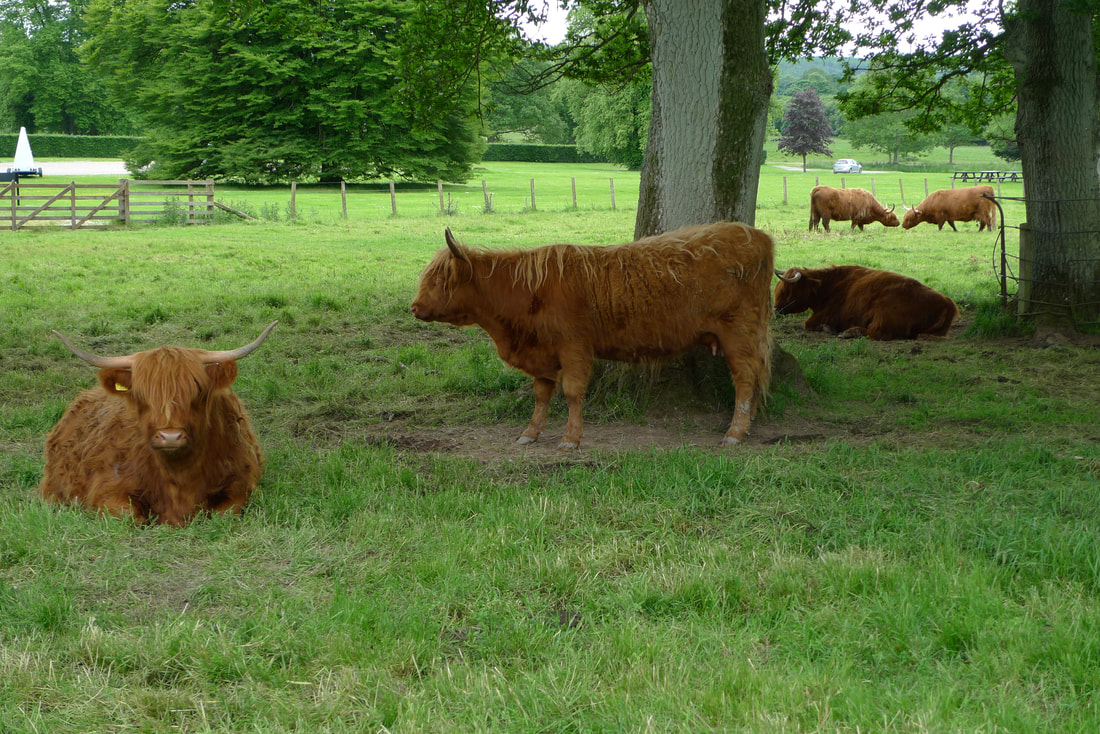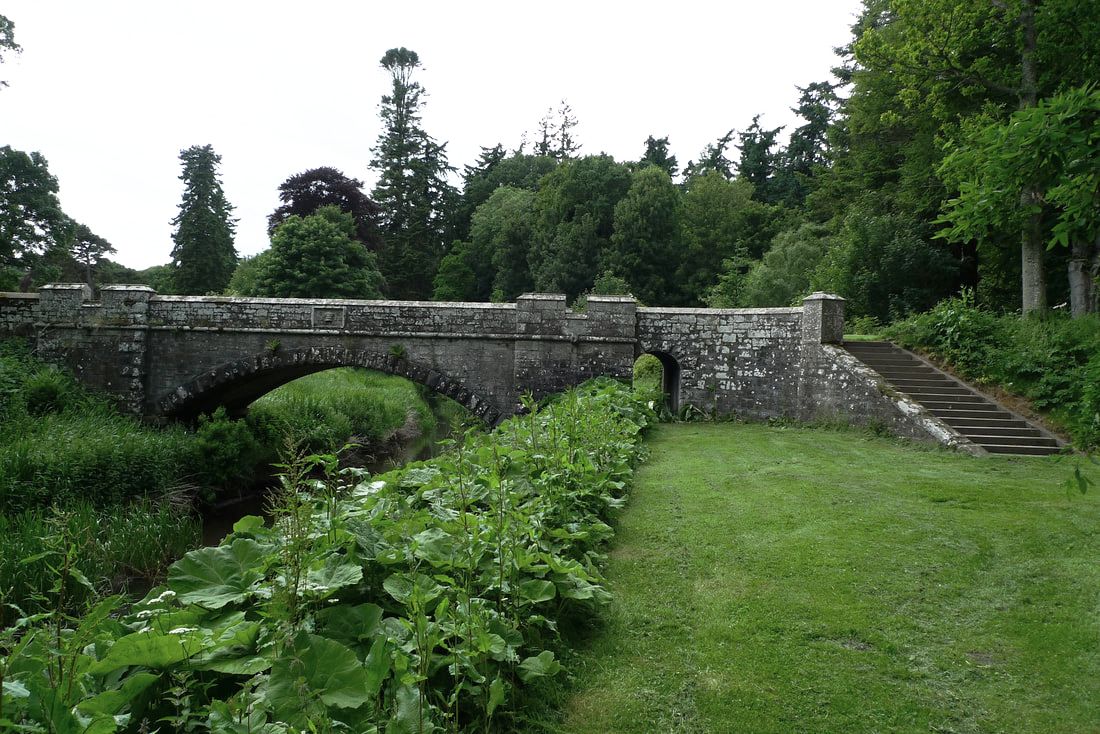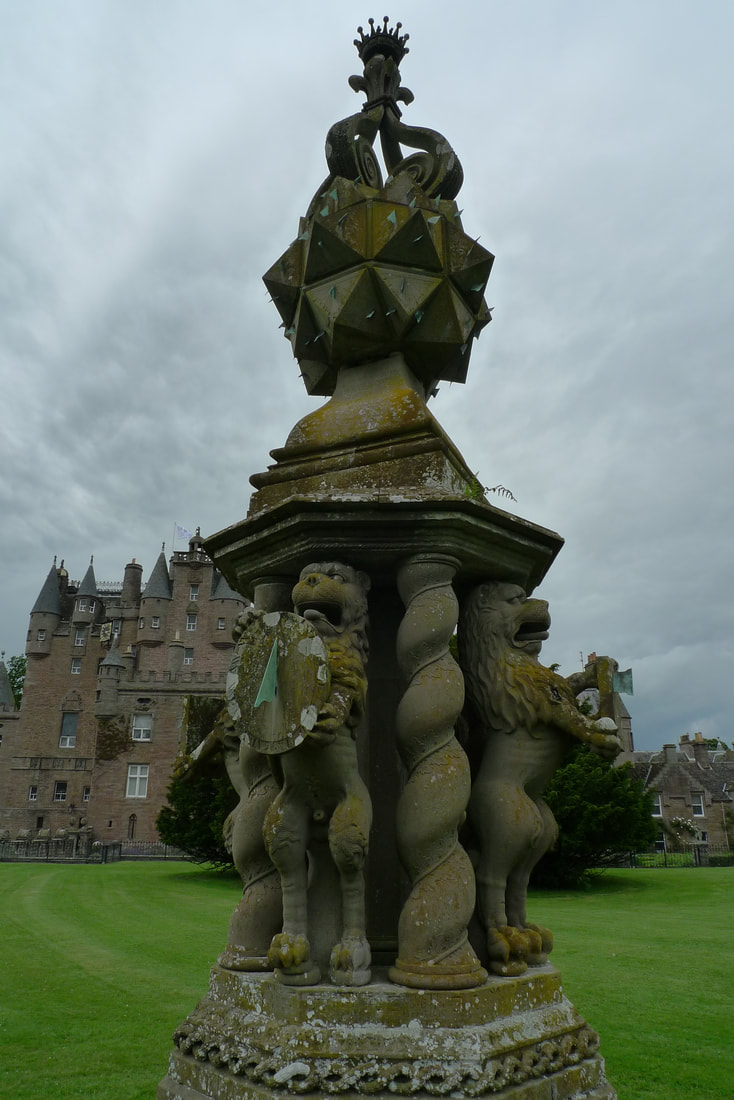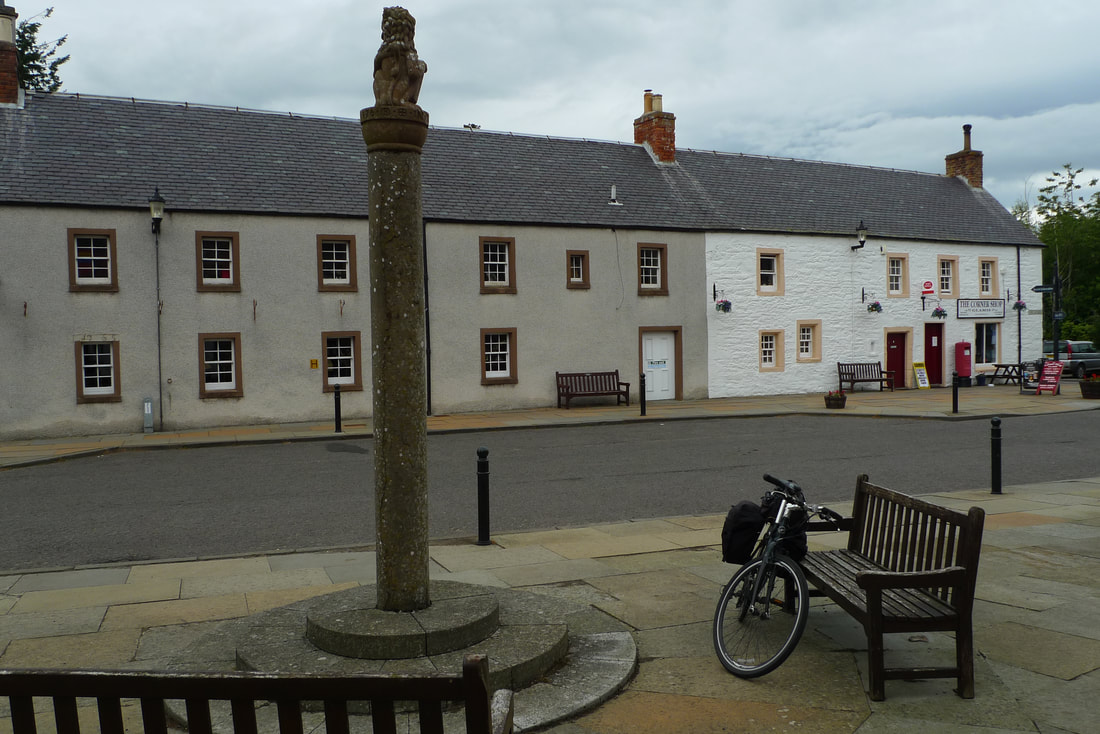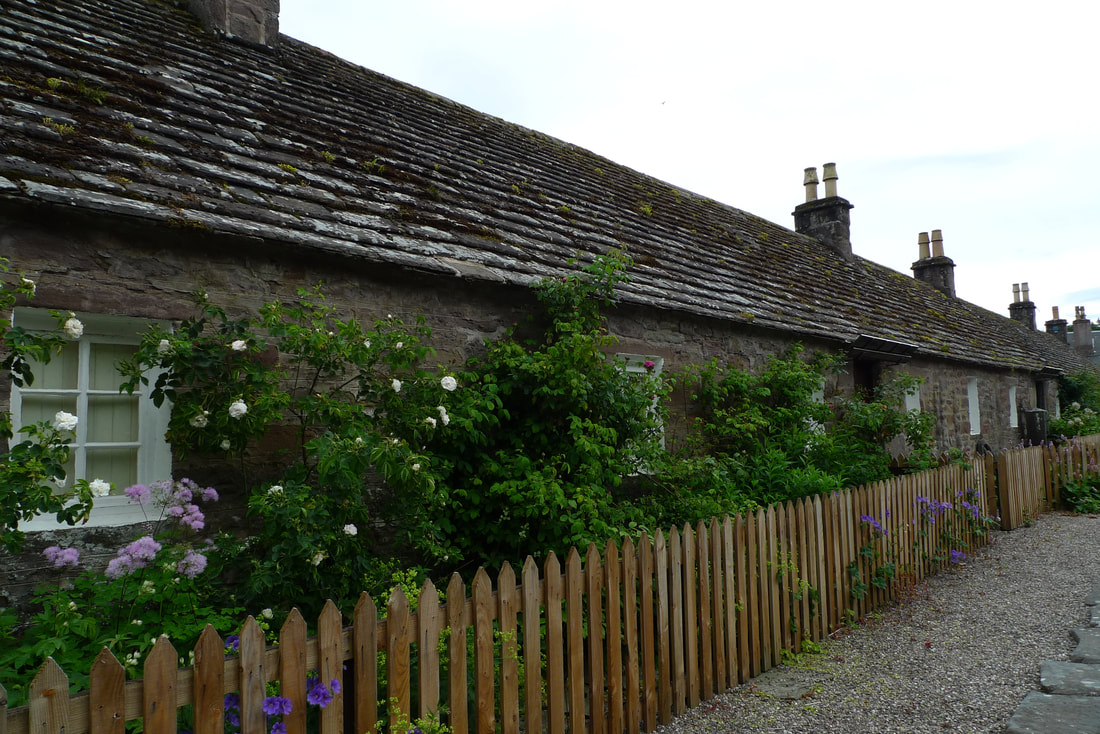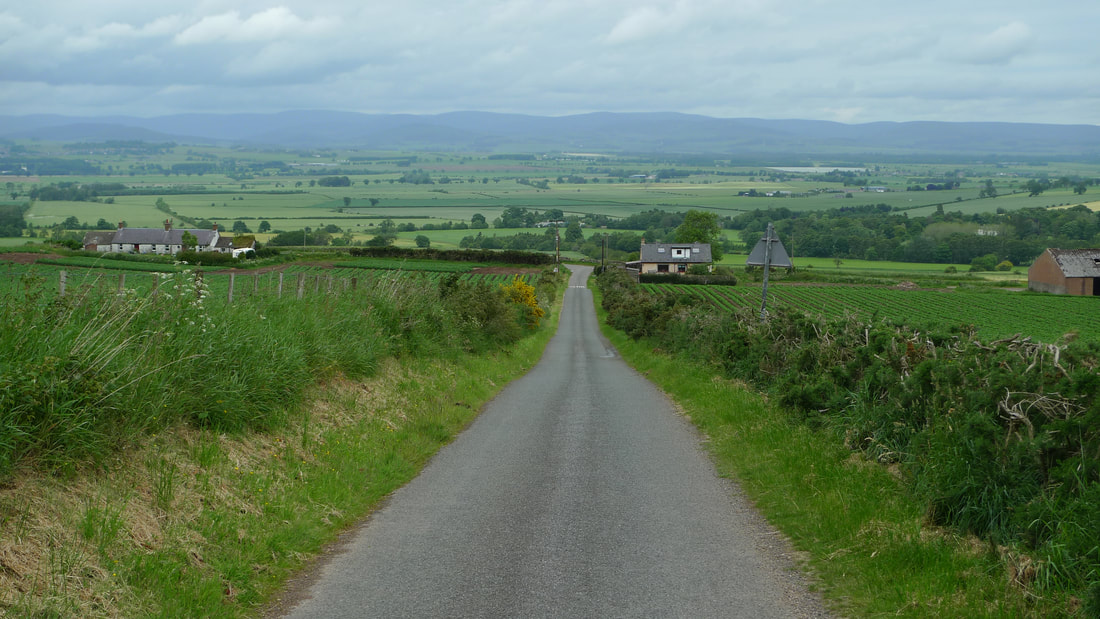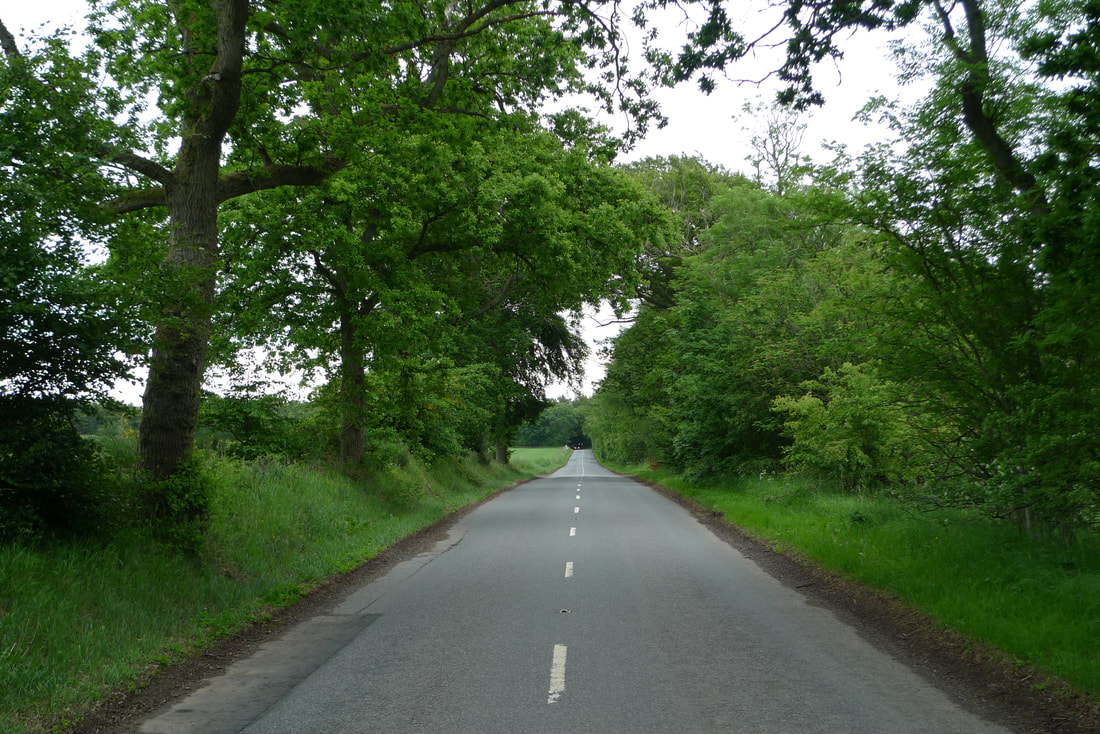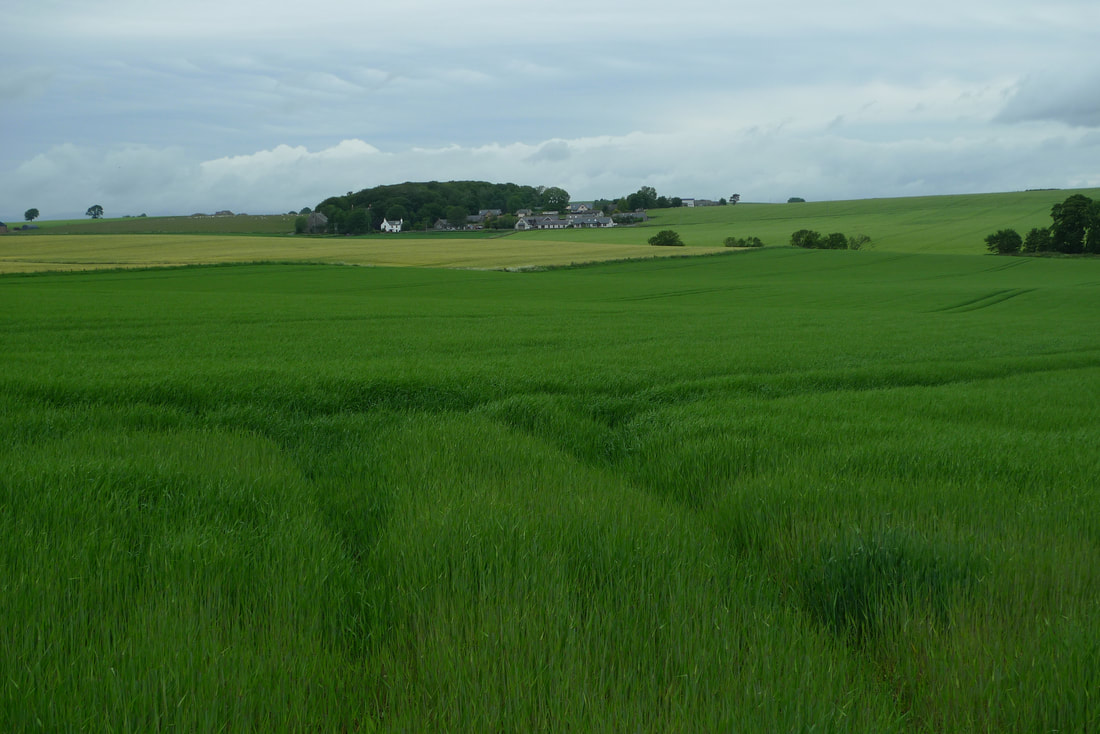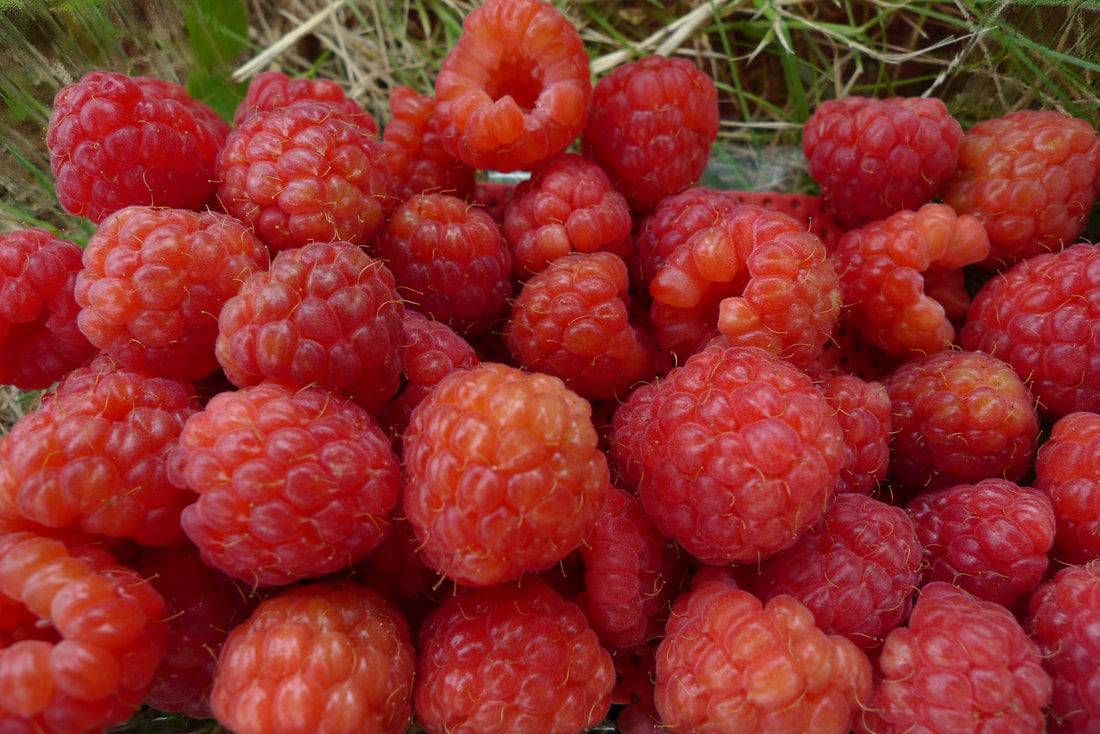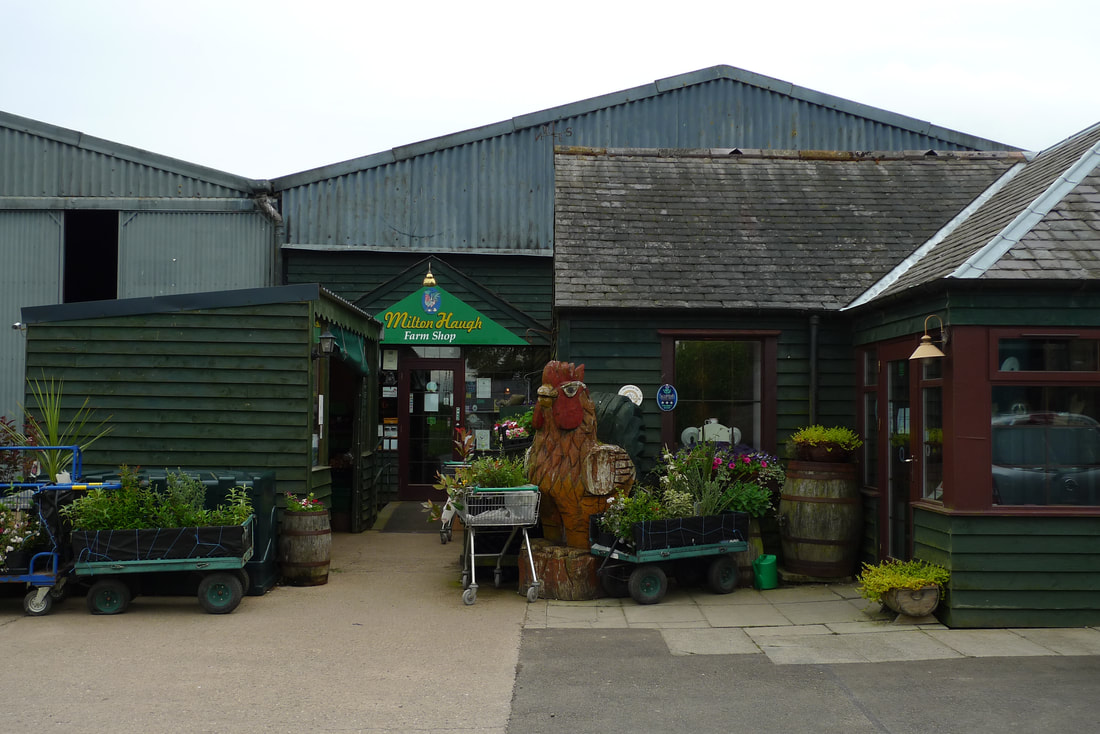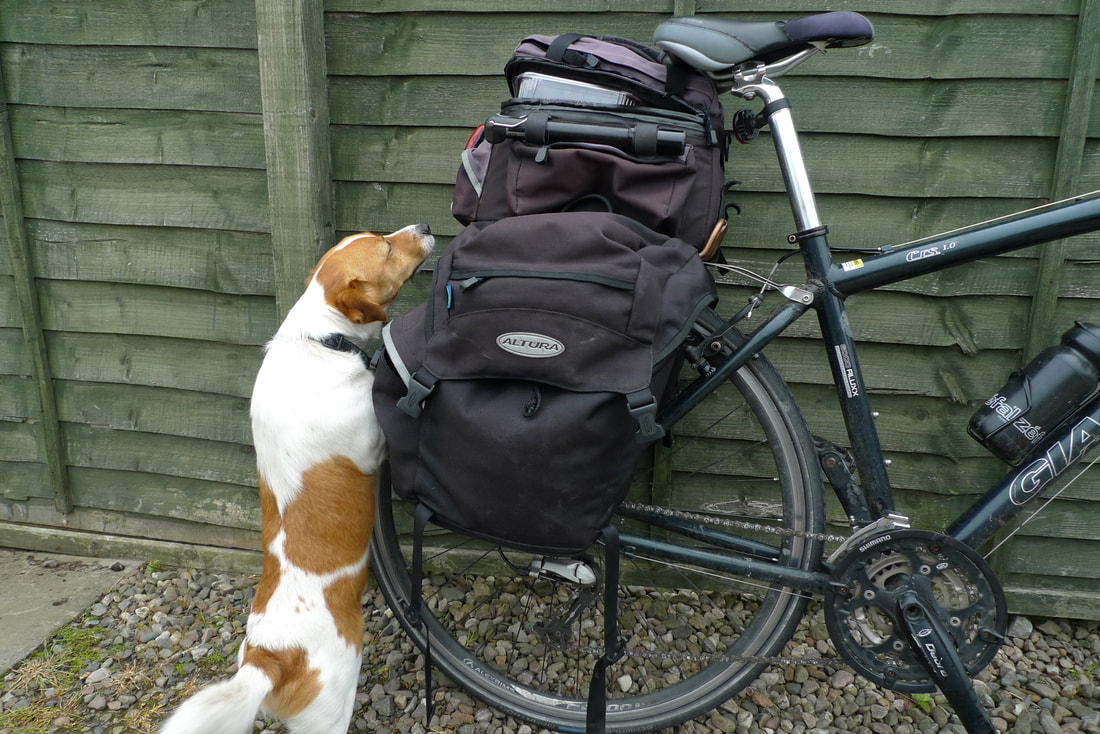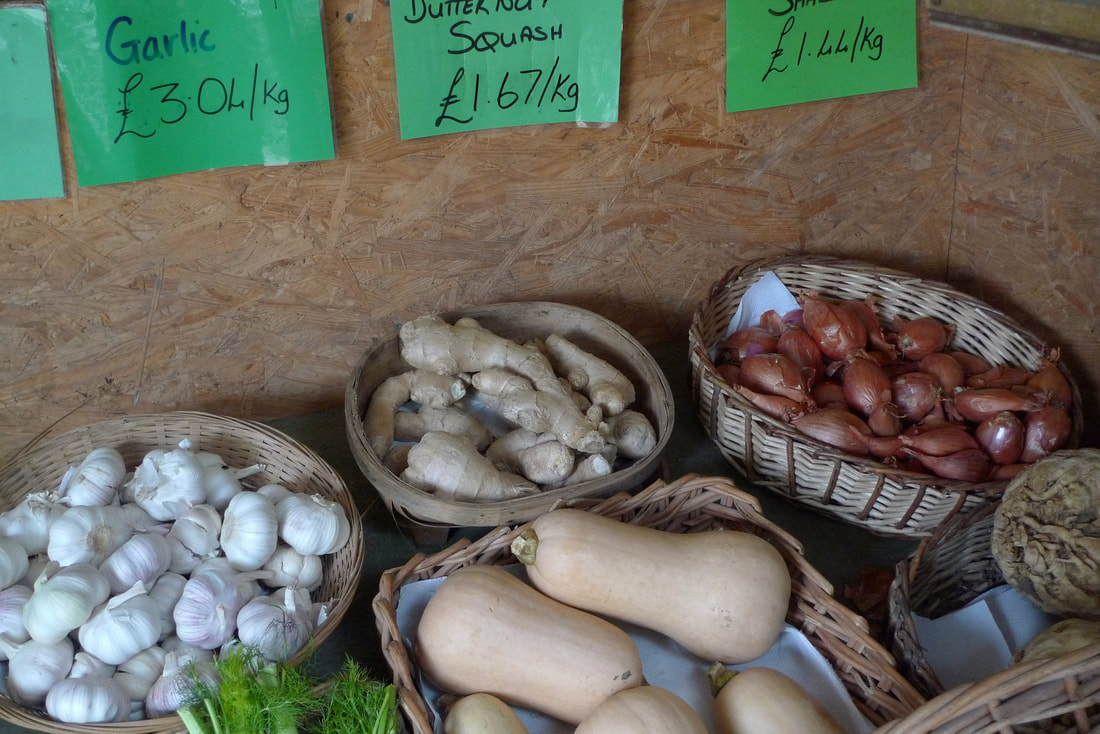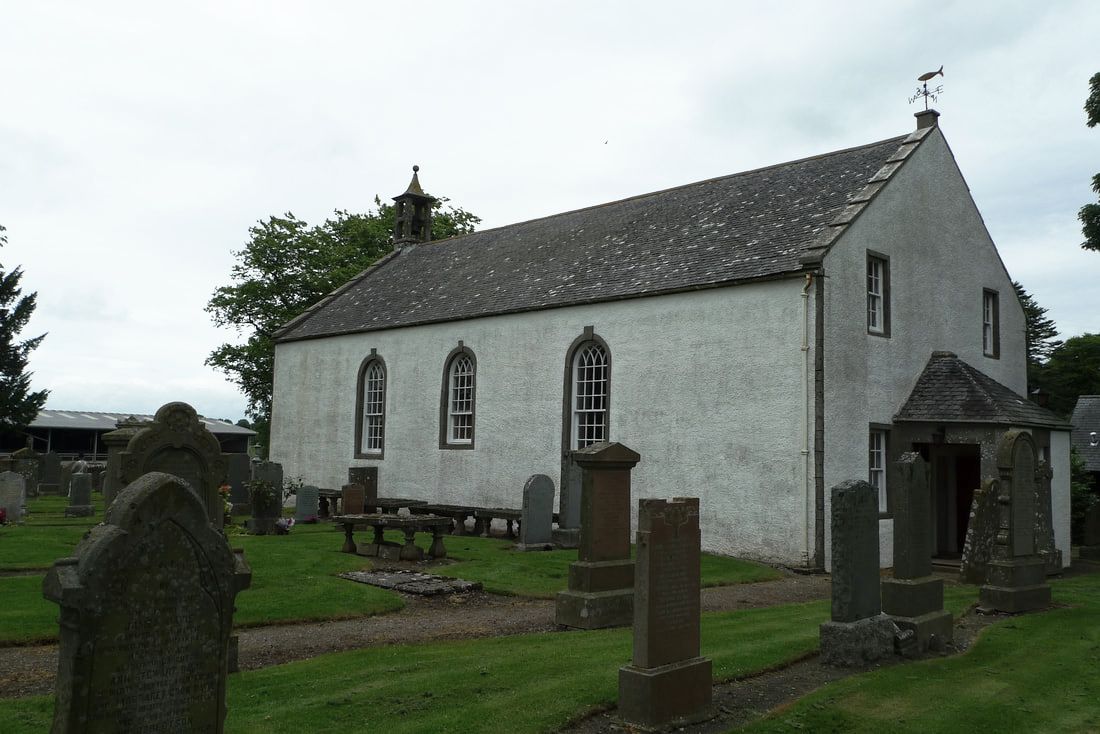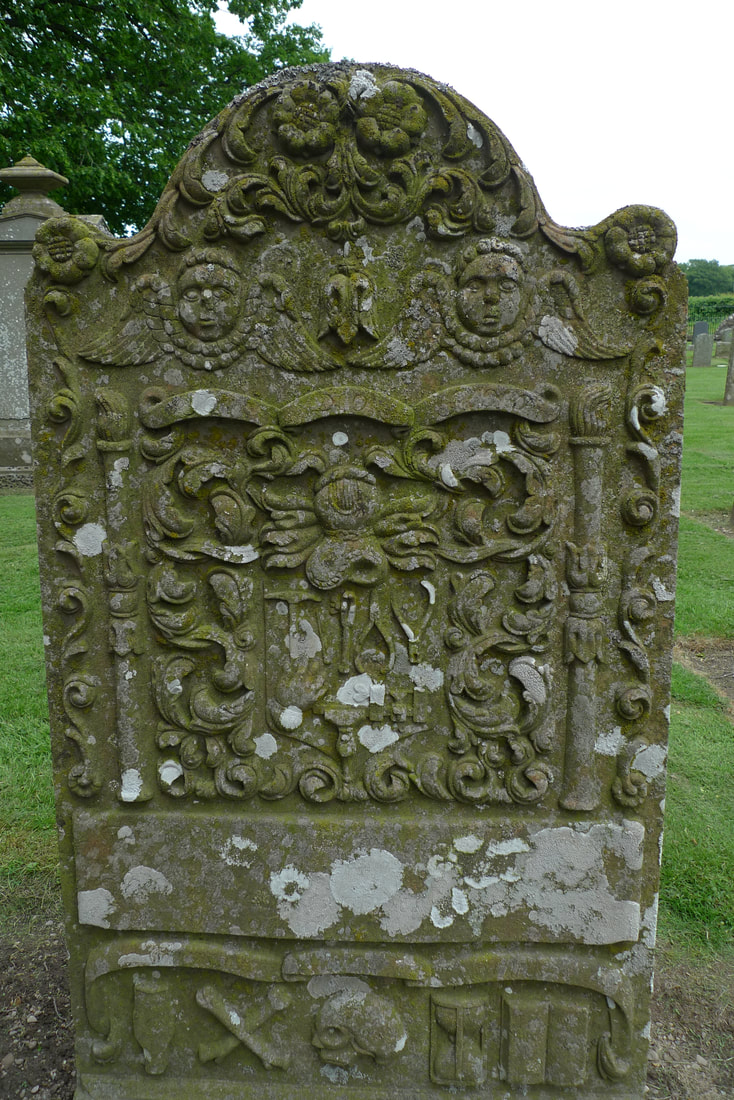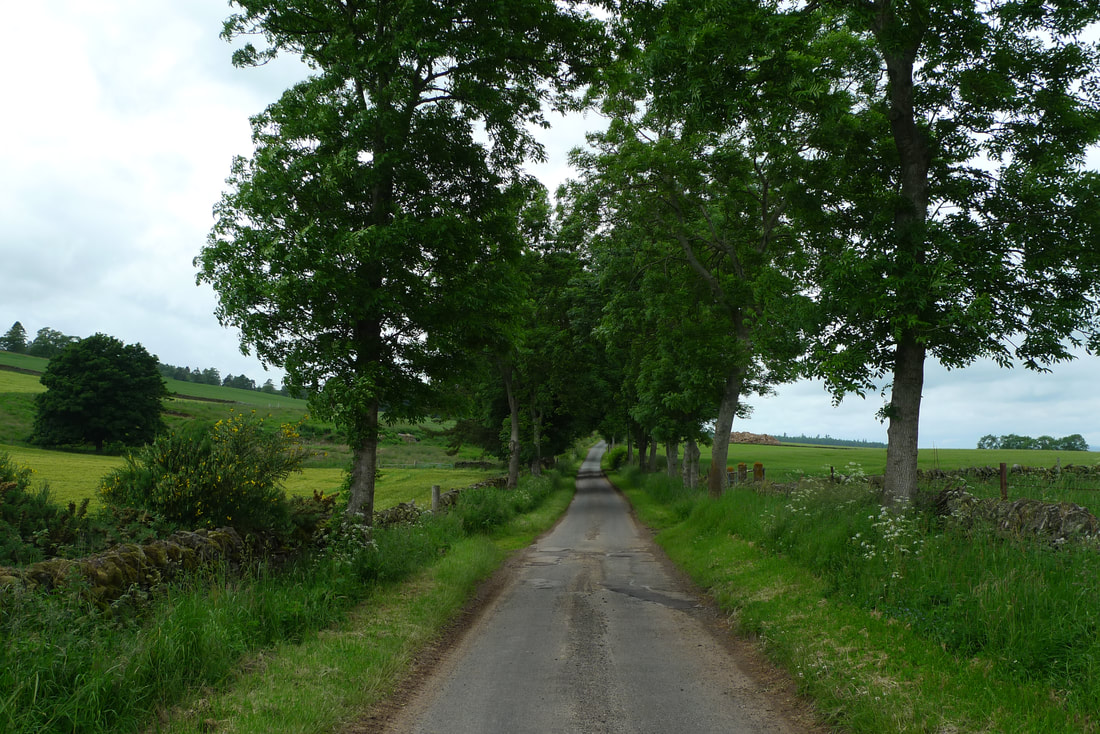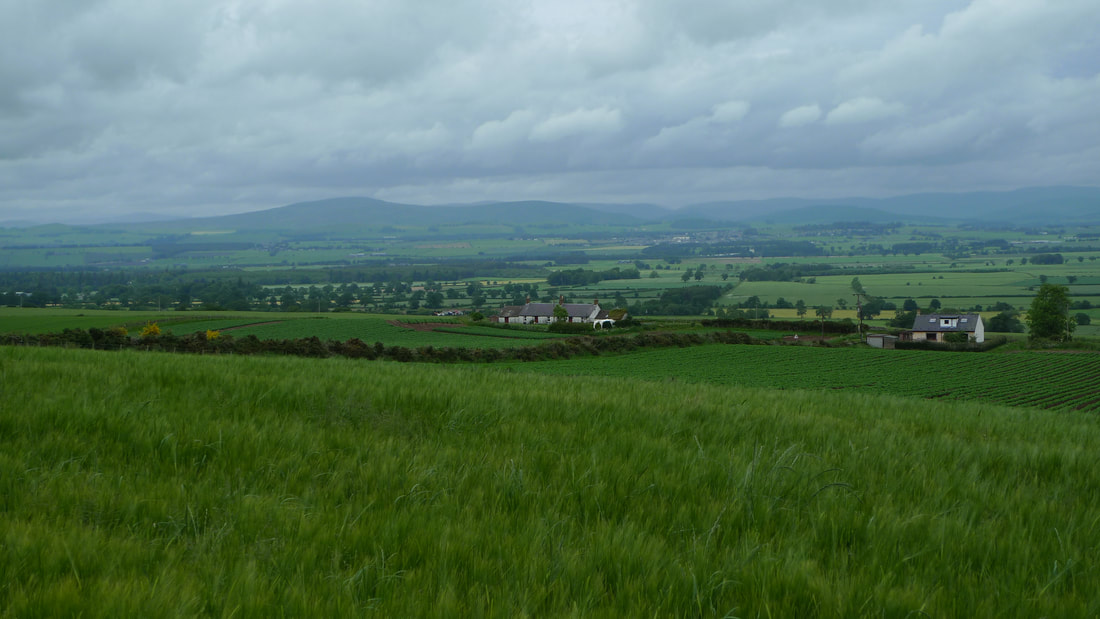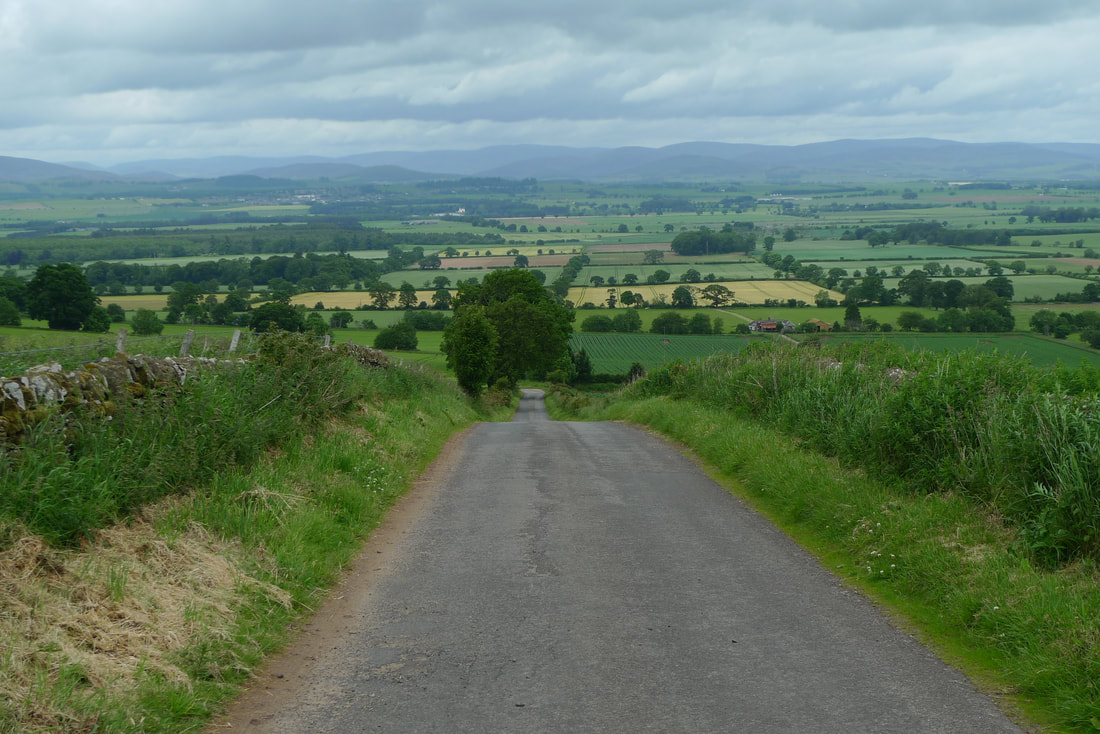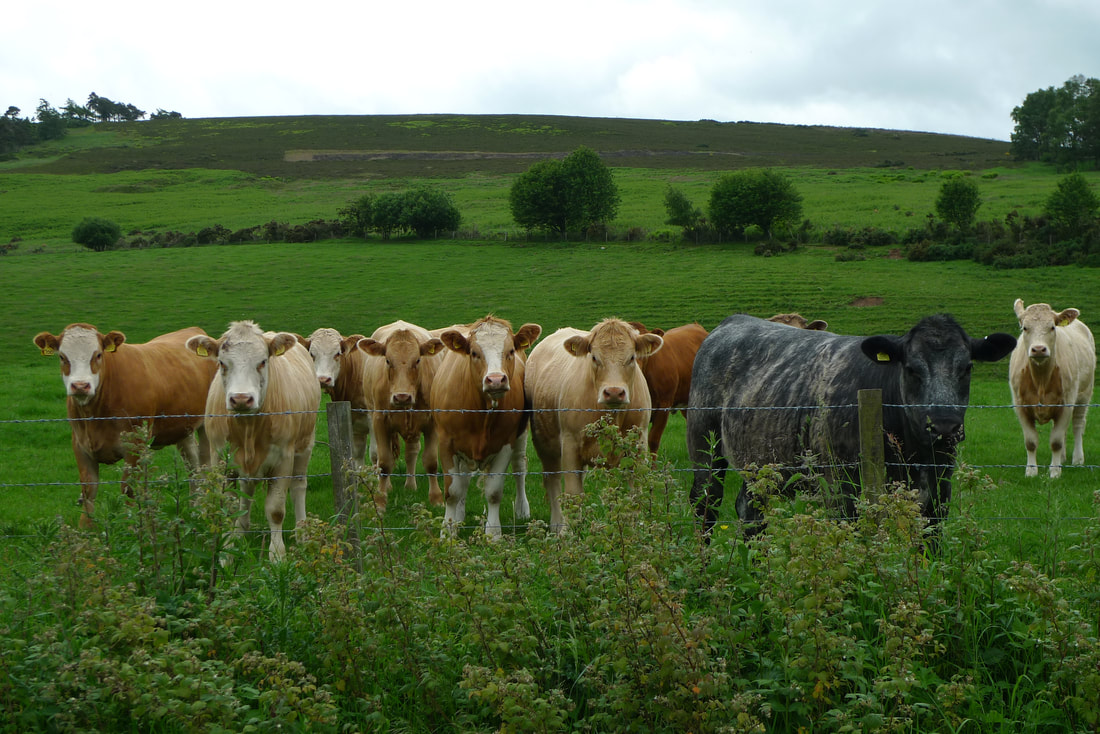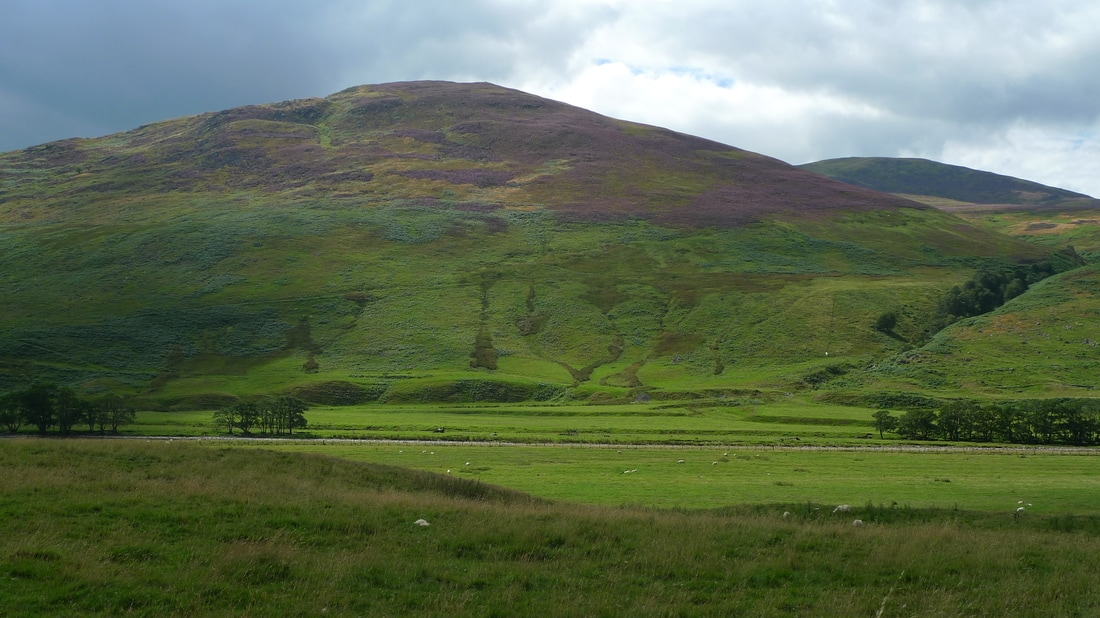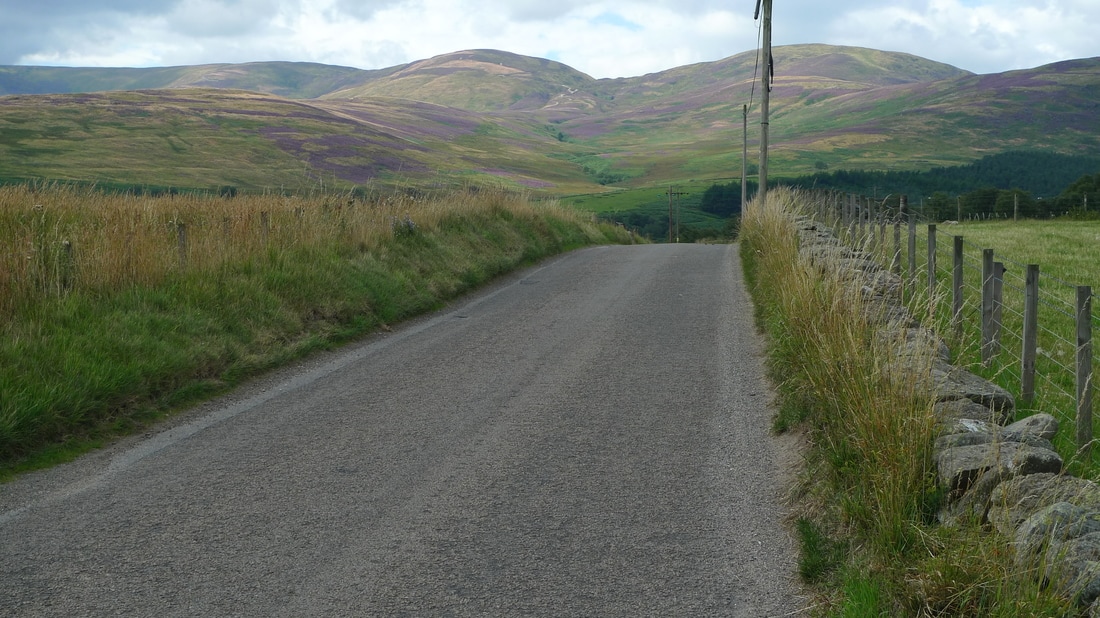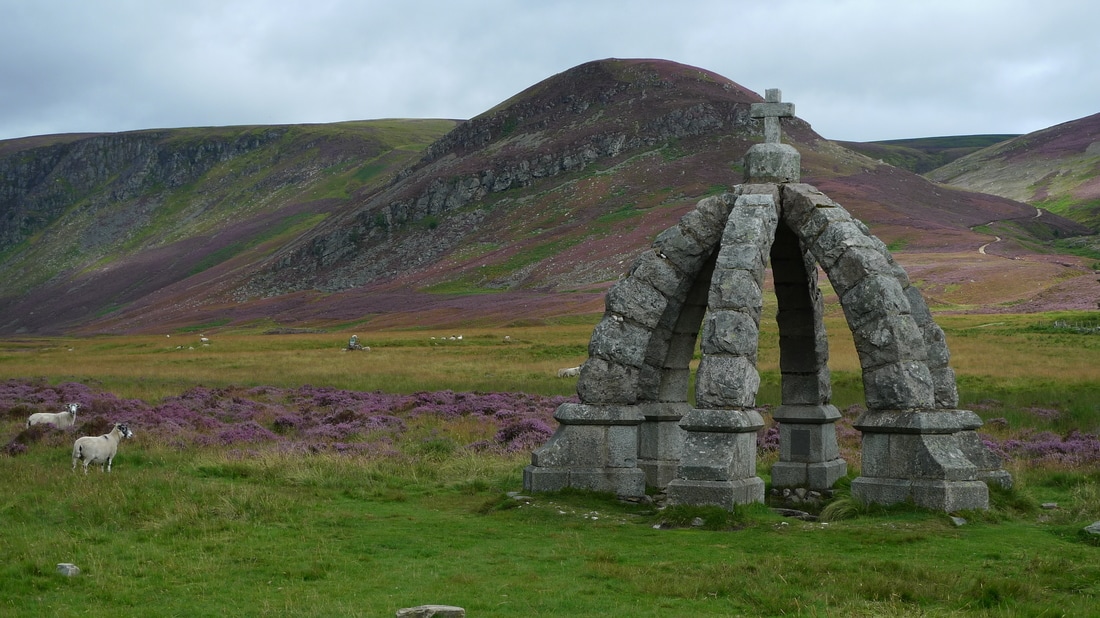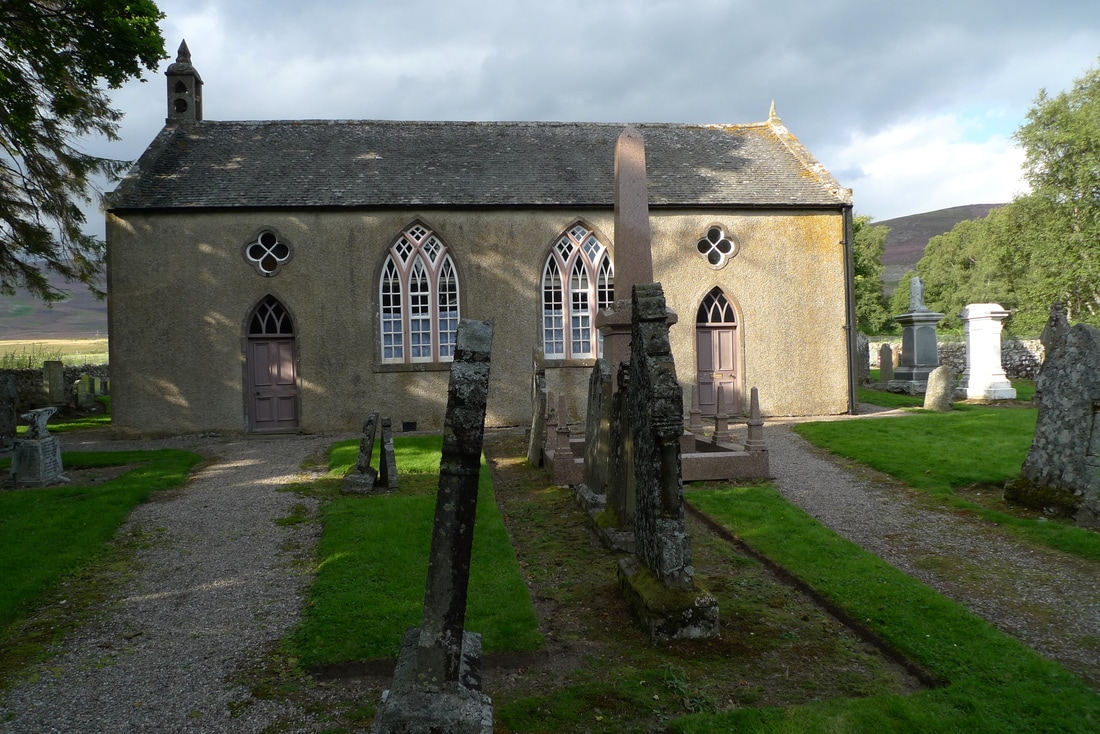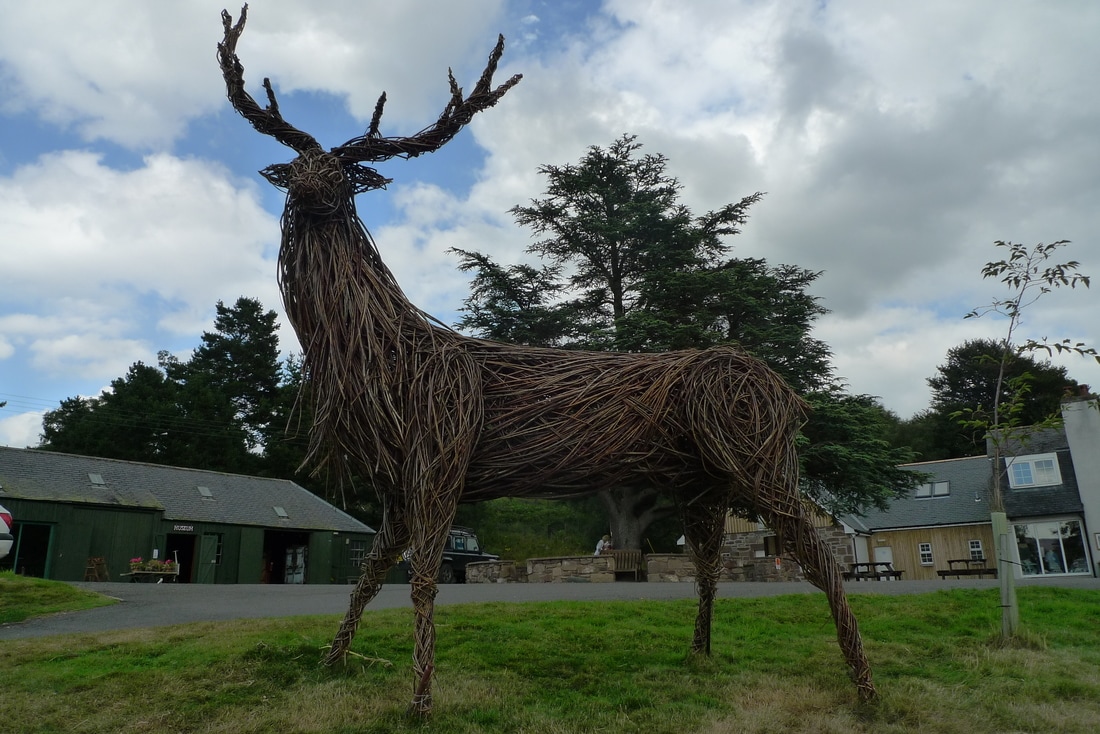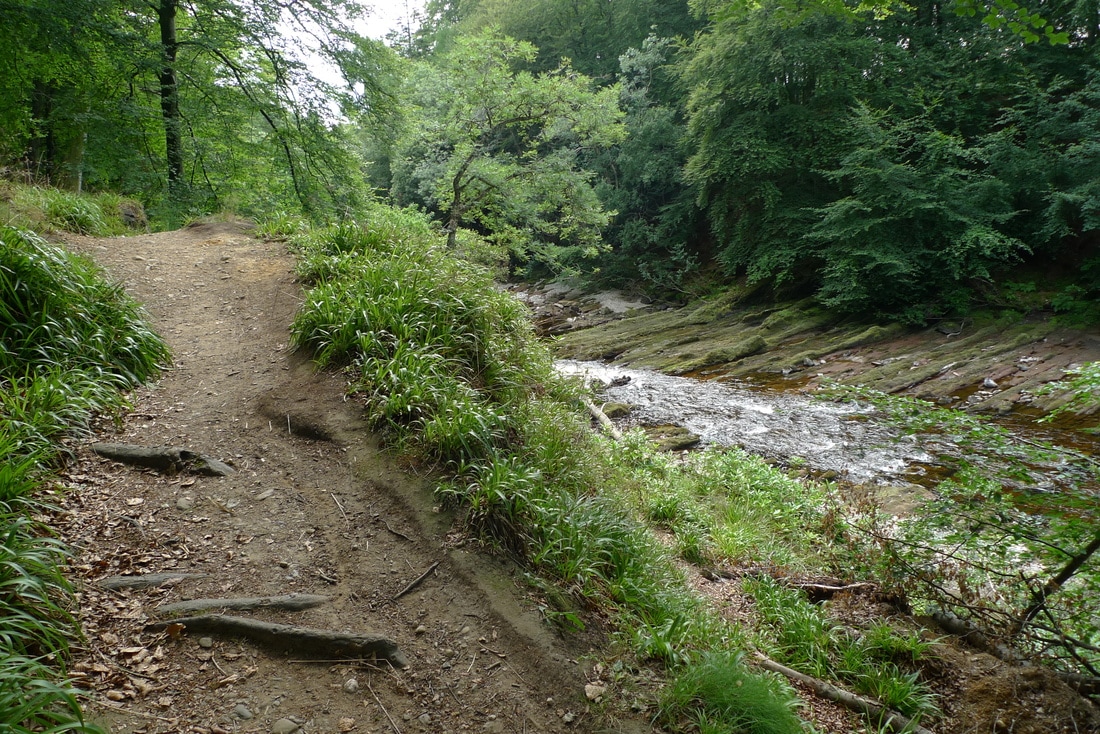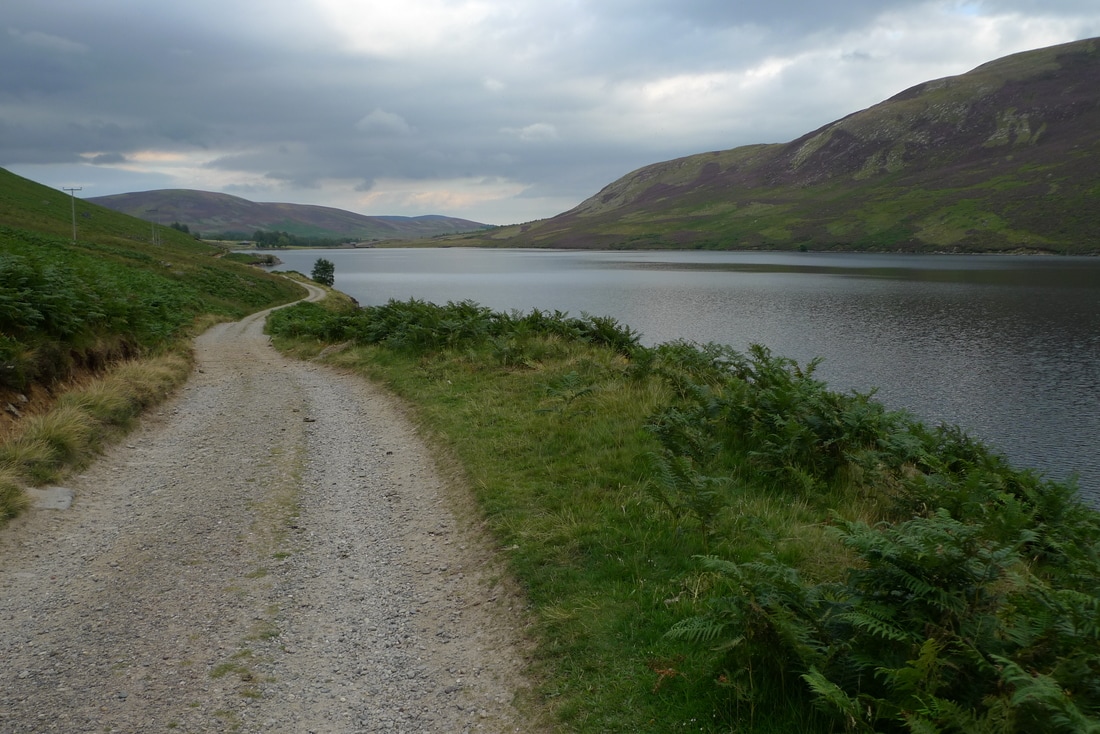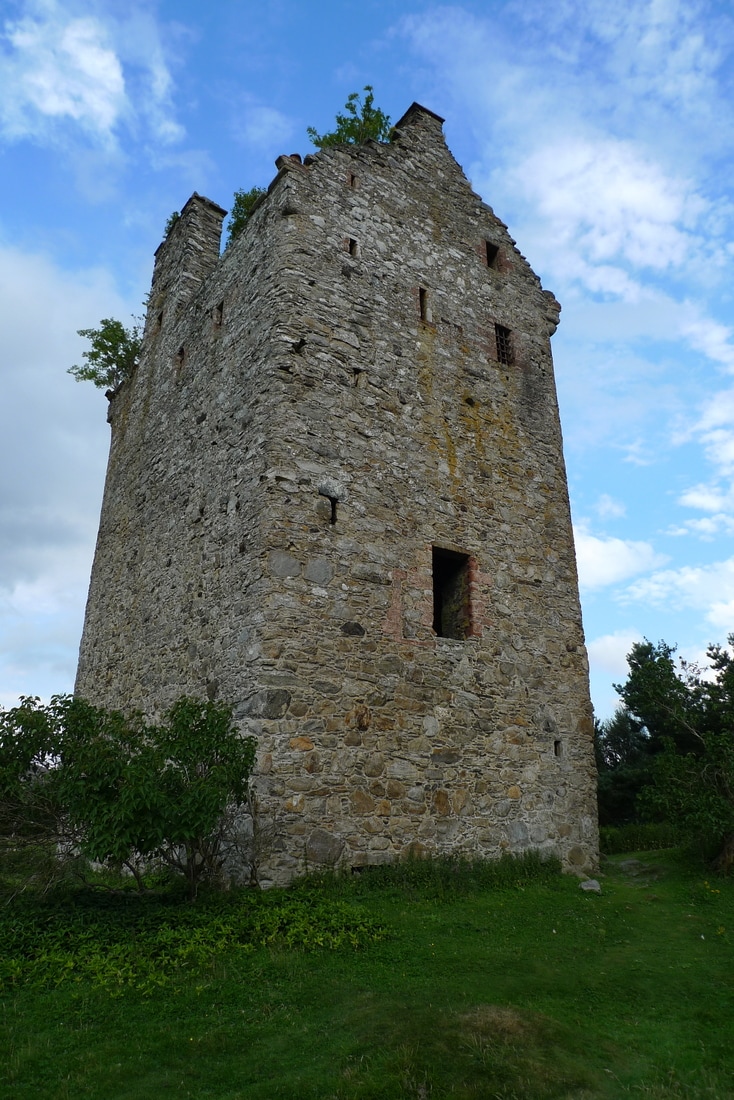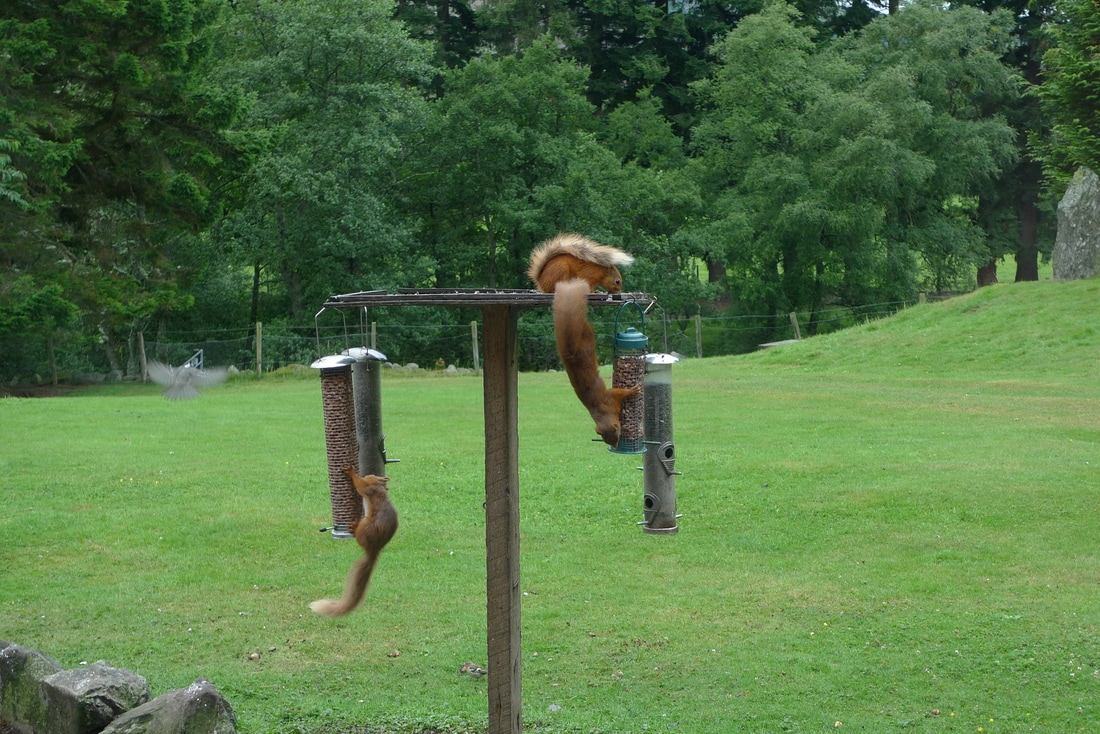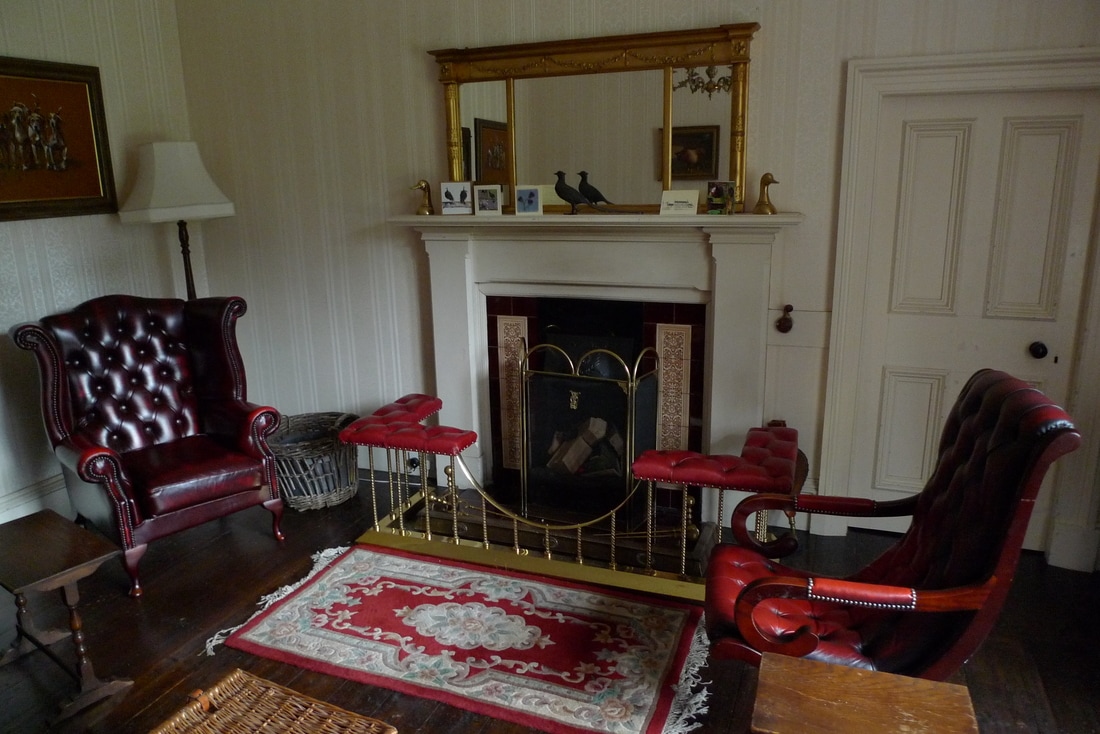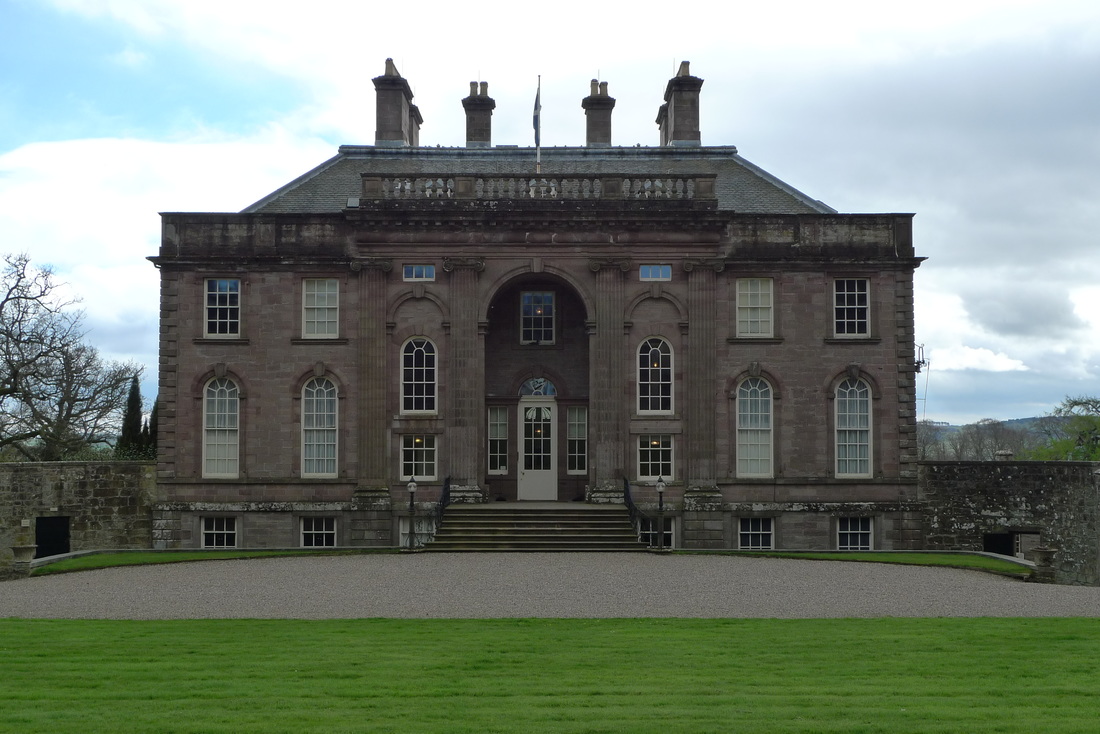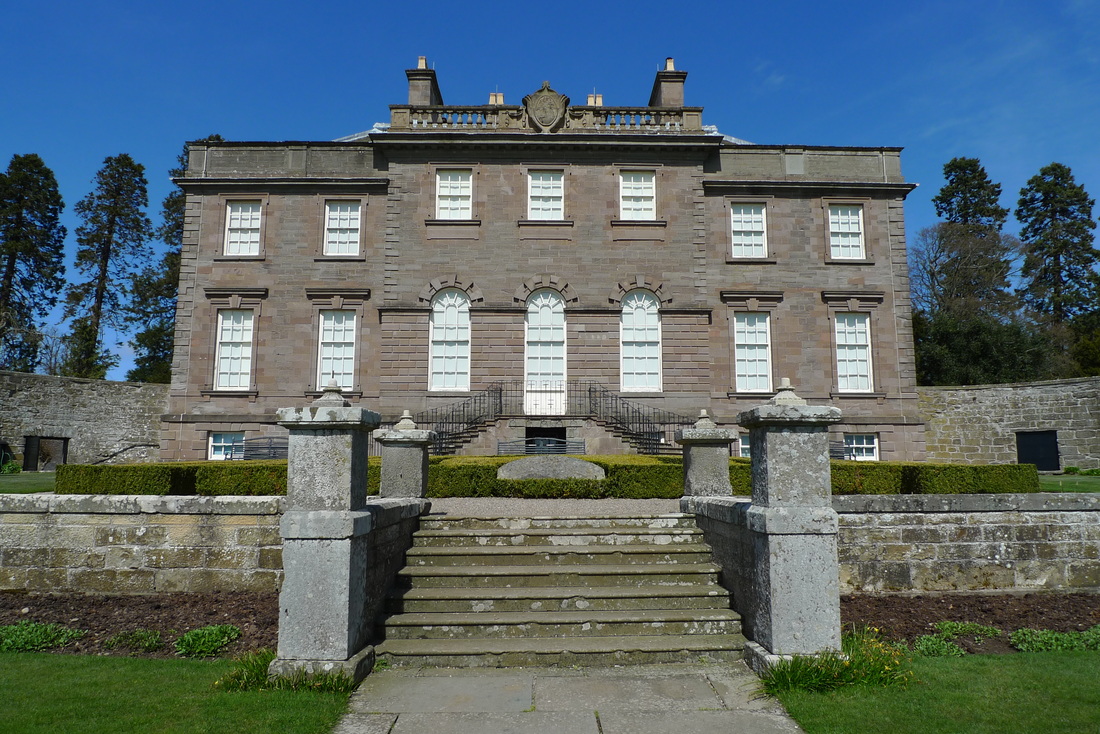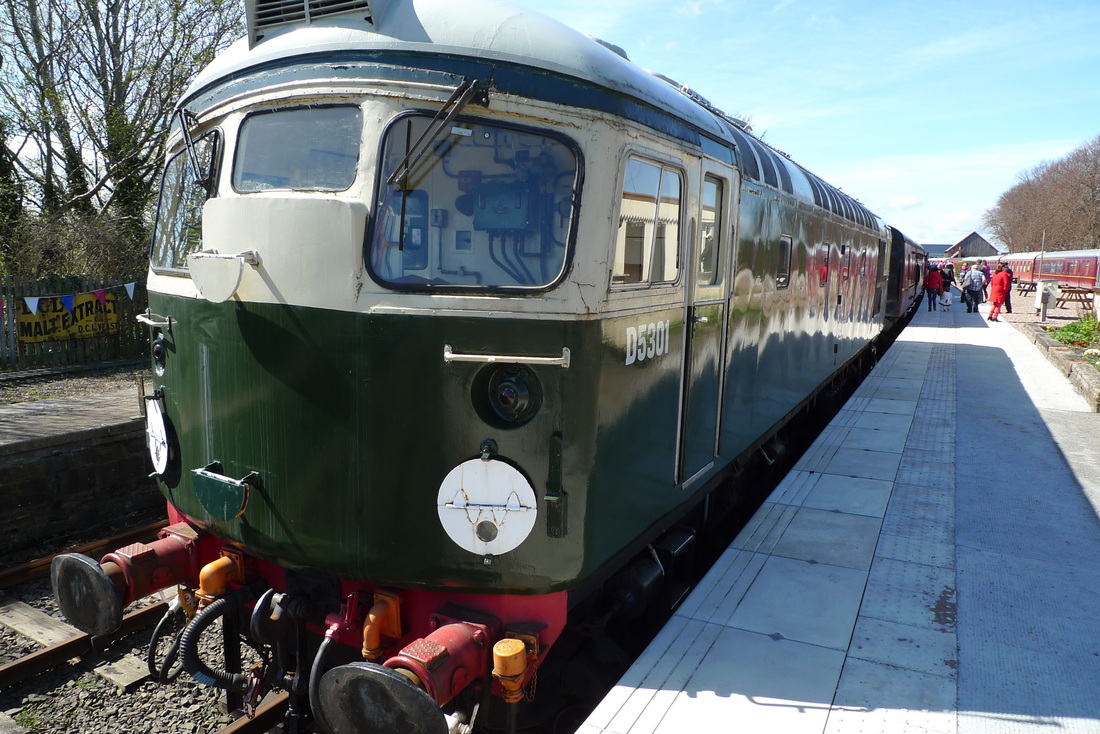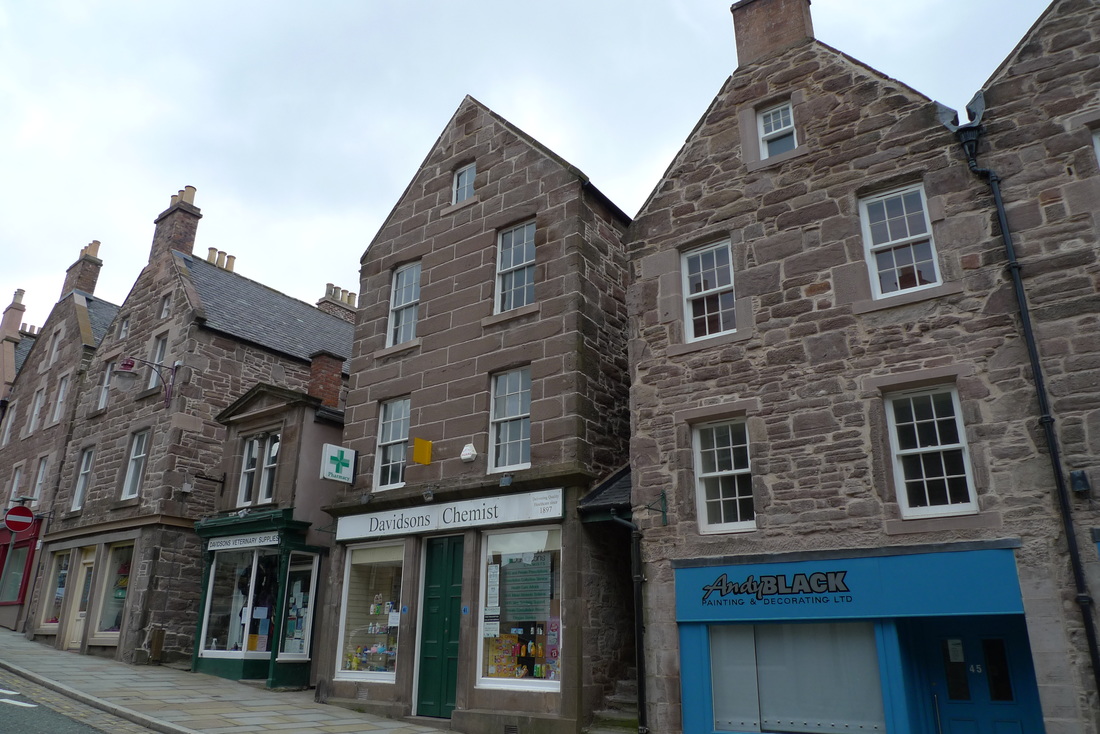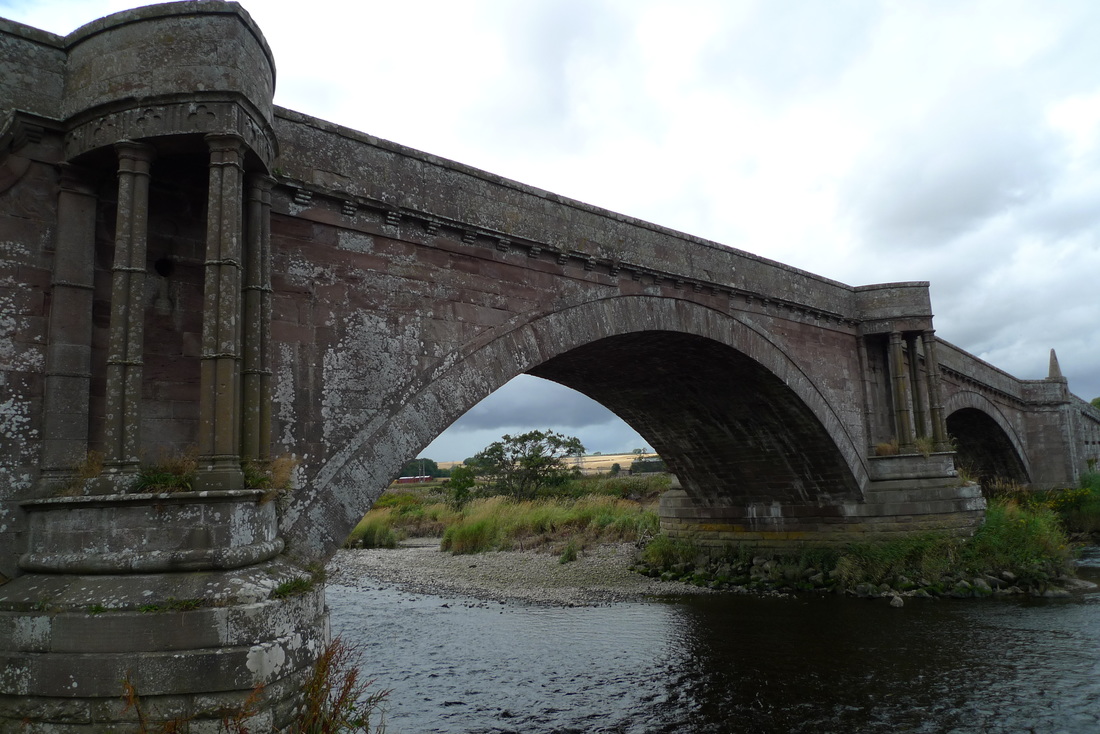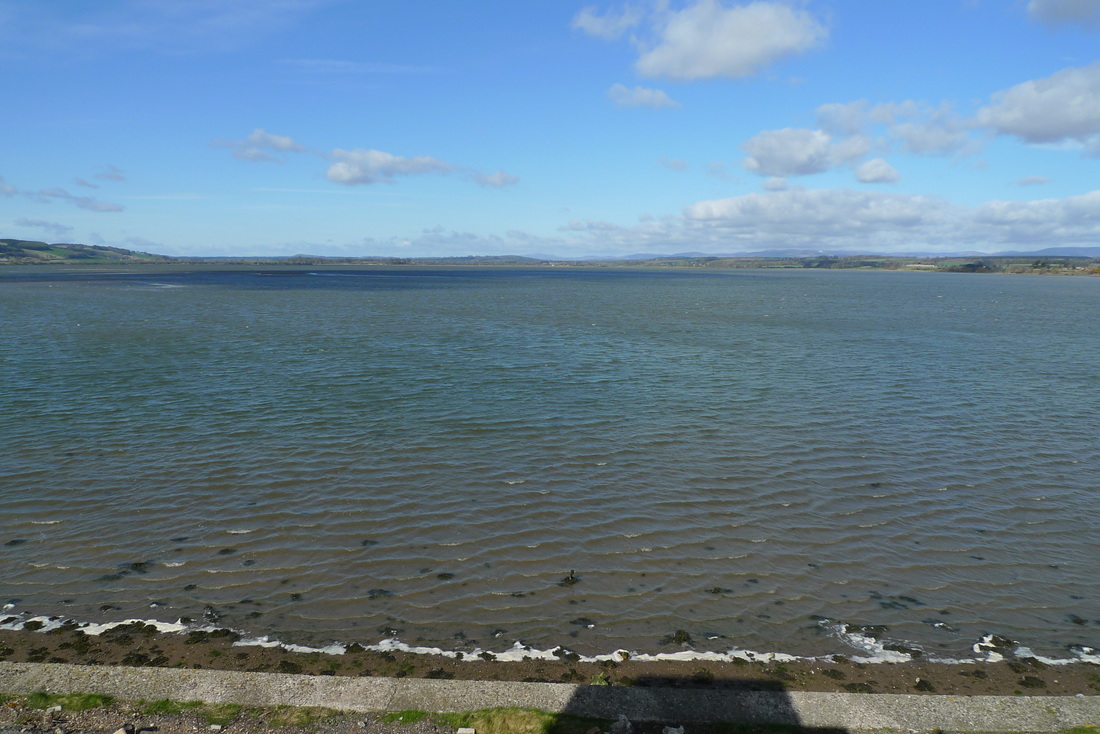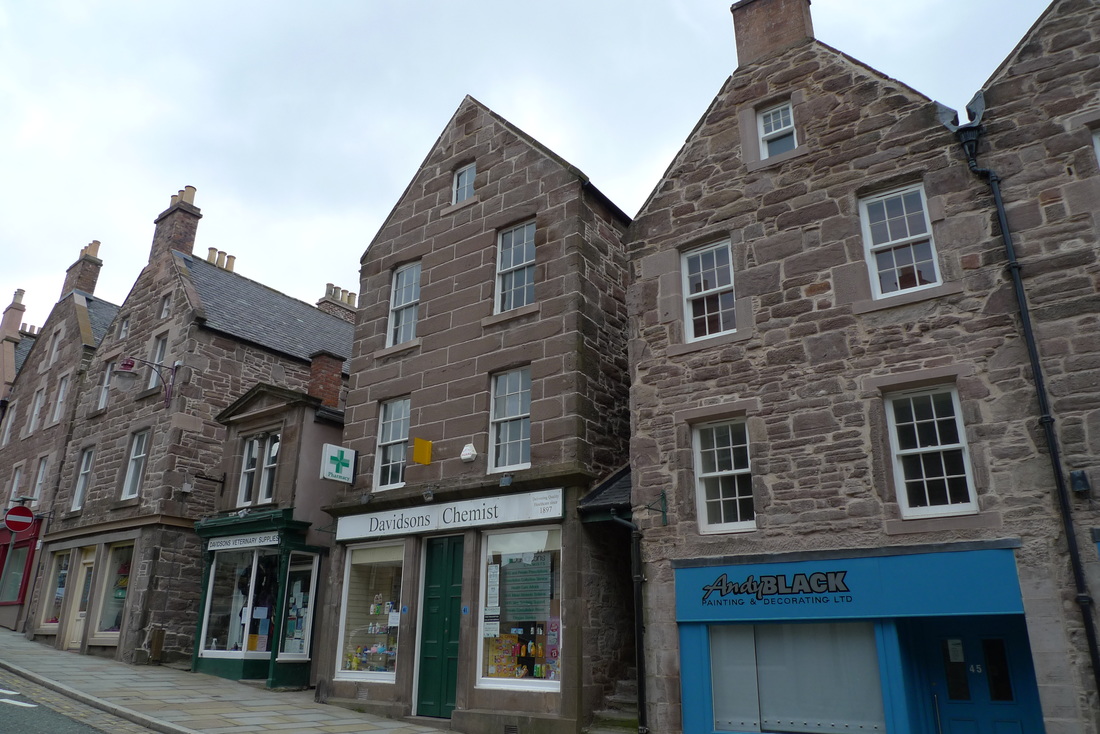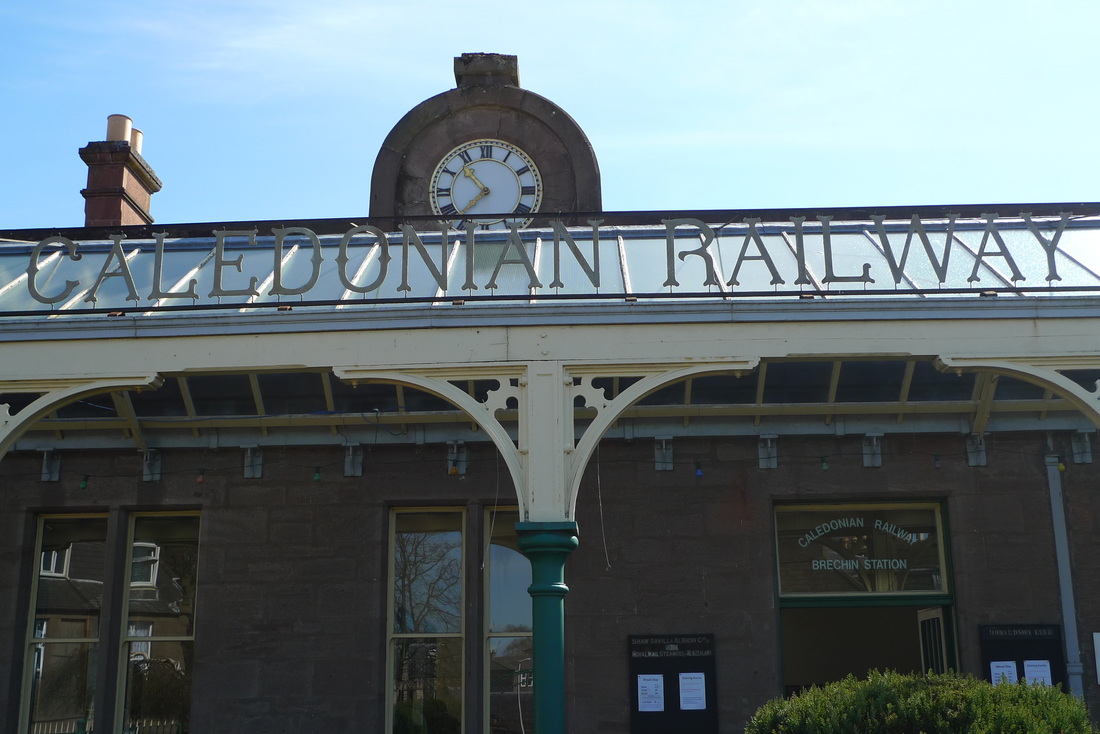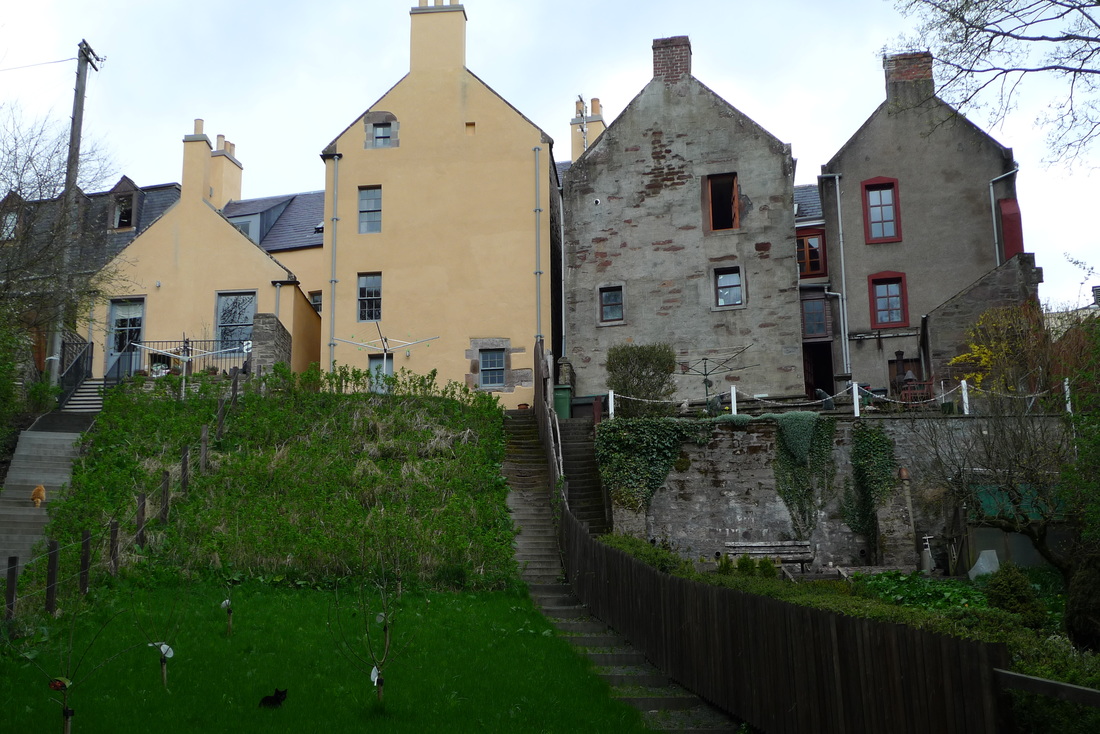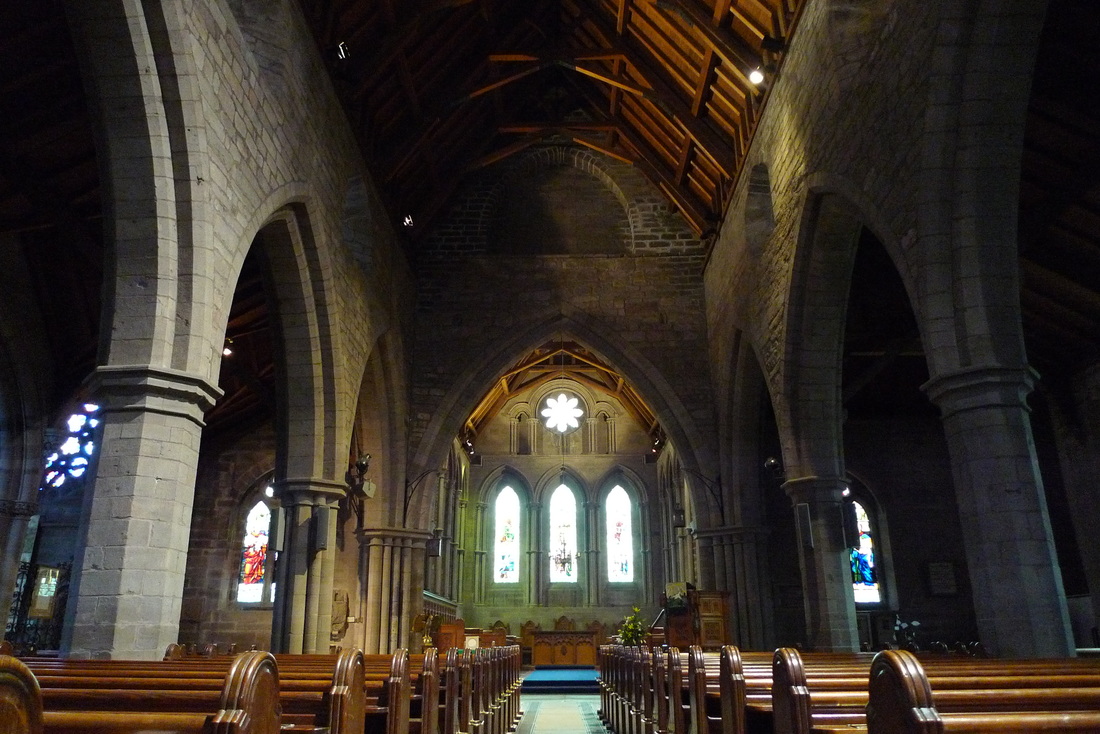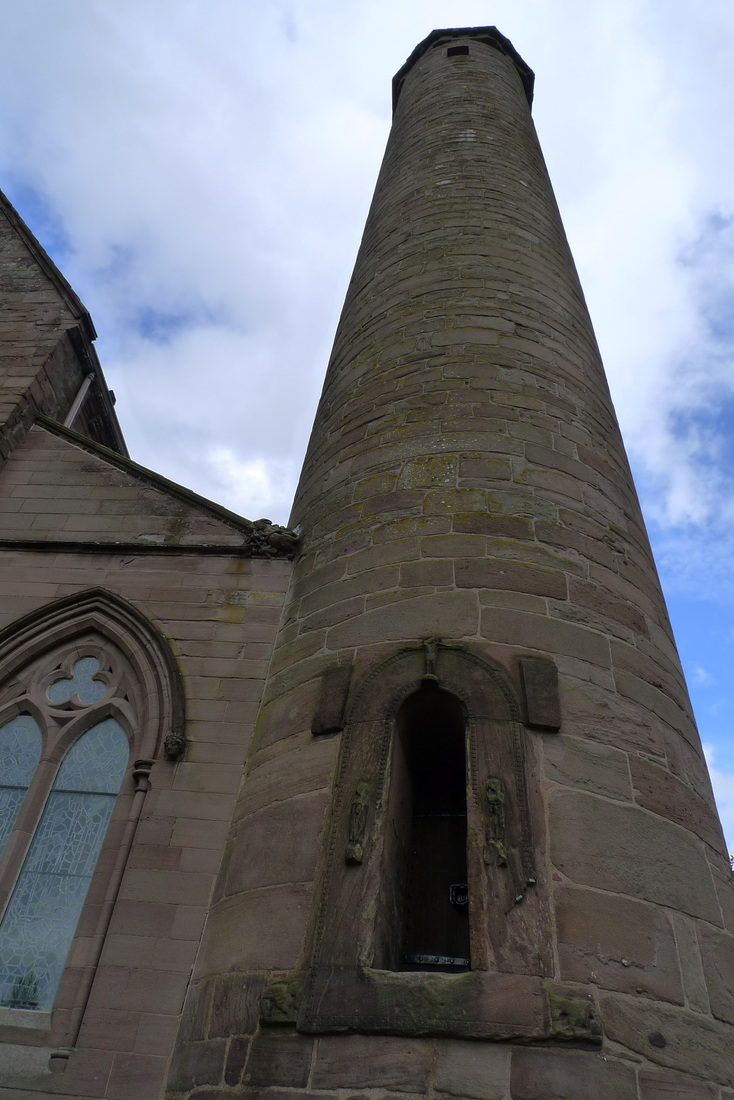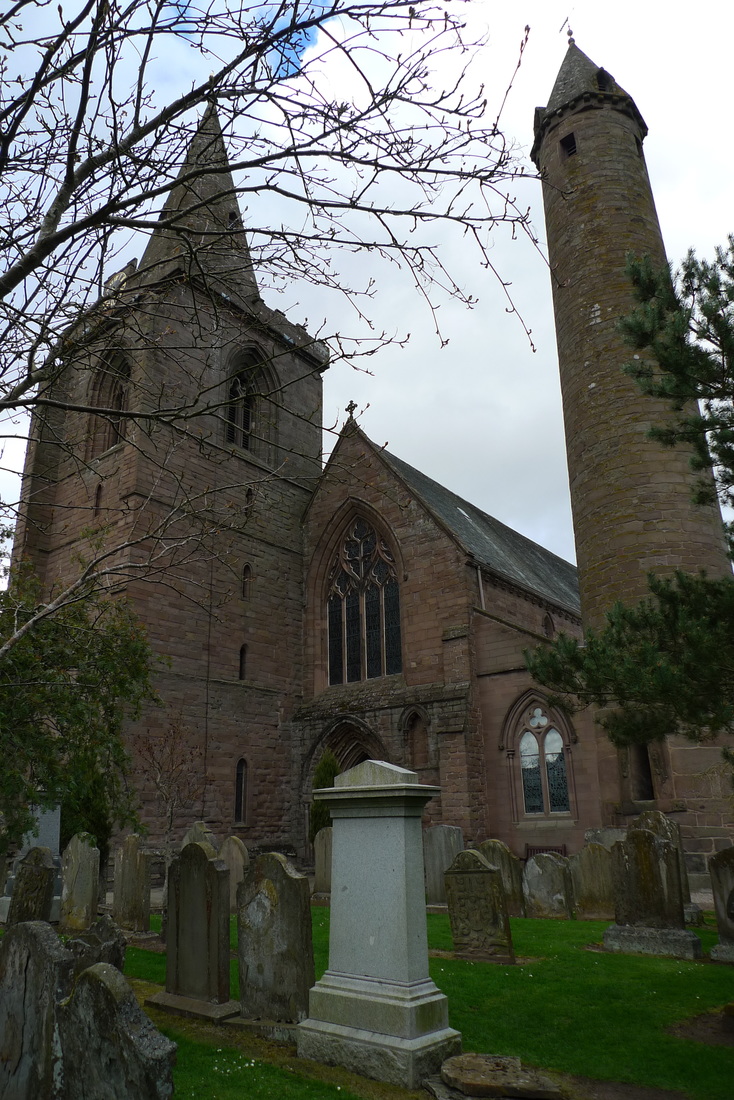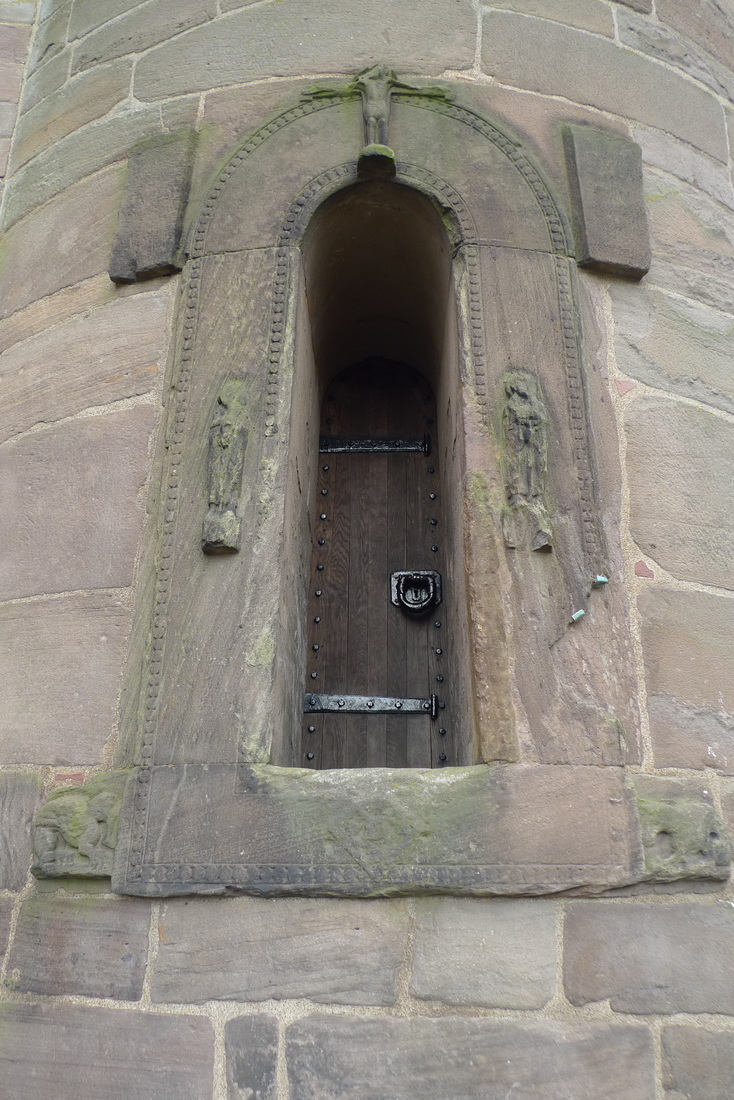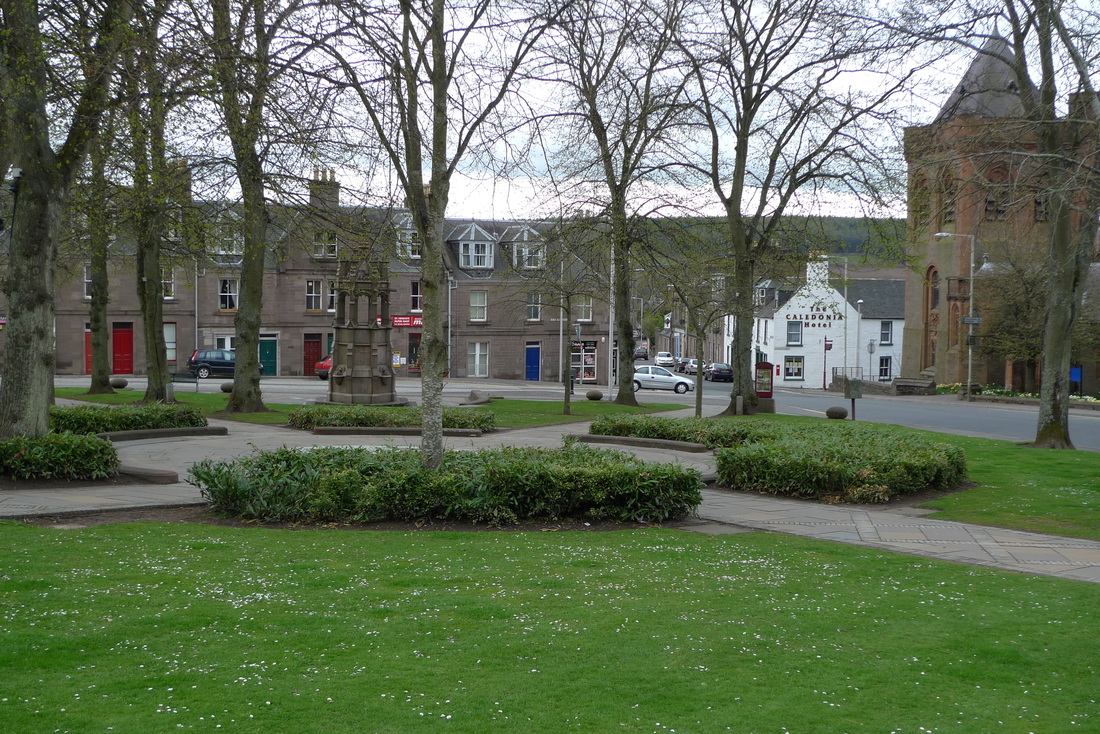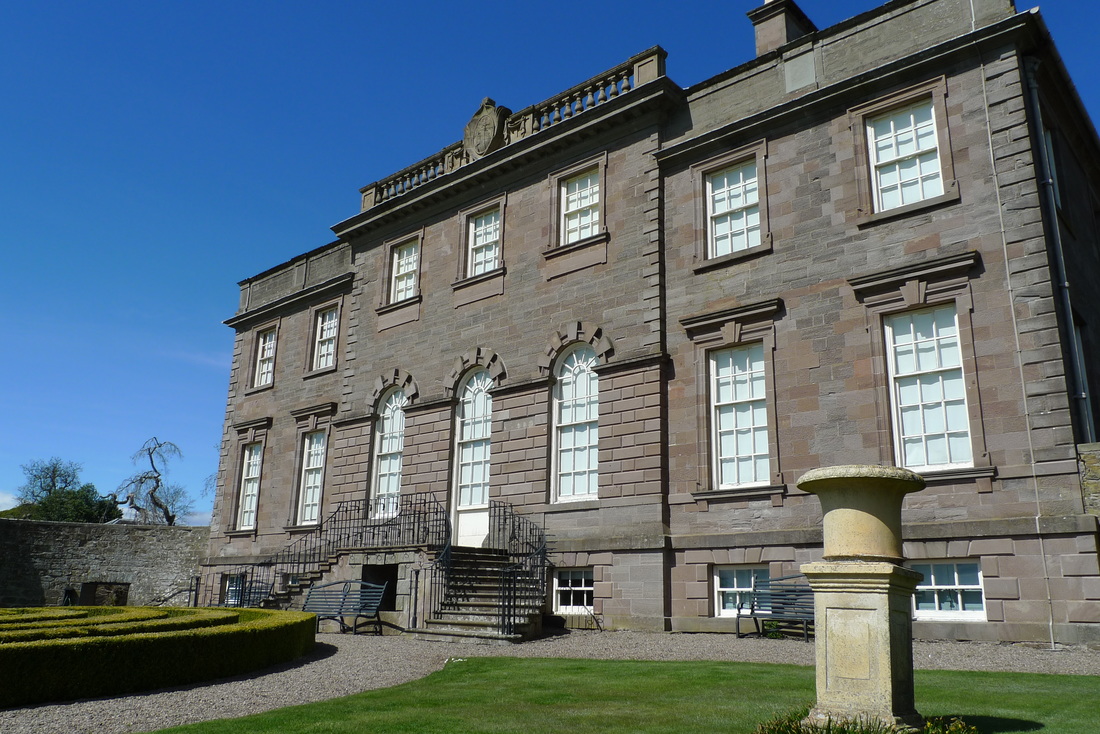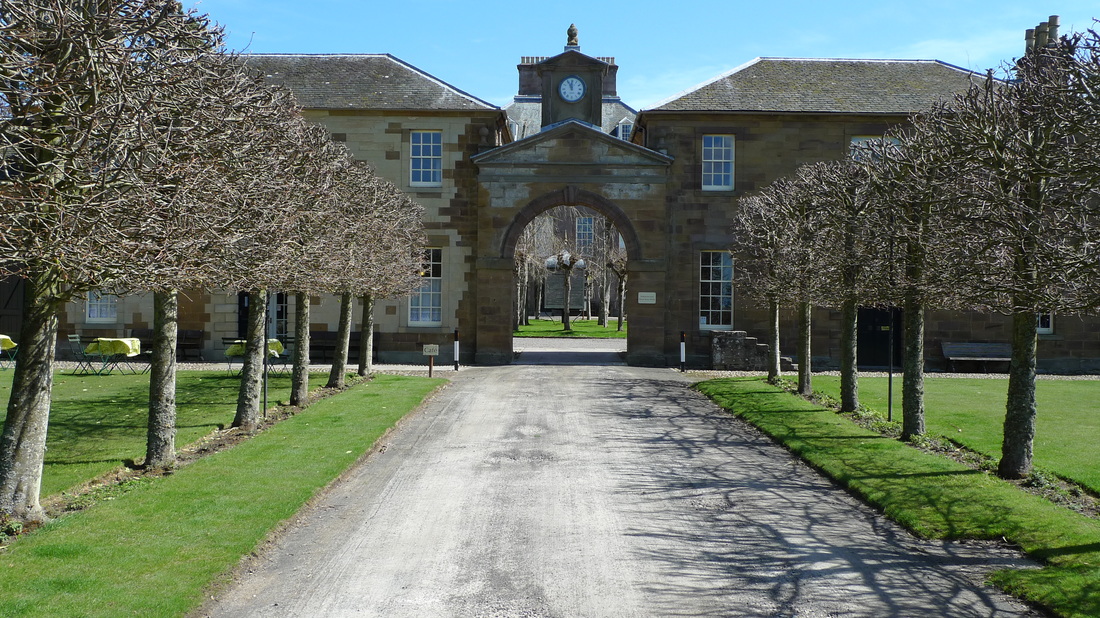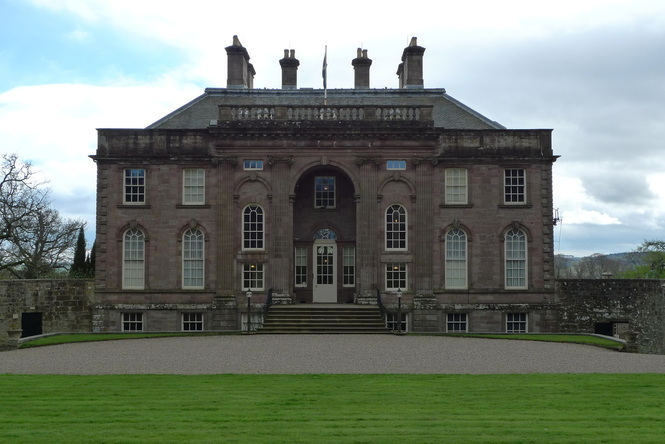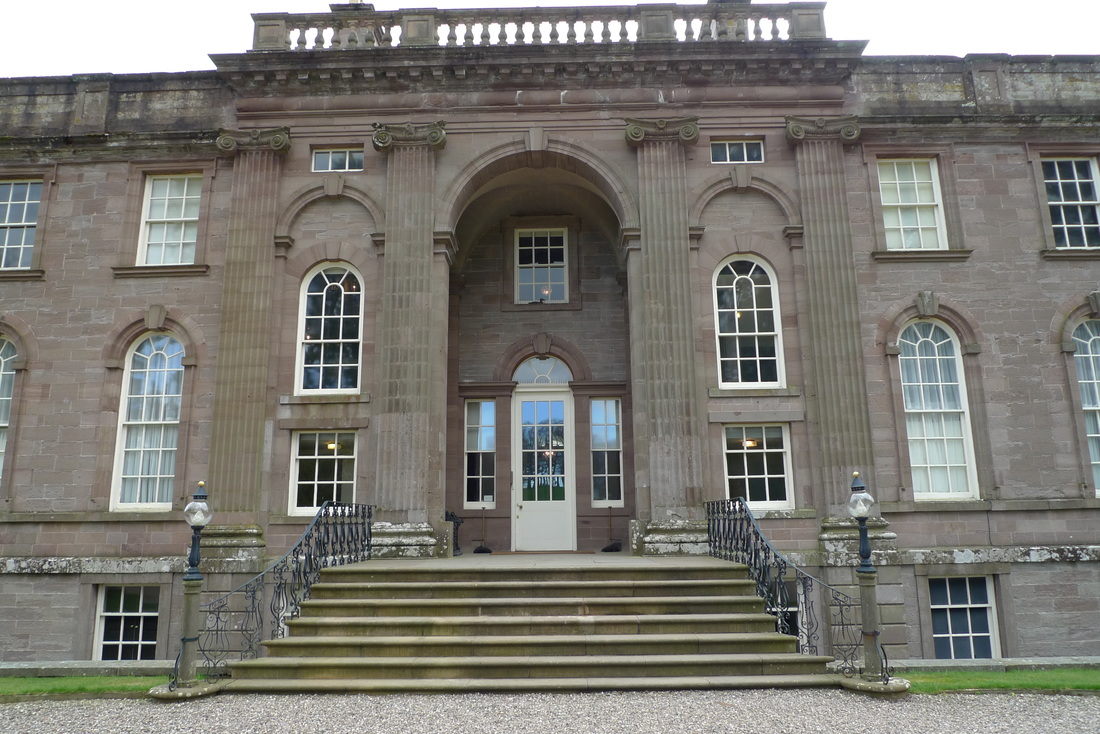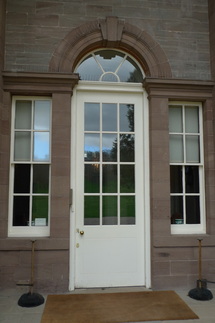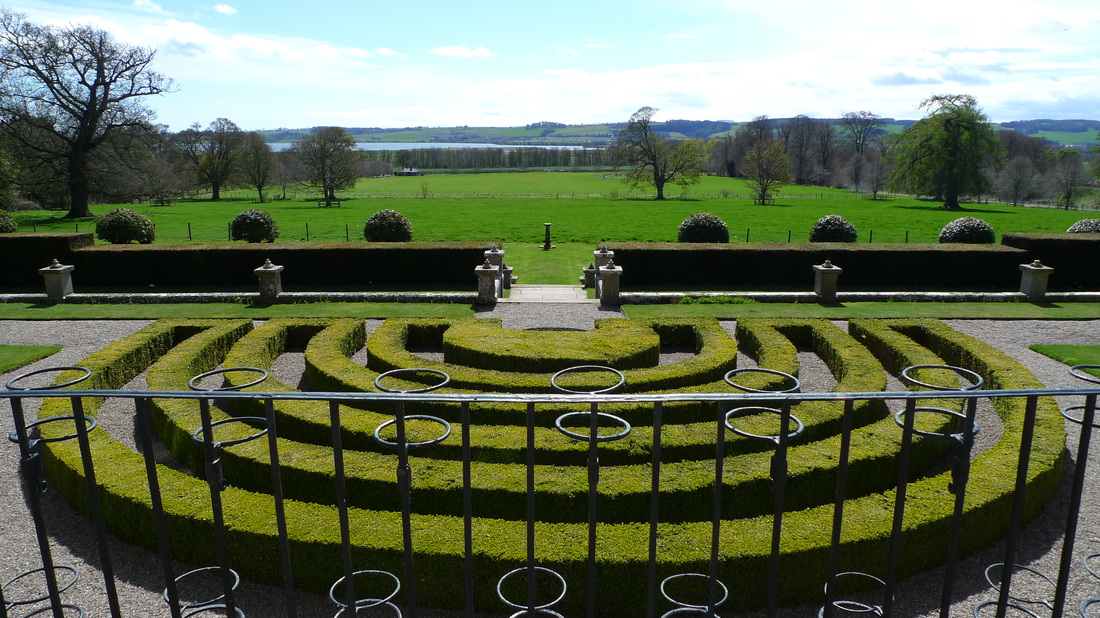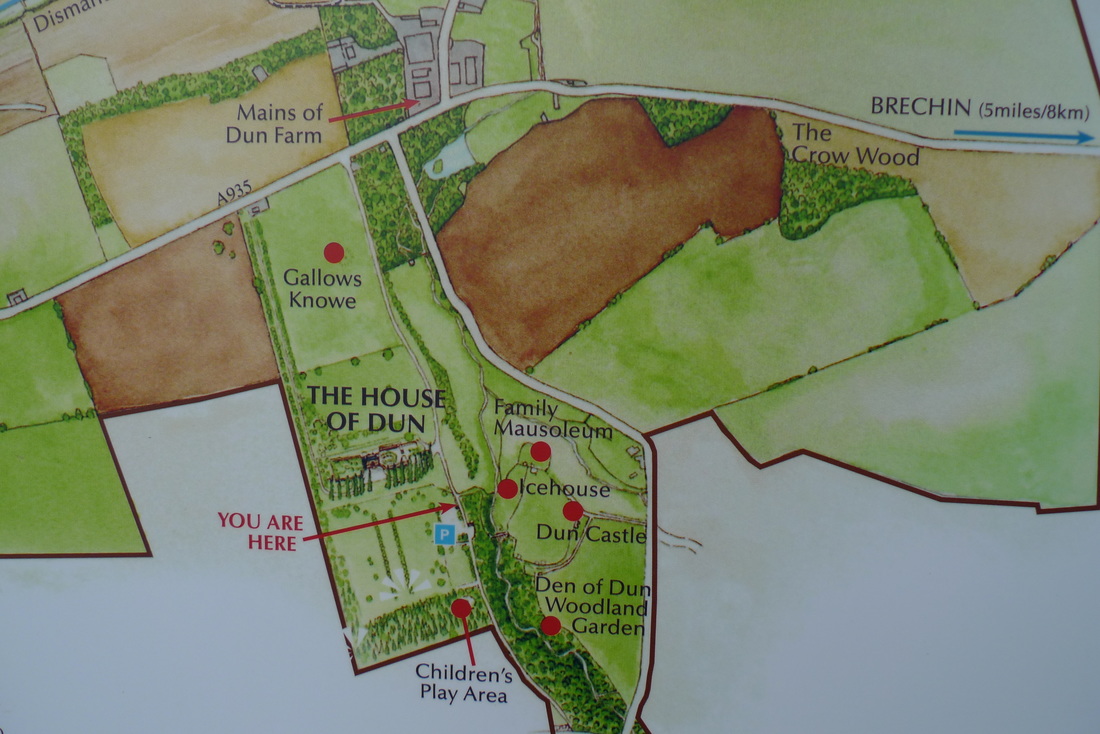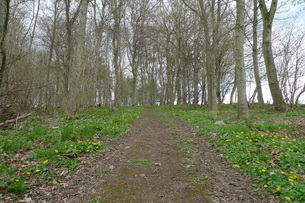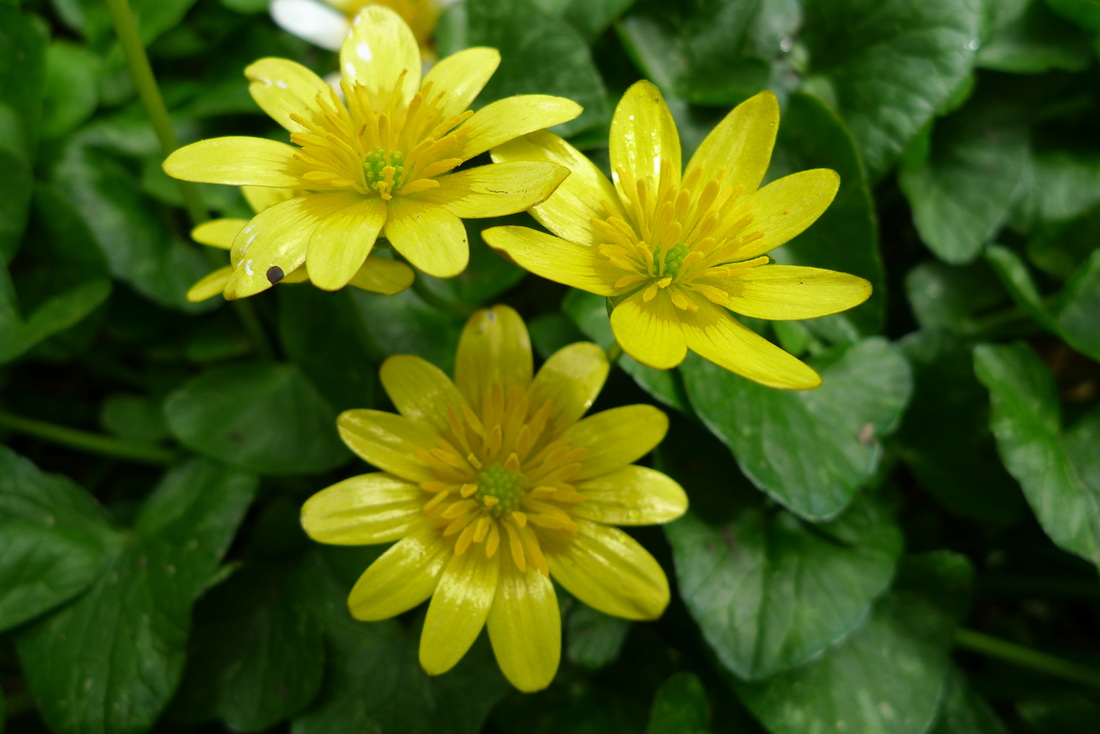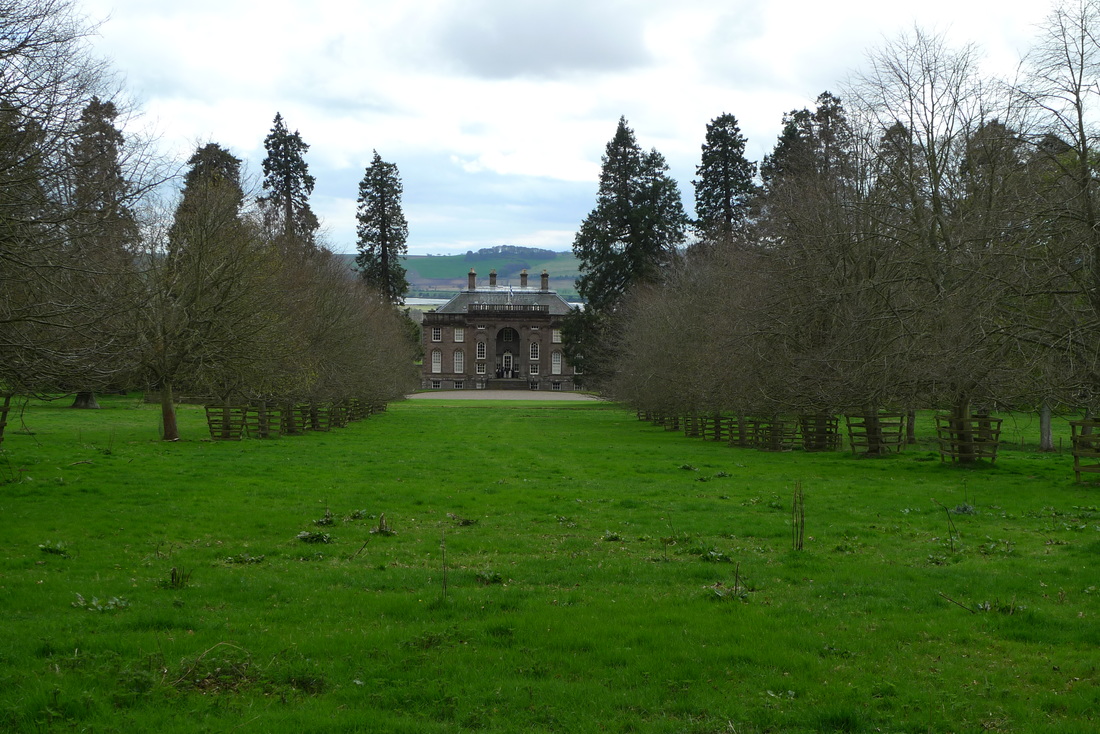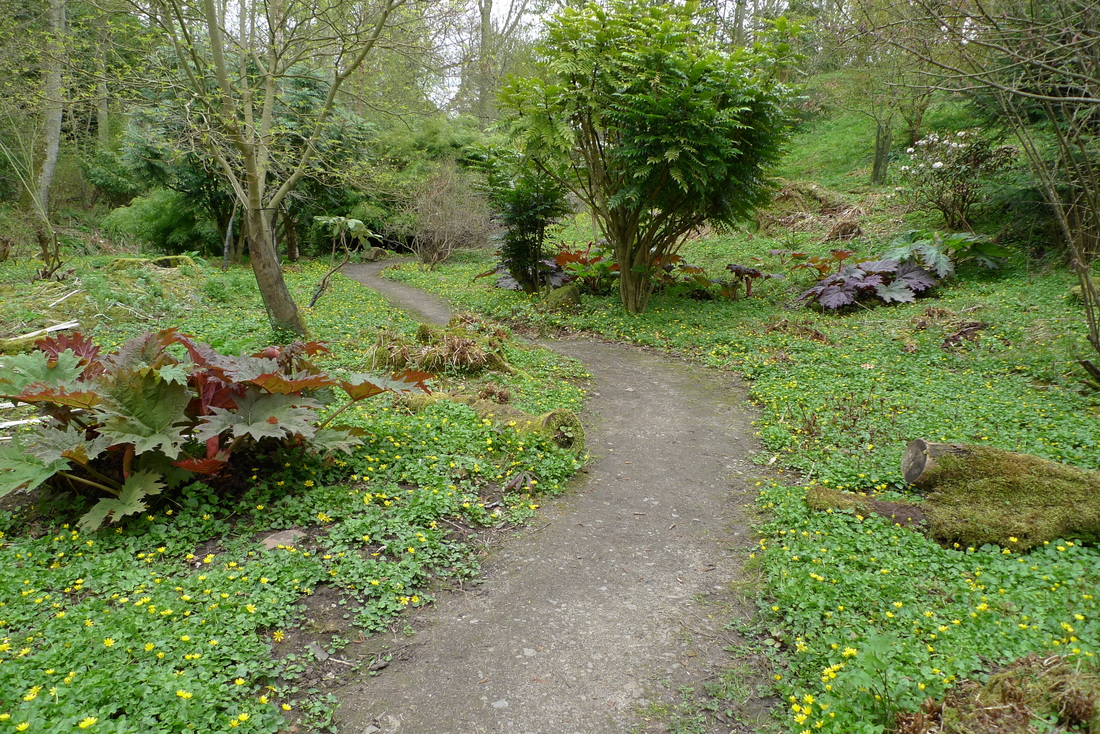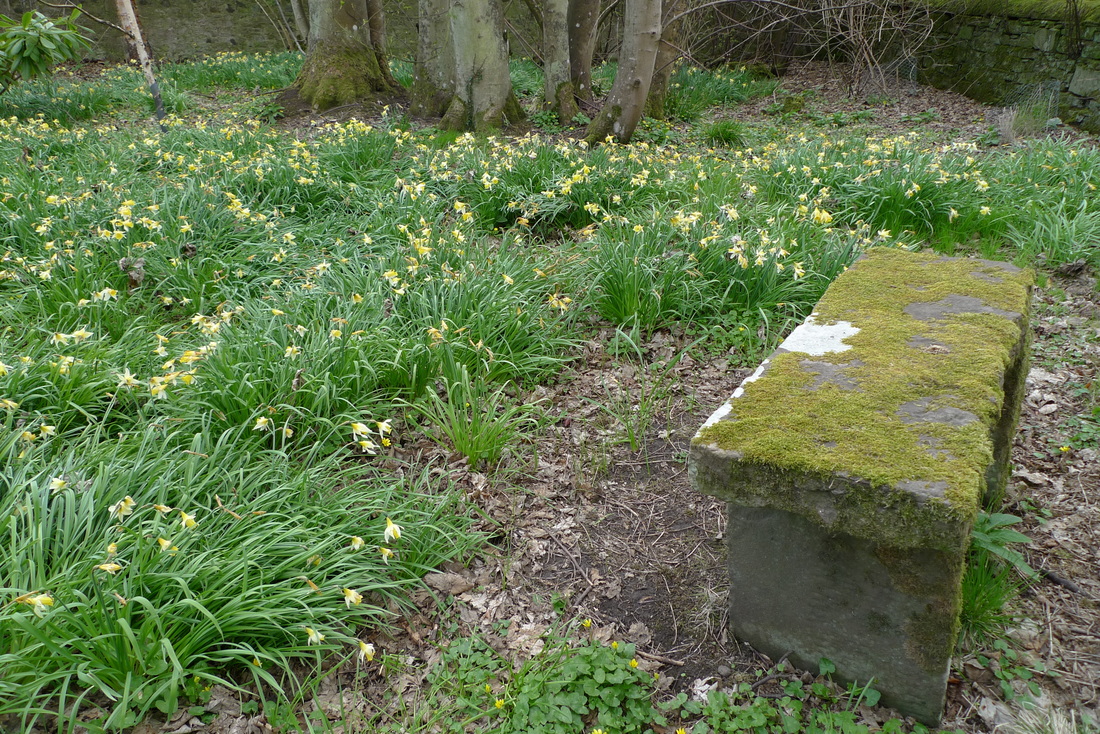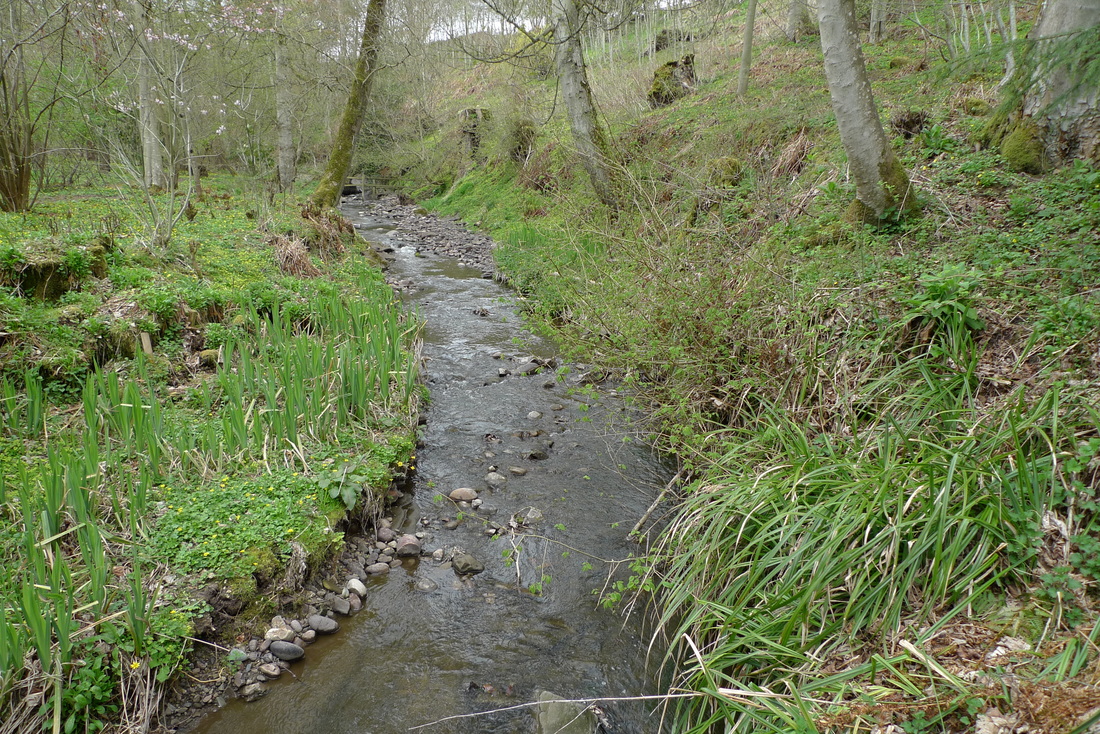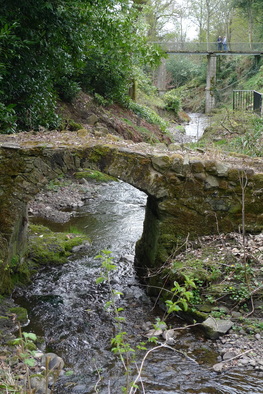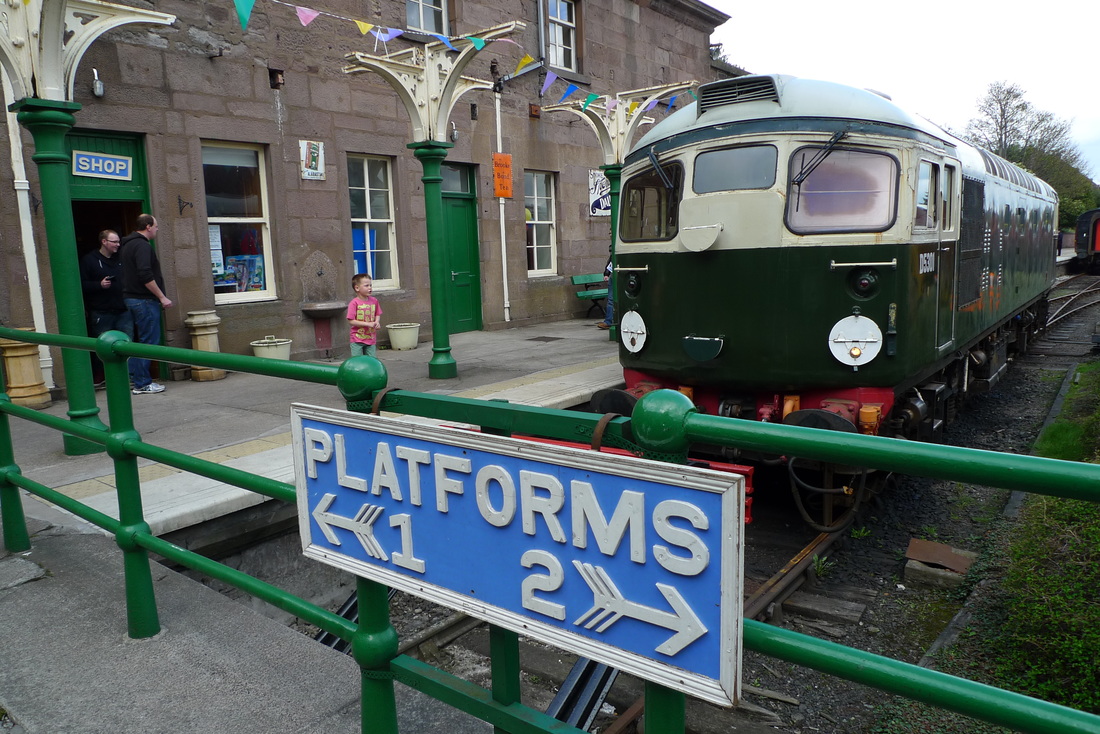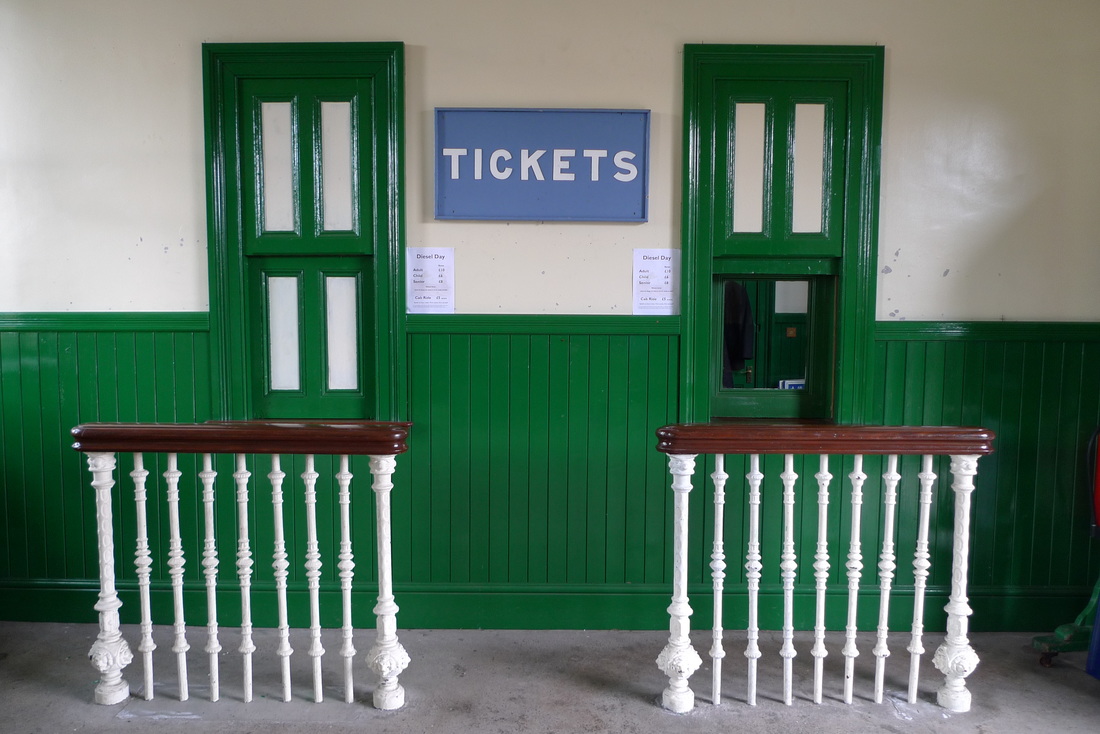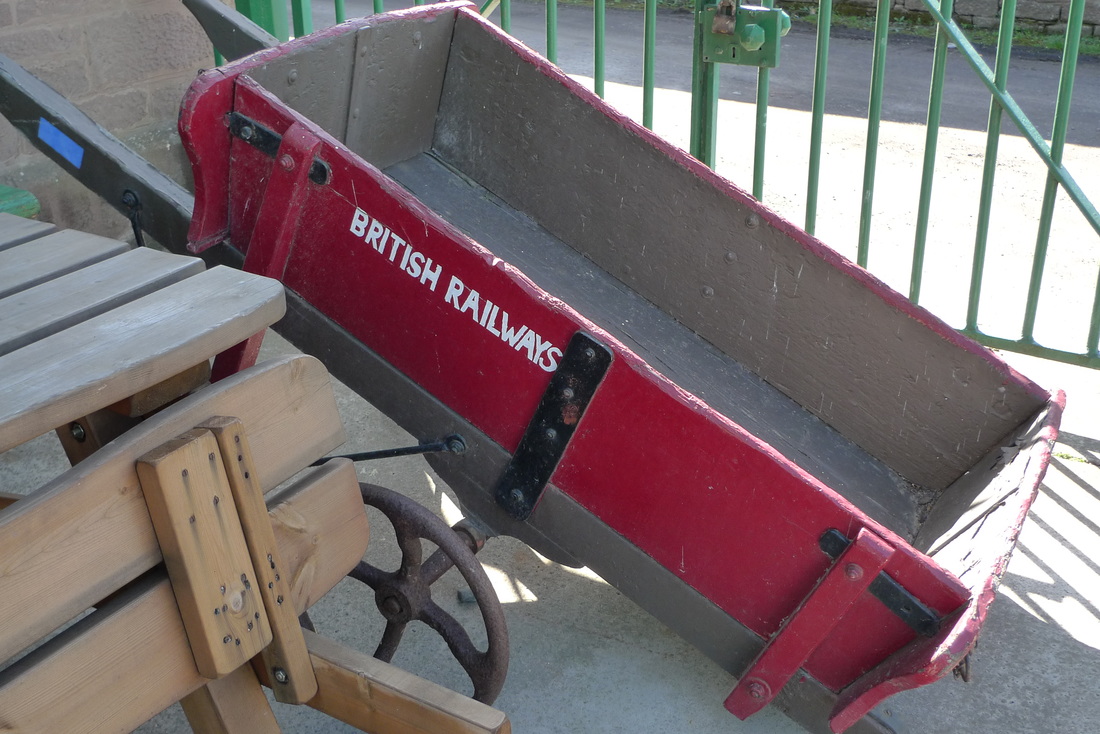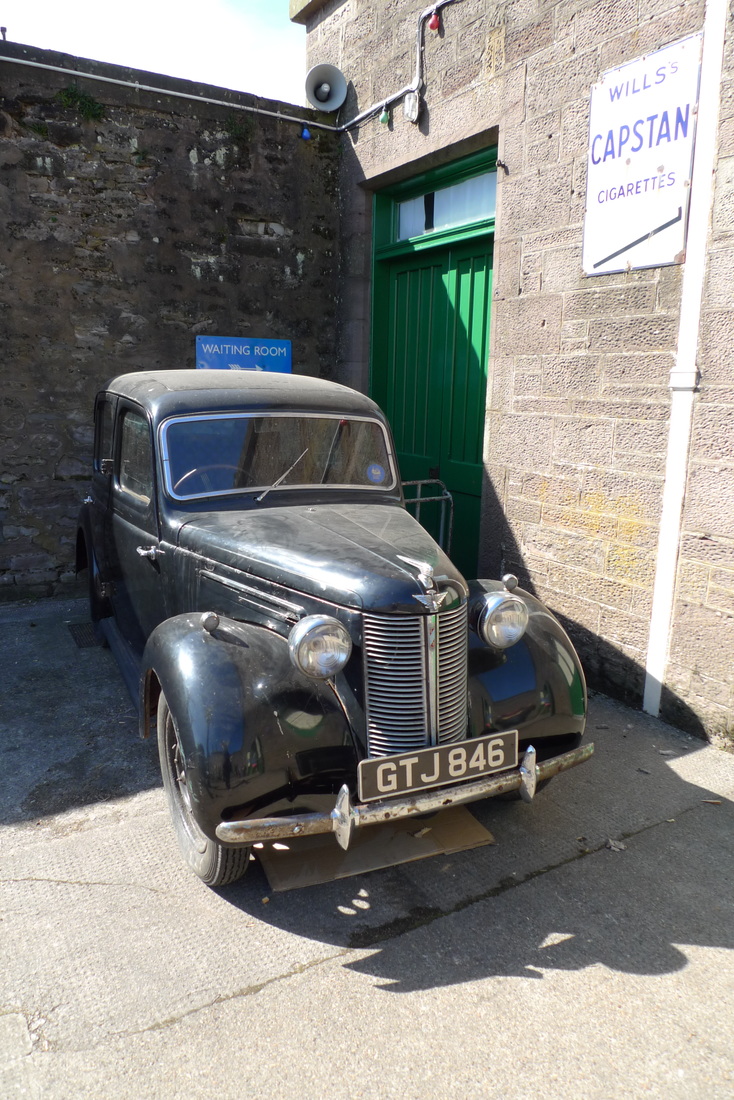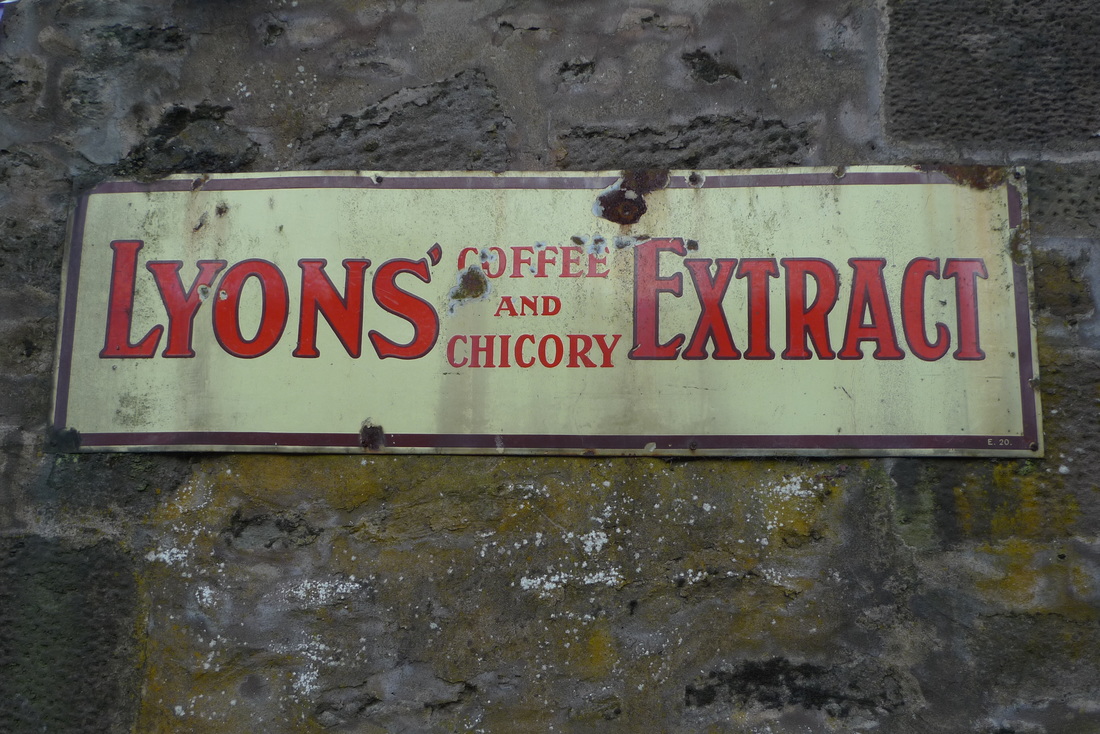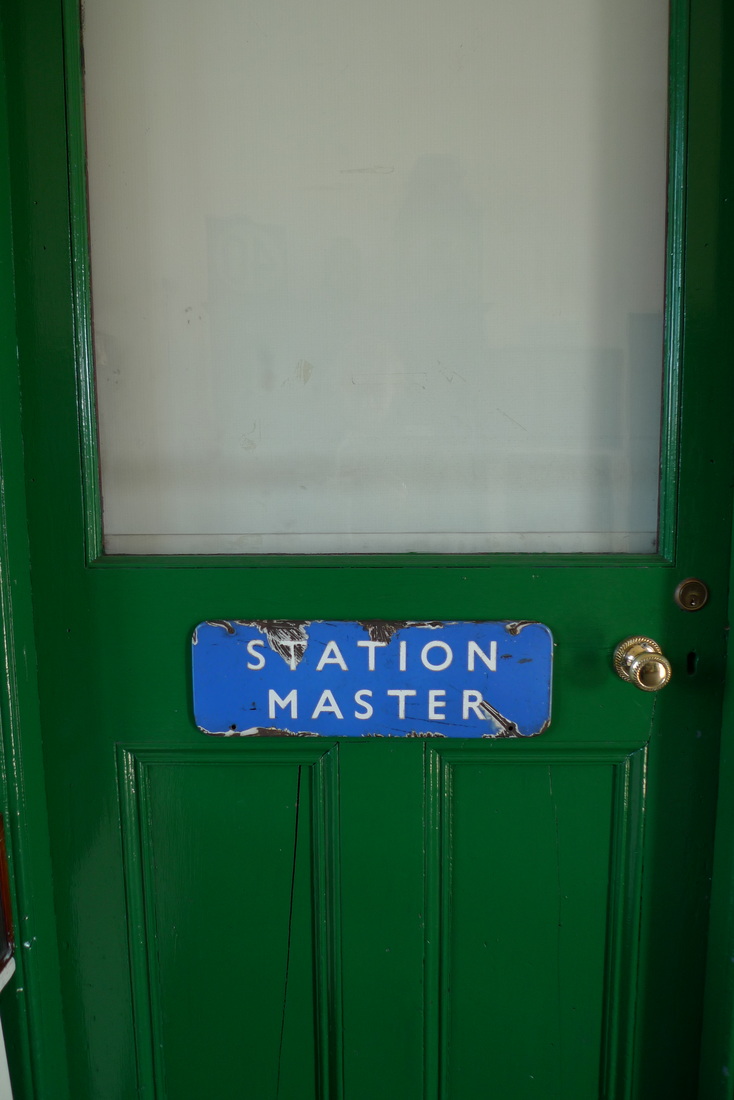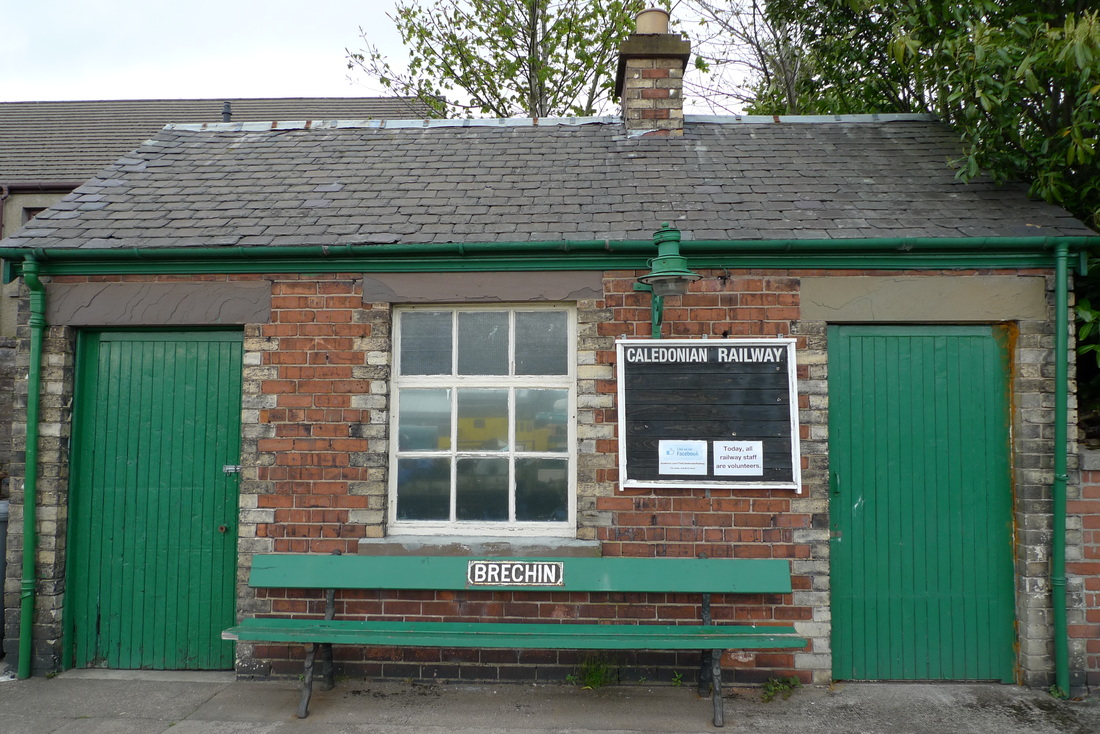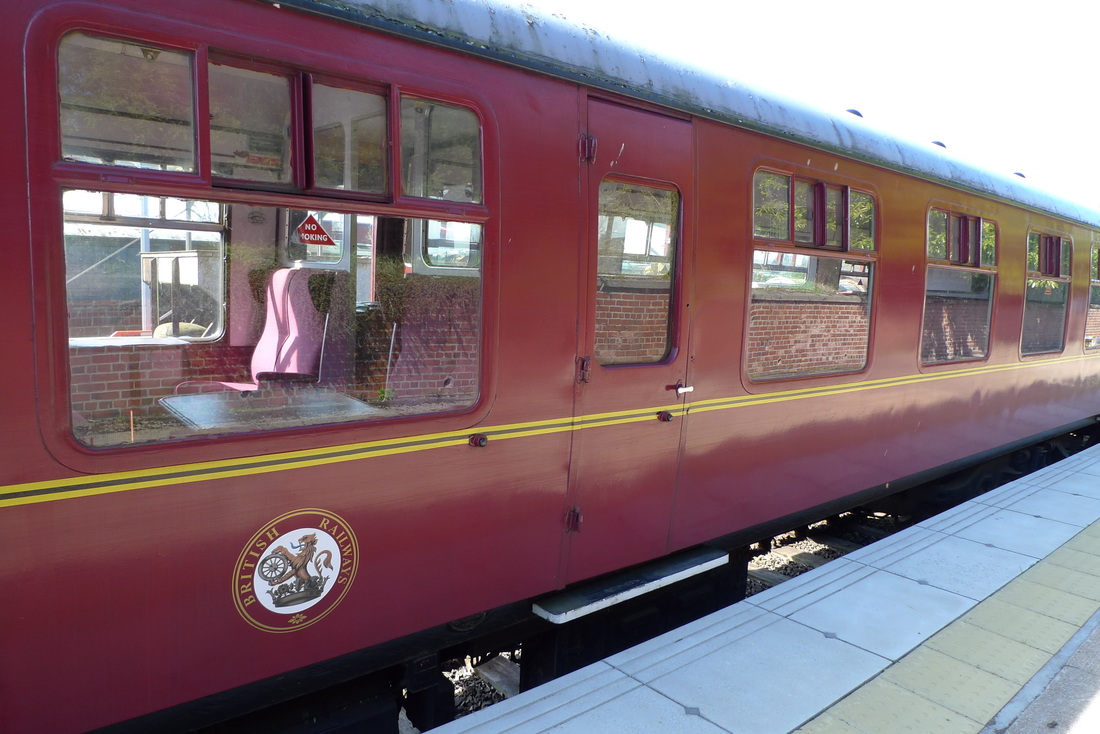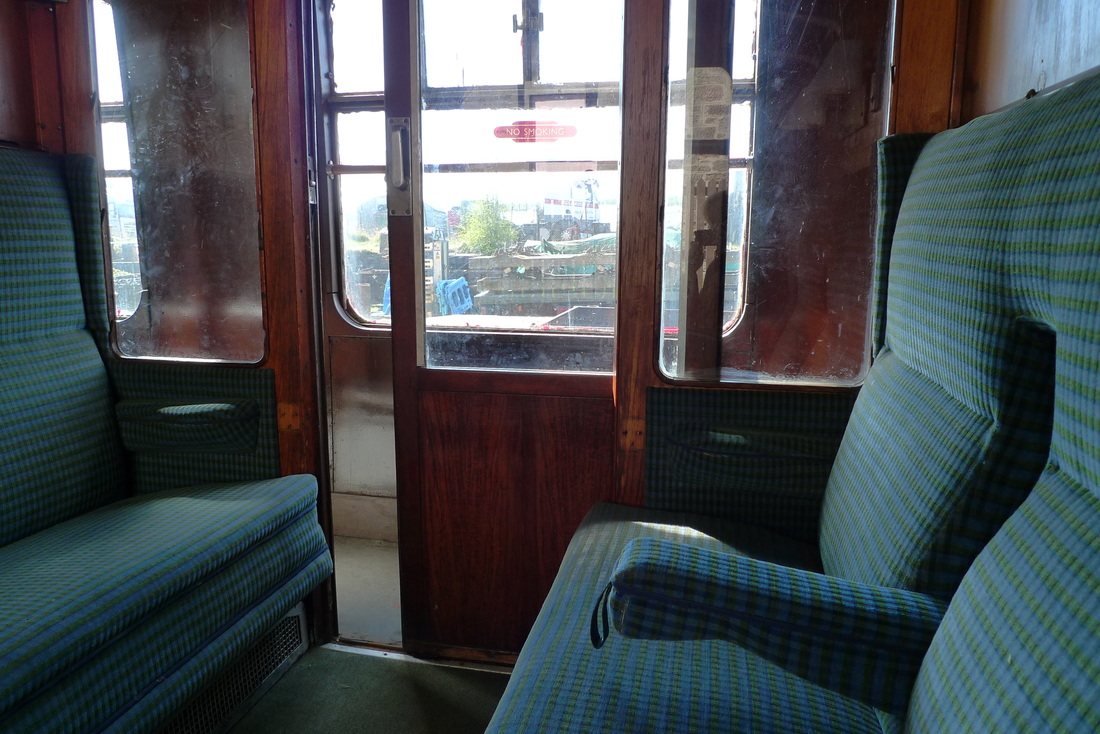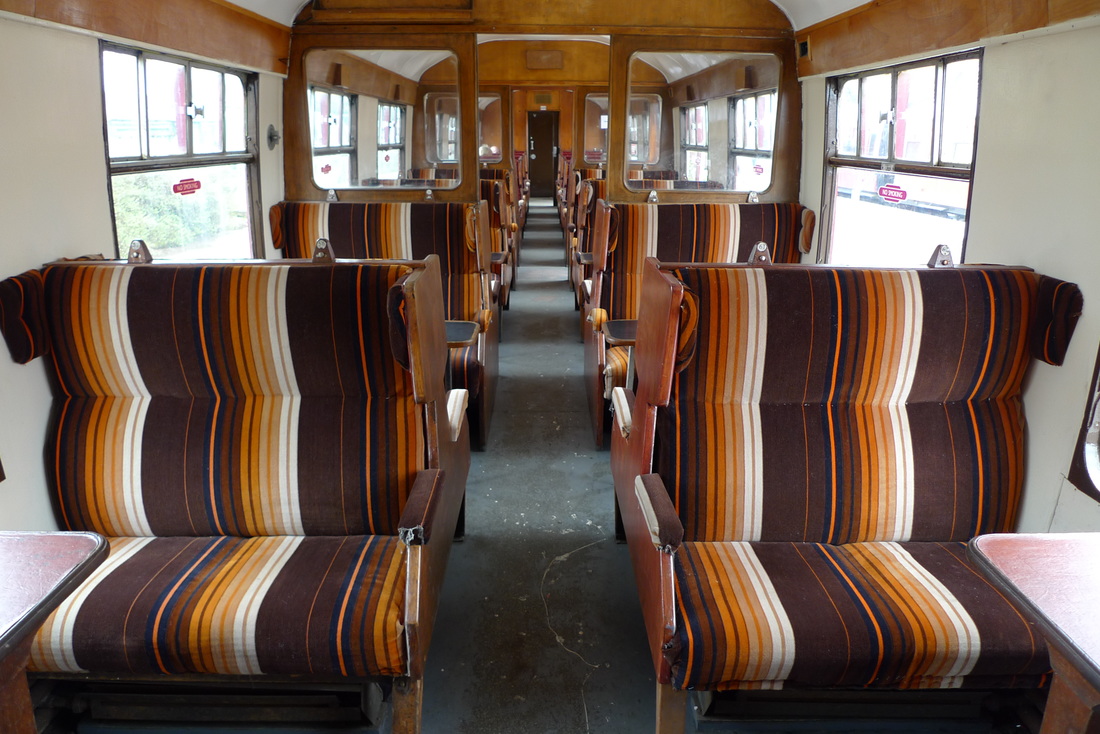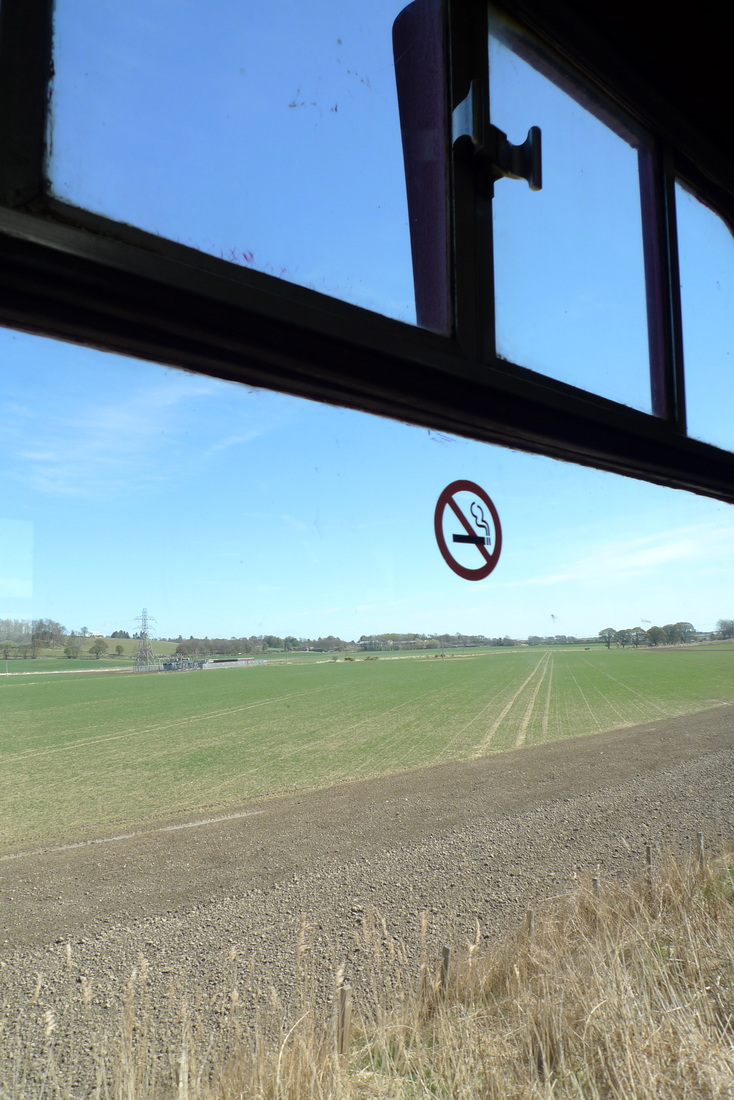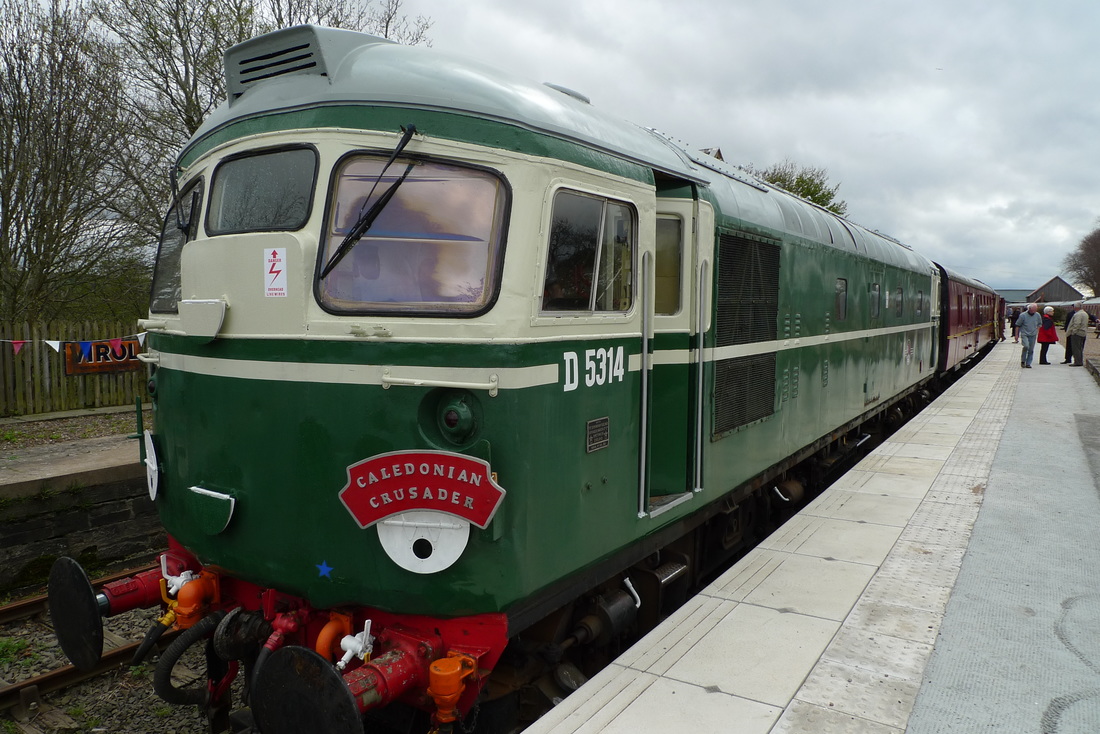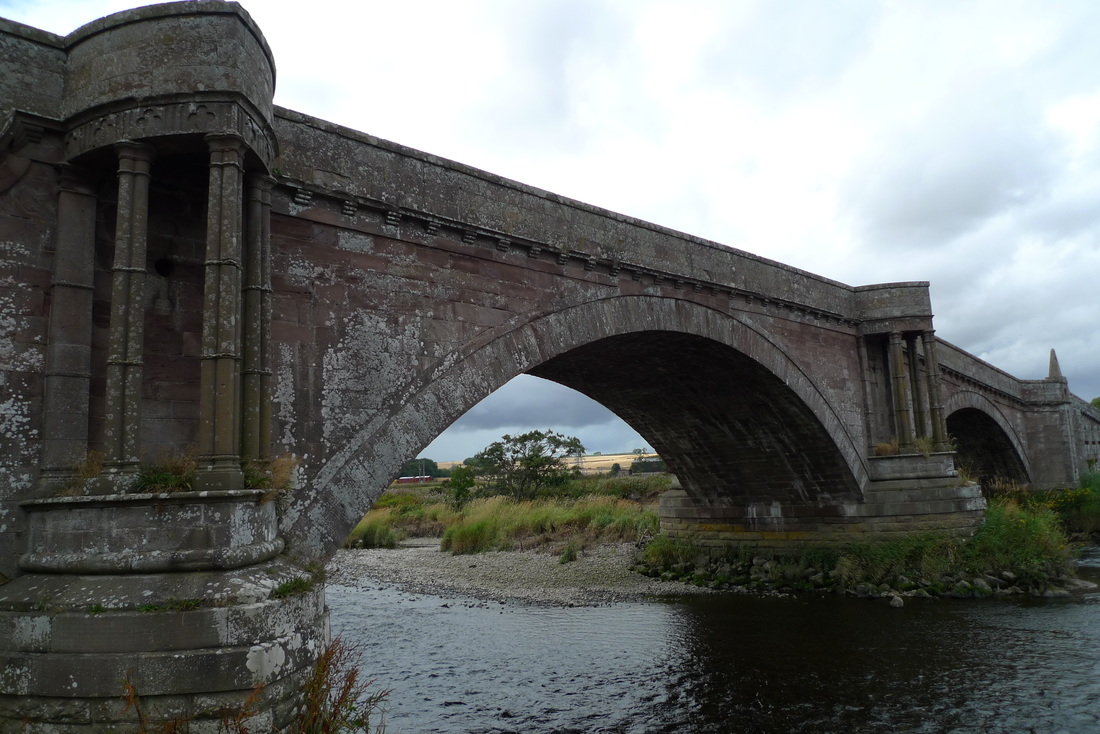|
I love trying famous Scottish foods in the place that they come from. You can get variations of the bridie all over Scotland, but I can tell you that nothing beats a bridie from Forfar. On this route you can try one and see some of Scotland's finest Pictish stone carving.
Highlights of this route
Getting to Forfar
From Kirriemuir
I made this journey as part of a cycling trip to Glen Clova. I took the A926 from Kirriemuir to Forfar. It's only 6 miles. This road has a steady volume of traffic, but there is a way to avoid this. A pavement runs alongside the road. It has signage, in places, indicating that it is a shared pedestrian and cycle path. I was able to use this and encountered very few pedestrians. It's not the best surface in places, but for the short distance its worth it to avoid sharing the road with fast moving traffic. From Arbroath You can also do this route by taking a train to Arbroath. Forfar is around 15 miles from Arbroath. Just follow my blog in reverse if you are starting in Arbroath. Bridie at the priory
Once in Forfar I headed straight to Saddler's bakery for a bridie. Although the traditional tea room with its wood panelling was enticing, the bridie is best enjoyed as a takeaway food. I found the perfect location, about 10 minutes bike ride away, at Restenneth Priory.
The priory was founded in the early 1100s and the most distinctive feature of the ruin is the 14m high tower. In 1325 Robert the Bruce buried the body of his son here.
There's not a great deal to see, but Restenneth is a pleasant spot. I took a seat and tried my first ever Forfar Bridie.
I loved every bite of it. The salty pastry was crispy in places. It was packed with a juicy meat filling made sweet by onions. A restaurant critic, Tam Cowan, was equally impressed: "My bridie was sensational — the soft buttery pastry was packed with mince and onion — and I marvelled at the simplicity of this very satisfying meal. Oysters? Lobster thermidor? Chateaubriand? Nah. Give me a bridie and beans any day of the week." There are two versions of how the bridie came about. One is that it started out as a traditional meal served to the bride at weddings, hence 'bridie'. The other is that a Margaret Bridie sold them in the eighteenth century from the market in Forfar. Pictish stones
If you come for a Forfar Bridie then you really should include a trip to the Aberlemno Pictish Stones. From Restenneth Priory it is a 5 mile cycle along the B9134 to reach them.
The four stones are among the best examples of Pictish stone carving in the country. They date between AD 500 and 800. The stone that depicts a battle is particularly exquisite, with helmeted figures on horseback.
It is incredible that these are so well preserved and survive all that the Scottish weather can throw at them. They do get covered with wooden boxes in the winter months, so you need to time your visit to see them.
Another of the stones depicts a hunting scene, with figures on horseback.
Another stone looks onto a field. It has carvings of symbols that are typical of Pictish stones- the serpent and double-disc and z-rod.
The location of the road in relation to the stones is crazy. You have to be careful when viewing the stones.
The stones are adjacent to Aberlemno Parish Church. The building dates from 1772 and it was open during my visit. A spiral staircase takes you to the upper gallery where you can look down on the pulpit. Balgavies Loch nature reserve
This loch is about 4 miles south of the Aberlemno stones. Its a haven for wildlife, including red squirrel, kingfisher and skylark.
After miles of similar looking farmlands this is a surprising change of scenery.
Another suprise, next to the loch is a disused railway station. Auldbar Road station was on the Arbroath to Forfar Railway. The line closed in the 1960s, but you can still find a station house and signal box here.
To Arbroath
It's about 12 miles to Arbroath station, where you can pick up trains heading to Aberdeen, Edinburgh and other locations. That's using the quieter roads, but you can reduce this by around 2 miles if you cycle on the busier A-roads.
I took the quiet roads. My head was down as I had a train to catch, so I didn't take in a lot of detail. It's farming country with good roads that don't get a lot of traffic.
2 Comments
"Like the fingers of a hand stretching from low lying farmland of Strathmore deep into the southern ranges of the Cairngorms."
I found this description of the Angus Glens on a visitor information panel. It perfectly describes the journey into Glen Clova. It begins in farmland, quite ordinary. Then the Cairngorm mountains appear on the horizon. Each pedal stroke brings you closer to them. You enter a landscape that was sculpted by melting glaciers. It's spectacular to travel through. Getting to Glen Clova
You can follow these steps to reach Glen Clova:
1. Take a train to Arbroath. Then cycle 20 miles on quiet roads to visit Glamis Castle. I have a blog about this route. 2. Cycle 5 miles from Glamis Castle to Kirriemuir. This is on the A928. Although it's not the most exciting road it is flat and smooth. I found the traffic volume to be low. 3. Cycle 5 miles from Kirriemuir to Dykehead, the start of Glen Clova. The scenery starts to get interesting on this road. There are twists and turns ad forested sections. It feels like a road leading to something special. 4. It's then a 9.6 mile through Glen Clova to the Glen Clova Hotel. Kirriemuir
Make sure to stop in Kirriemuir. It's the gateway town to the Angus Glens and has:
JM Barrie gifted a cricket pavilion with a camera obscura to the town. Kirriemuir's camera obscura is one of only 3 in Scotland.
Another famous person born here is Bon Scott, the lead singer of AC/DC. There's a statue of him on the Bellie's Brae Road. Scotland's oldest sweet shop is right here in Kirriemuir. It opened in 1833. Name your sweet, they've got it. It's called the Star Rock Shop after their own, unique sweet. Star rock is made in the kitchen in the back of the shop. It's a hard sweet, flavoured with natural lemon oil. It's wrapped in paper that has a lovely, classic design featuring the Peter Pan statue. Entering Glen Clova
Dykehead, with its pretty cottages, is 5 miles from Kirriemuir. This marks the start of the glen. After a few pedal strokes the mass of the Cairngorm mountain range appears on the horizon.
The junction
Around 3 miles later the road splits. It doesn't matter which path you choose as they both take you to the same place. This is the great thing about this road, it means you can do a loop and come a different way when you travel back out of the glen.
I took the right-hand road, where the sign points to 'Rottal Lodge'.
The sound of the River Esk, meandering through the valley, is a constant companion Sometimes you are looking down on it. Sometimes it is flowing right next to you.
Then there is the beauty of the plant life. It was the ferns that caught my attention. So common all over Scotland that they are easy to overlook, but in Glen Cova they seemed to have a prominence. They made the place rich, lush and smell amazing. I took a closer look at them, the beauty of the simple pattern of their leaves.
The glen is teeming with bird life. I heard lots of different songs and calls as I pedaled along. I saw lapwing and oystercatcher and many others that I didn't know the names of. There were rabbits everywhere, some dashing right in front of my front wheel. Sheep were slower moving than the rabbits and some stopped to stare at me.
There is a feeling of going deeper and deeper into nature, getting closer to the moutains and further from the towns and cities. And that brought a great sense of well-being, that cares and worries were being left behind. I loved being in this place.
Glen Clova Hotel
As I got closer to the hotel I imagined what it must be like. I pictured a spectacular and secluded location that would forever make me smile when I drifted into my memories. It turned out to be even better than that.
The hotel has an immaculate white exterior and is very well appointed. It's the perfect place to relax at the journey's end. There's a bar with a wood burning stove and a restaurant with a bay window overlooking the glen.
I had a heavenly crab salad for a starter, followed by the Clova Fish Box. This is fish n' chips, presented in a wooden box printed with the name of the hotel. The haddock is from Arbroath and potatoes from the nearby farm are used to make the chunky chips.
After dinner I took my pint of Clova Ale to the outside tables. I got bitten by swarms of midges, but I didn't care. I was in this wonderful place, listening to bird calls, baa-ing sheep and trickling water from the Corrie Burn.
There's always a 'moment' on a great bike trip where everything feels special and you are so glad that you made the journey. Sitting outside the Glen Clova Hotel was definitely the 'moment' of this trip. Evening wander
I loved that it was still daylight at 9pm and I could keep on exploring. Clova Kirk is opposite the hotel. One of those simple church buildings that are found all over Scotland, but always complement their surroundings. It's made of sandstone and Aberdeenshire granite. It's no longer a parish church and is now mainly used for weddings.
The road goes beyond the hotel into Glen Doll. Each step that I took revealed somewhere that managed to be even more magical than Glen Clova. I was surrounded by rugged and majestic hillsides- the impact of the melting glacier was clearly on show. It was a tantalising glimpse of where I would cycle tomorrow.
Glen Doll
After a breakfast of poached eggs I cycled into Glen Doll. Mist hung in the air, creating that mysterious and authentic Scottish glen atmosphere.
I passed rocky outcrops where some sheep had got themselves into precarious positions.
The road between Glen Clova and the Glen Doll Ranger Base is only 3.5 miles, but it is one of the most beautiful short cycle rides I have experienced.
Glen Doll is very popular for walking. I saw signs and boards with route maps. There is a lot to explore here and I made a note to return one day.
Where to next?Scotland. So many castles. If you can't visit them all, how do you choose which ones to visit? If Glamis Castle makes it to your list I can tell you that there's something really special about travelling down the long driveway. The castle gradually comes into view. It looks more and more magnificent the closer you get. It has one of the most beautiful castle shapes I've seen. A clock tower in the middle from where the rest of the building radiates outwards with towers and turrets. How to get thereGlamis Castle is 12 miles from Dundee. If you are cycling to the castle I recommend travelling from Arbroath where the roads are not as busy with traffic. My cycling route to Glamis Castle has all the details. The driveway to the castle is almost one mile long. Cycling down this is the best way to appreciate the unfolding view of the castle. It's just the right speed to get the full affect of the big reveal. I think doing it in a motor vehicle wouldn't be quite as impressive because you would get there too quickly. 125 roomsThe guided tour lets you see 10 of the 125 rooms in Glamis Castle. I think a 10 room house sounds extravagant, but 125 rooms is on a whole other level. I can't even begin to imagine what it feels like to live somewhere with that many rooms. The Billiards Room is one of my favourites at Glamis. It's got a fine collection of books, the oldest one dates from 1510. The billiards table has a label that says 'The perfect cushions. Hurston & Co. Ltd. Leicester Square.' The burn marks on the table were caused by soldiers putting out cigarettes when the castle was used as a war hospital in the Great War. Jesus wearing a hatDid you know that there are only 6 paintings in the world that depict Christ wearing a hat? And that one of those paintings is in the chapel of Glamis Castle? It's the little details like this painting that I enjoyed the most about the guided tour. Here's another one- there's a travelling chest in Glamis that's made of shark skin. The idea was that if the chest fell off a boat and into the water the shark skin made it waterproof and protected the contents. A pet bear called FredThere's a lot of taxidermy in the castle. The most intriguing is a bear who was a family pet called Fred. My guide told me that Fred used to be taken walks on a leash and on one occasion he came off the leash and had an unfortunate encounter with a Highland Cow. The cow was protective of its calf and killed Fred. Royal connectionGlamis was the childhood home of Queen Elizabeth The Queen Mother. She was the daughter of the 14th Earl of Strathmore- the castle is the ancestral seat of the Earls of Strathmore and Kinghorne. There are Royal Apartments where there is a phone with a direct dial to Buckingham Palace. Castle kitchenYou usually find a tea room in historic properties, but Glamis has something that is a bit more special. It's called the Castle Kitchen and is located inside the huge Victorian kitchens, so there are plenty of original features. The menu features fruit and vegetables from the Castle's walled garden and you can even have afternoon tea with a glass of presecco. On my visit I had the pea soup and it was thick, tasty and comforting. GardensIt's the outdoor space that's often my favourite thing when visiting a Scottish castle. In my opinion the gardens at Cawdor Castle are hard to beat, but Glamis has the gorgeous Italian Garden. It's got an interesting layout of hedges and trees, including the most amazing tree canopy I have ever seen. It's like a train station canopy, but made of trees. I was delighted by this structure and it was my favourite part of the gardens. It must have involved people with great talent, skill and a love for gardening. When I walked under it I looked up to marvel at the network of interwoven branches. In wet weather, I imagine, this is a good place to keep dry. Highland cattle and moreIf you love Scotland's iconic Highland coo then Glamis is a great place to see them. There's also pleasant walks by the Dean Water, including a chance to cross the beautiful Earl Michael Bridge. There's a pet cemetery that has headstones for the family pets, including a dog called Fizz Wizzie and a guinea pig called Happy. The Great Sundial of 1671 was used to set the castle's clocks. It's 7 metres high. Glamis villageOutside the castle grounds you will find this lovely village with attractive cottages and stone buildings. It was built, mainly, to rehouse estate workers when the castle was being redeveloped under the 9th Earl of Starthmore. More castles
Glamis Castle is in Angus, not far from Dundee and you can get there by following my cycling route.
Route highlights
Start at Arbroath station
Glamis Castle is only 12 miles from Dundee, however, there are a lot of busy roads in and around Dundee. That's why I recommend taking your bike on the train to Arbroath. Although this means a longer, 20 mile cycle, you will be on quieter roads. I experienced long stretches with no motor vehicles on the road.
A train to Arbroath takes around:
You should leave the station via Keptie Street. This is where you will find the Keptie Bakery. They are know for their award winning pies and scones. Take the B9127
Once you have left Arbroath it's pretty standard Scottish B-road scenery. It's farming country. It's pleasant, but nothing to get too excited about.
The one thing that stood out was the interesting place names- Hayhillock, Kirkbuddo, Whigstreet. The highest hill in the area is called Carrot Hill. Milton Haugh Farm Shop
After 6.5 miles you come to a farm shop, located inside a converted barn. It's worth stopping here to pick up some fresh, Angus, produce. I bought some delicious raspberries that oozed with sweet, luscious juiciness.
There's also a cafe serving good coffee, home baking, soups, baked potatoes and other meals. It's got roof beams, a wagon wheel chandelier and a mural with a farming scene of tractor in the fields and a happy family.
Inverarity Parish Church
Surounded by farmlands is this small white church of a type you can see in many parts of Scotland. It's about 7 miles from Milton Haugh Farm Shop. The church is Georgian architecture and was built in 1754. A simple design, but I love churches like this.
Inverarity has a couple of unusual features. The bell is from Holland, cast around 1614. There's a stained glass window that has three geese.
There are some interesting headstones at Inverarity. Look out for the elaborately carved stone that was purchased by a watchmaker in Forfar for his sister.
Mountain time
The final 6.7 miles of the route were the best part. This is where Angus really starts to show off. There are tree-lined sections of road that are so pretty you'll want them to last forever. It's the countryside roads that are in your cycling dreams. It's like a scene from a painting because it is so perfect.
Then the Cairngorms mountain range comes into view. This happens all of a sudden, in dramatic fashion. After miles of farming land the mountains appear on the horizon. It feels like the whole ride has been building up to this finale.
There is a bit of a climb to get to this point, but it is followed by a fast descent that will have you crying out for joy, or at least grinning all the way. As you race to the bottom your eyes are drawn to the mountain panorama.
Visiting Glamis Castle
Find out what there is to see and do in my blog about Glamis Castle
Glen Esk is a beautiful place of mountains, forest, wildlife, peace and fantastic cycling and walking opportunities. It is located in the Angus region of Scotland, around 40 miles south of Aberdeen.
This is why you must visit this special place:
1. Mountain Scenery
Glen Esk is at the foot of the Cairngorms National Park so everywhere you look there is a vista of lush green Scottish mountains.
2. A beautiful road into the glen
A 16 mile single-track road from the town of Edzell is the only way into and out of the glen. The road has very low volumes of traffic and is glorious for cycling.
3. Queen's Well Walk
It is the strangest thing to see this crown shaped monument, with nothing but hills and sheep in the vicinity. It was built by local people to commemorate a visit by Queen Victoria. You can reach it on a spectacular walk where purple Heather blooms in the summer months.
4. The Three Churches
For such a remote area with a low population it is quite amazing to find three churches in Glen Esk. All of them have their doors open so you can look inside and enjoy their tranquility, Maul Memorial Church is substantial with a tower, stained glass and high ceiling. Lochlee Church is tiny. In the yard there is an unusual gravestone, shaped like an anvil, that was created for the village blacksmith who had lived to the age of 90.
5. Glen Esk Folk Museum
This museum has a giant willow sculpture of a stag on the lawn. There is a collection of artefacts, costumes and reconstructions of what Glen Esk houses were like in the 1850s. This is the place to learn about the people of the glen and what their lives were like. There is also a cafe with excellent home baking.
6. Blue Door Walk
Open up the blue door and on the other side there is a special world of forest paths, rock pools and a fast flowing stream. It is a real life secret garden! The water is incredibly clear, providing a flawless view to the river's floor of pebbles.
7. Loch Lee
Loch Lee is located at the very end of the Glen Esk road. It is completely enclosed by mountains so has a feeling of great remoteness. There is a rough track along the shore which is great fun to cycle.
8. Invermark Castle
Also at the end of the road is Glen Esk's castle. It is a ruin and you cannot go inside, but looks great, so is ideal for your very own Scottish castle postcard photo.
9. Wildlife Spotting
Glen Esk is teeming with wildlife. There is a good chance of spotting a Golden Eagle, deer and red squirrels. One of the best viewing spots for squirrels is from the dining room window of the House of Mark guesthouse.
10. Stay in the House at the end of the Glen
House of Mark is the only accommodation in the glen. There are no hotels, pubs or shops. This makes it a unique and peaceful place to stay overnight. The interior has been kept true to its Georgian roots making you feel like you have gone back to a simpler and more elegant time. There are special touches like rooms scented of smoke from the fireplaces and a dinner table set with crystal glasses and white napkins. There are no televisions, but conversation with fellow guests and the hosts is much more entertaining.
Read my review of House of Mark Getting to Glen Esk It is about 30 miles from Montrose to the end of Glen Esk. If you travel from Laurencekirk the distance is around 23 miles. There are train stations at Montrose and Laurencekirk. For more details about cycling to Glen Esk read my travel feature.
The Montrose Basin Cycle Route is an 11 mile circular ride that allows you to visit House of Dun, with its stunning plaster ceilings, the Caledonian Railway with its steam trains and the town of Brechin with its round tower. Montrose is less than 2 hours by train from Edinburgh or Glasgow, so this outing can be achievable as a day trip.
Step One: Cycle 4 miles from Montrose station to House of Dun When you leave the station turn left to get to House of Dun. The cycle route is alongside the A935 on pavements or segregated cycle paths. After 3.8 miles you will reach House of Dun. This country house was designed by the famous Scottish architect, William Adam. You can take a tour of the house, explore the gardens and feast on the home baking in the tea room. Read my blog about the House of Dunn
Step Two: Caledonian Railway
Almost opposite the entrance to House of Dun there is a turn-off for Bridge of Dun. Take this to reach the Caledonian Railway. On summer weekends heritage steam and diesel trains travel between Bridge of Dun and Brechin. This experience is about train travel for pleasure. This is all about stepping back in time to an era of carriages with compartments, windows that open and doors that you slam shut. Lock up your bike here and take the train to Brechin. Read my blog about the Caledonian Railway
Step Three: Explore Brechin on foot
Brechin has a pleasant town centre with merchant's houses dating from the late 1700s. The round tower, next to the cathedral, is one of only two in Scotland. Read my blog about Brechin
Step Four: Cross the Bridge of Dun
Return to Bridge of Dun on the Caledonian Railway and cross the spectacular bridge on your bicycle. Read my blog about the Bridge of Dun
Step Five: Cycle around Montrose Basin
The Montrose Basin Cycle Route is an excellent example of forward thinking by a local authority. The busy A935 makes it daunting to come here on a bicycle, but by making the pavement shared pedestrian and cycle path it has opened up the area to cycle tourism. Some parts of the pavement are very narrow with little space for bikes and people to pass, but they have made the best use of the existing infrastructure to ensure that it is viable to cycle safely in this area. The cycle path will take you back to Montrose station. Brechin is a pleasant town in Angus with interesting buildings, including a 1000 year old Celtic round tower. The most exciting way to reach the town is to cycle from Montrose to Bridge of Dun from where you can catch a steam train to Brechin. The Caledonian Railway is a heritage railway that operates steam and diesel trains between Bridge of Dun and Brechin. This is the nicest way to arrive into the town. The train station is one of the most striking buildings in the town with a glass canopy and decorative ironwork. Head to the High Street that has a steepness and collection of stone buildings that is reminiscent of Edinburgh's Old Town. The gable-ended merchant's houses date from the late 1700s. This style of building had the shop on the ground floor, the merchant's house upstairs and storage to the rear. Skinner's Burn walkway is a nice area of greenery between a stream and the rear of merchant's houses. The walk leads to the Cathedral. Outside the Cathedral a man in a blue anorak with a Yorkshire Terrier at his feet said to me, "come in, come in. I am one of the elders. Everyone is welcome. It's a fine Kirk, a fine Kirk." Once inside I found a peaceful and calming atmosphere, but it is outside that you will discover the most unique part of the building. This is the round tower, that dates from 1100, and is one of only two such towers in Scotland. They were much more common in Ireland and were bell towers. The tower at Brechin was here before the cathedral and incorporated into it. When a settlement came under attack these towers were also used as a place of refuge for people and valuables. The door is very narrow and six feet above the ground for the purpose of providing this protection. The doorway has beautiful carving, including a crucifixion at the top. In Saint Ninian's Square I was approached by a group of teenage boys and asked if I was from Brechin. When I said no they questioned why I would to choose to come here. "They should drop a bomb on it," one of them said. "Not when am still in it, idiot," his pal said. Another asked me if I was a rock star! I think this was in reference to my hair, which was a bit too long. He then said, "climb in that," and pointed to the granite fountain. "You won't get out again. It happened to me and I got lifted." "How did they get you out in the end?" I asked him. "They got me out with ladders." I was amazed that he managed to get into this fountain. It did not look easy. This encounter reminded me of how travellers and locals can have completely different perceptions of places. Whereas I found Brechin an enjoyable outing these boys were so bored that they risked climbing into a fountain and clearly could not wait for the day they could leave the town.
Getting there Take a train to Montrose. It takes around 1 hour, 40 minutes to 2 hours from Edinburgh or Glasgow, depending on which train service you travel on. It is a 4.3 mile cycle from Montrose station to Bridge of Dun, where the Caledonian Railway has a station. On summer weekends steam or diesel trains travel to Brechin. The Montrose Basin Cycle Route will take you there, mainly alongside the A935 on a segregated path or on the pavement. After 3.8 miles you come to a sign for Bridge of Dun, take this left turn and at the bottom of this road you will come to Bridge of Dun station. Both steam and diesel trains operate on the Caledonian Railway on weekends in the summer. If you have a preference for diesel or steam you should check the Caledonian Railway website to see which services will be running on which dates. Read my blog about the Caledonian Railway Why not visit the House of Dun? It is a short distance away from Bridge of Dun. Read my blog about the House of Dun
Considered the finest home of this size to be designed by the renowned Scottish architect, William Adam, the House of Dun boasts stunning plaster ceilings, tapestries and extensive gardens to explore. You can reach it easily on a bicycle as it is less than 4 miles from Montrose train station.
You approach the house down a tree lined avenue. As you go through the archway into the courtyard look up and notice the maker's name and 'Paris' on the clock face.
This is unmistakably Georgian architecture, with perfect proportions and symmetry. Everything matches. The first floor has tall arched windows that let the light flood into the principal rooms.
William Adam, the celebrated Scottish architect, designed the house for the Erskine family. It was inspired by Chateau d'Issy near Paris. Adam had three sons who were also renowned architects and throughout Scotland you will find many of their buildings. The Adam Style was the name given to the integrated interior and architecture design that was practiced by the Adams.
The main door into the house is framed by four ionic pilasters and an enormous archway.
Silent Companion
The violin is not the only surprise in the house. There are also fake doors. The guide asked someone in my tour group to open a door in the hallway. There was a brick wall behind it. Some doors are simply there to create symmetry in a room. Those Georgians were so obsessed with symmetry that they were willing to spend good money on pretend doors! The house has the expected antique furniture, ornaments and 17th century Flemish tapestries, but I am more interested in the unusual. The 'silent companion', a wooden cutout of a child, is something I had never heard of before. The guide told us that when the Lady of the house was on her own in the parlour she could ask a servant to bring the 'silent companion' for company. In the servants corridor we stopped next to the bells, which had the names of the rooms next to them. Each bell had a different tone, so that the servants could recognise which room they should go to. The servants would not be able to read. The guide rang a couple of the bells to let us hear the different tones.
The house provides sweeping views towards the Montrose Basin, a tidal basin that is a home to many bird species.
The grounds and gardens are a delight to explore.
My favourite part was the woodland walk with twisting paths, pretty flowers and a river with bridge crossings. It is completely enchanting.
When I paid at the counter I bought some of 'Janet's tablet' to takeaway and dropped some coins in the Victoria bedpan they had for tips. I commented to the American lady that it looked like it was going to be a busy day in the cafe and she said, "I hope so, we do enjoy serving people."
House of Dun is a National Trust property and there is an entrance charge. The Caledonian Railway is a short distance away from House of Dun. You can ride on steam trains to Brechin. Read my blog about the railway. How to get there Take a train to Montrose. It takes around 1 hour, 40 minutes to 2 hours from Edinburgh or Glasgow, depending on which train service you travel on. It is a 3.8 mile cycle from Montrose station to House of Dun, so a day trip visit to the house is a possibility. The Montrose Basin Cycle Route will take you there, mainly alongside the A935 on a segregated path or on the pavement. The map shows the route to the Caledonian Railway and the House of Dun is marked with the castle symbol. The Montrose Basin Cycle Route is an excellent example of forward thinking by a local authority. The busy A935 makes it daunting to come here on a bicycle, but by making the pavement shared pedestrian and cycle path it has opened up the area to cycle tourism. Some parts of the pavement are very narrow with little space for bikes and people to pass, but they have made the best use of the existing infrastructure to ensure that it is viable to cycle safely in this area. Other things to see and do
|
Categories
All
Archives
July 2024
|

